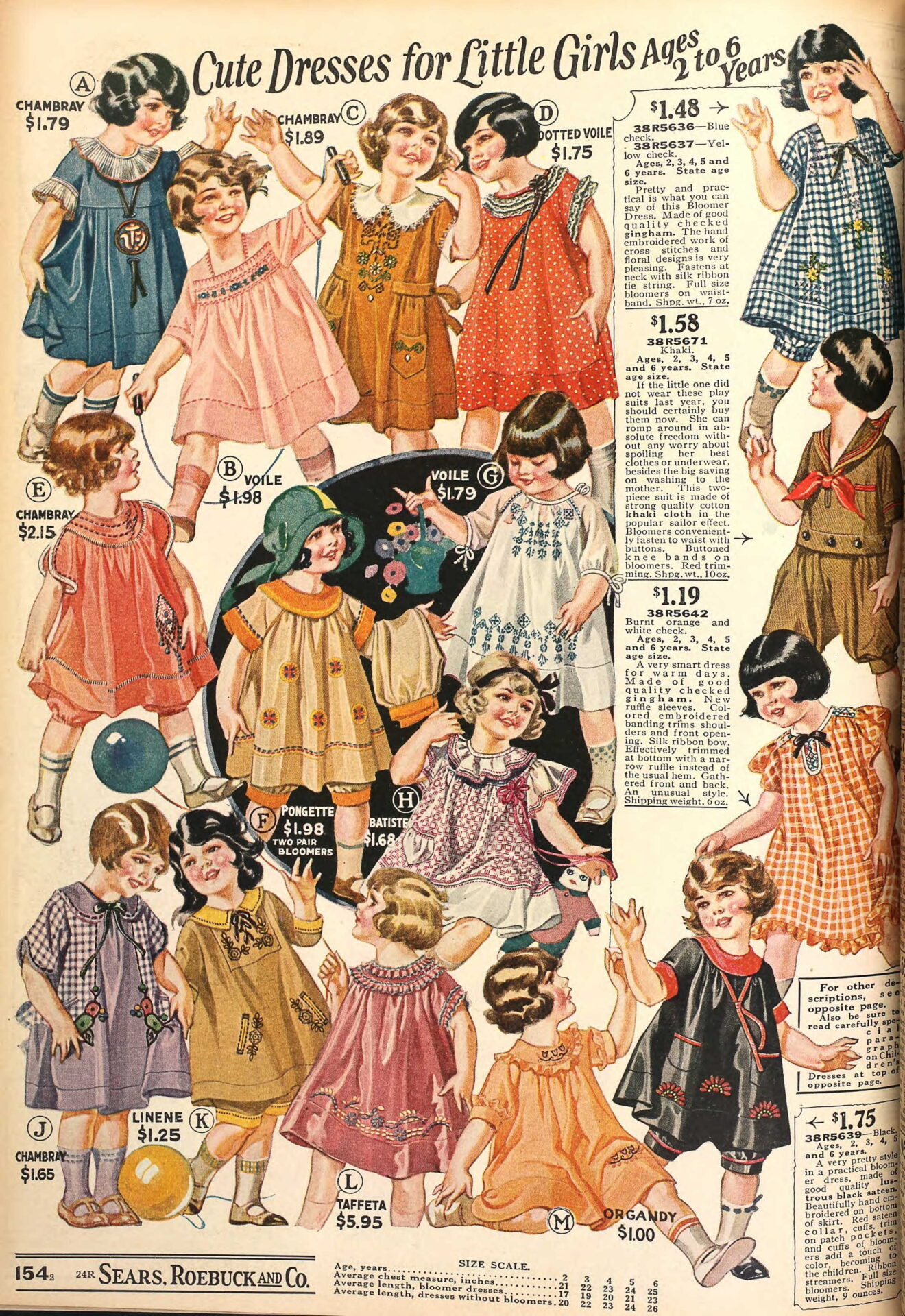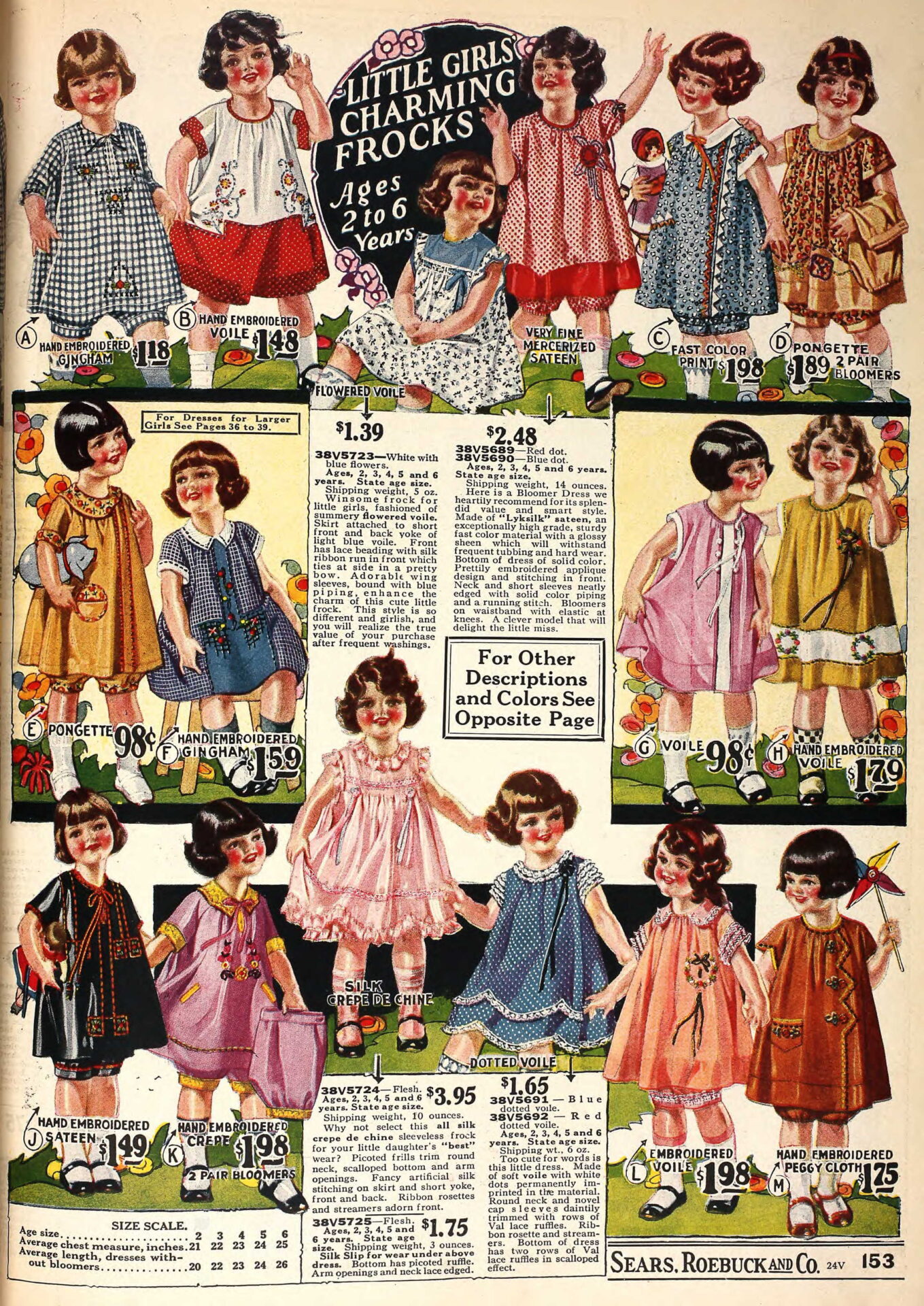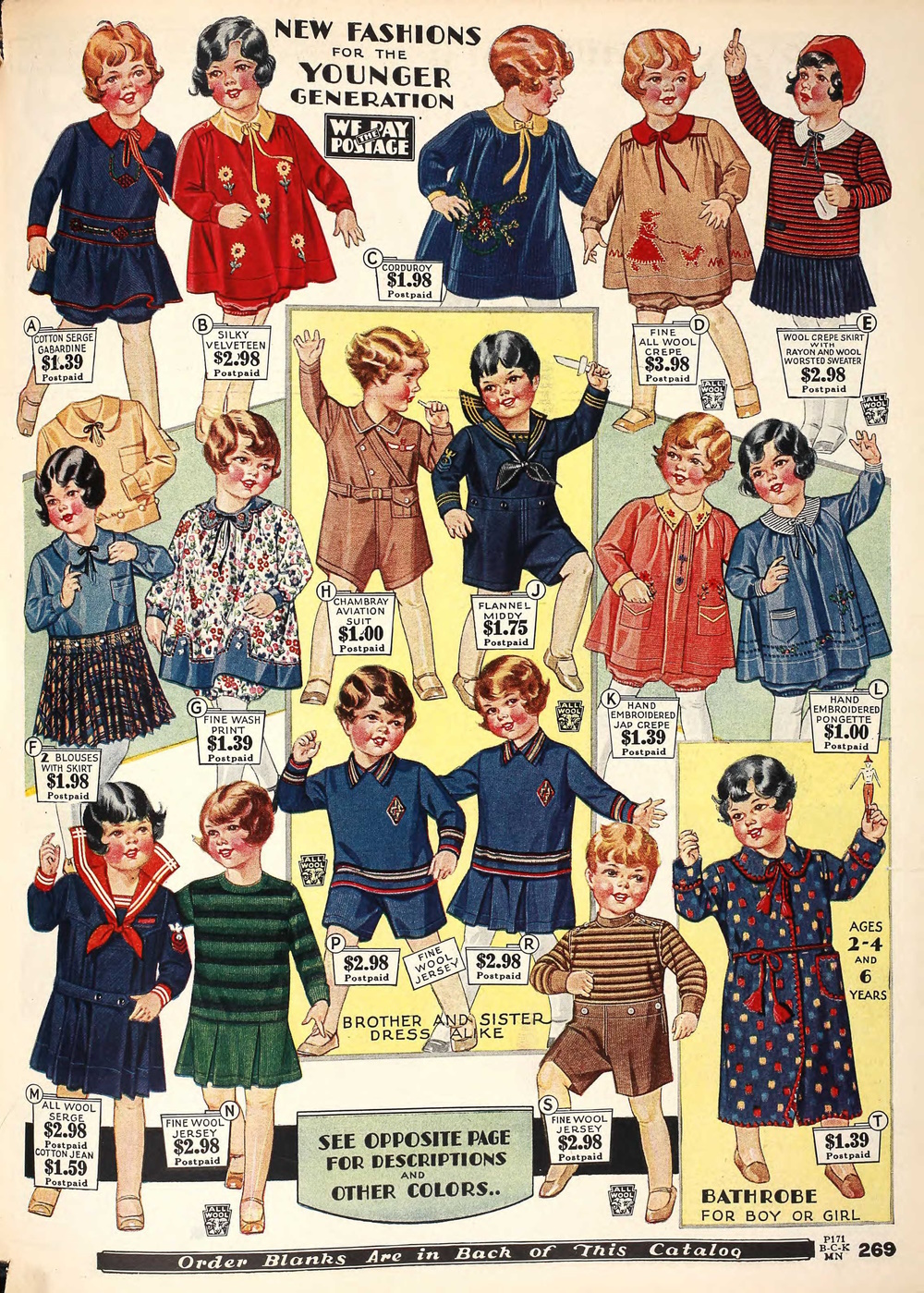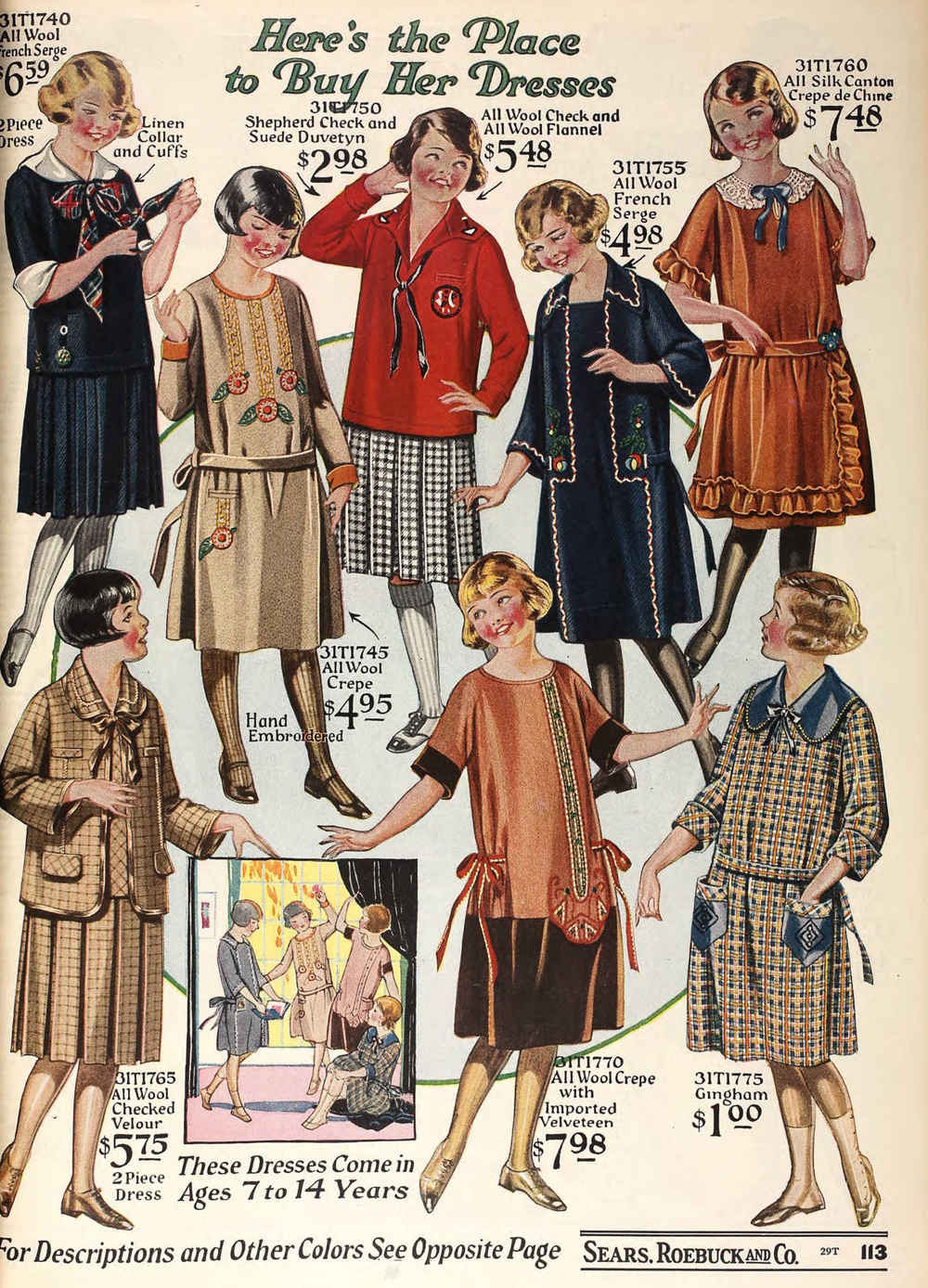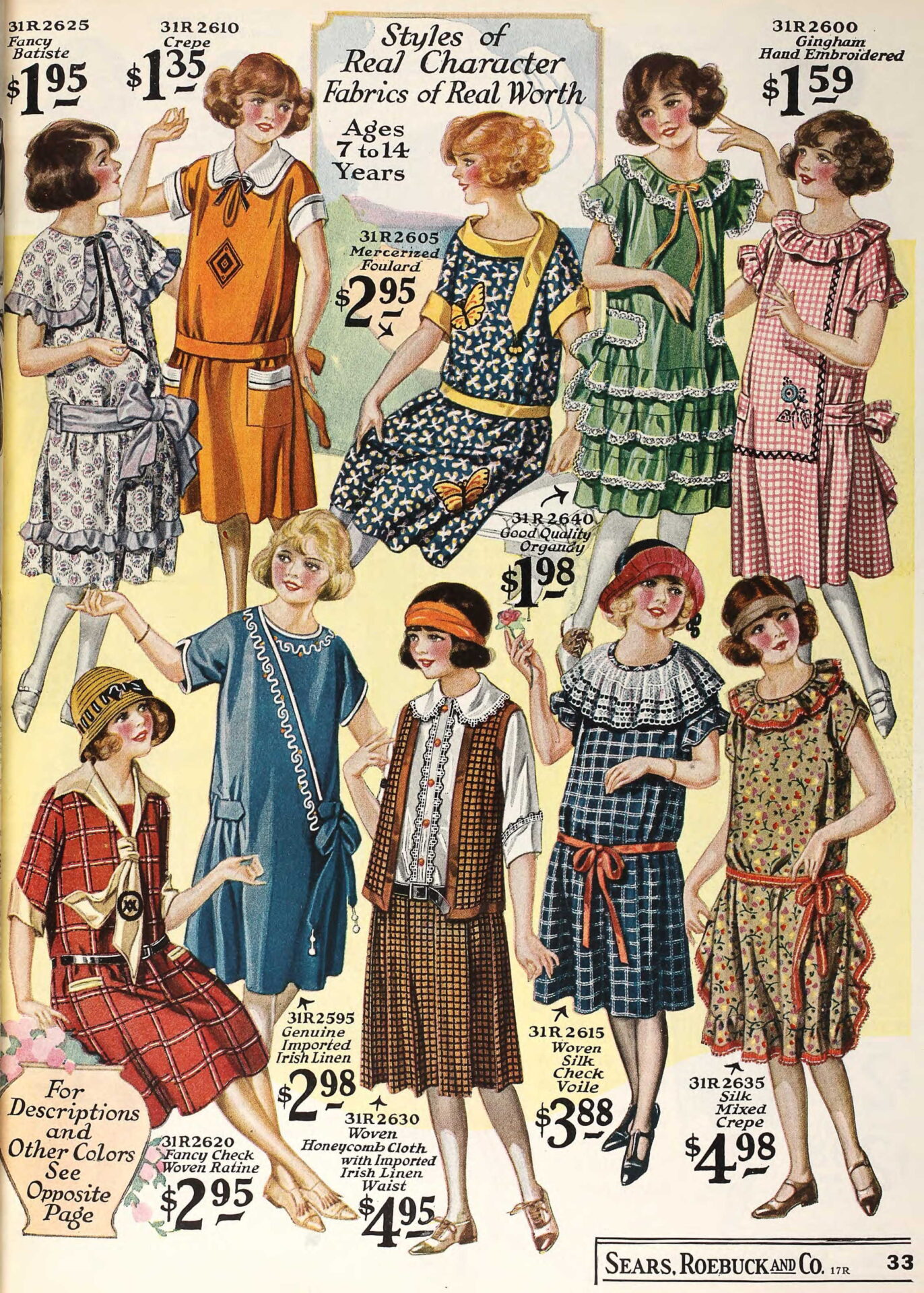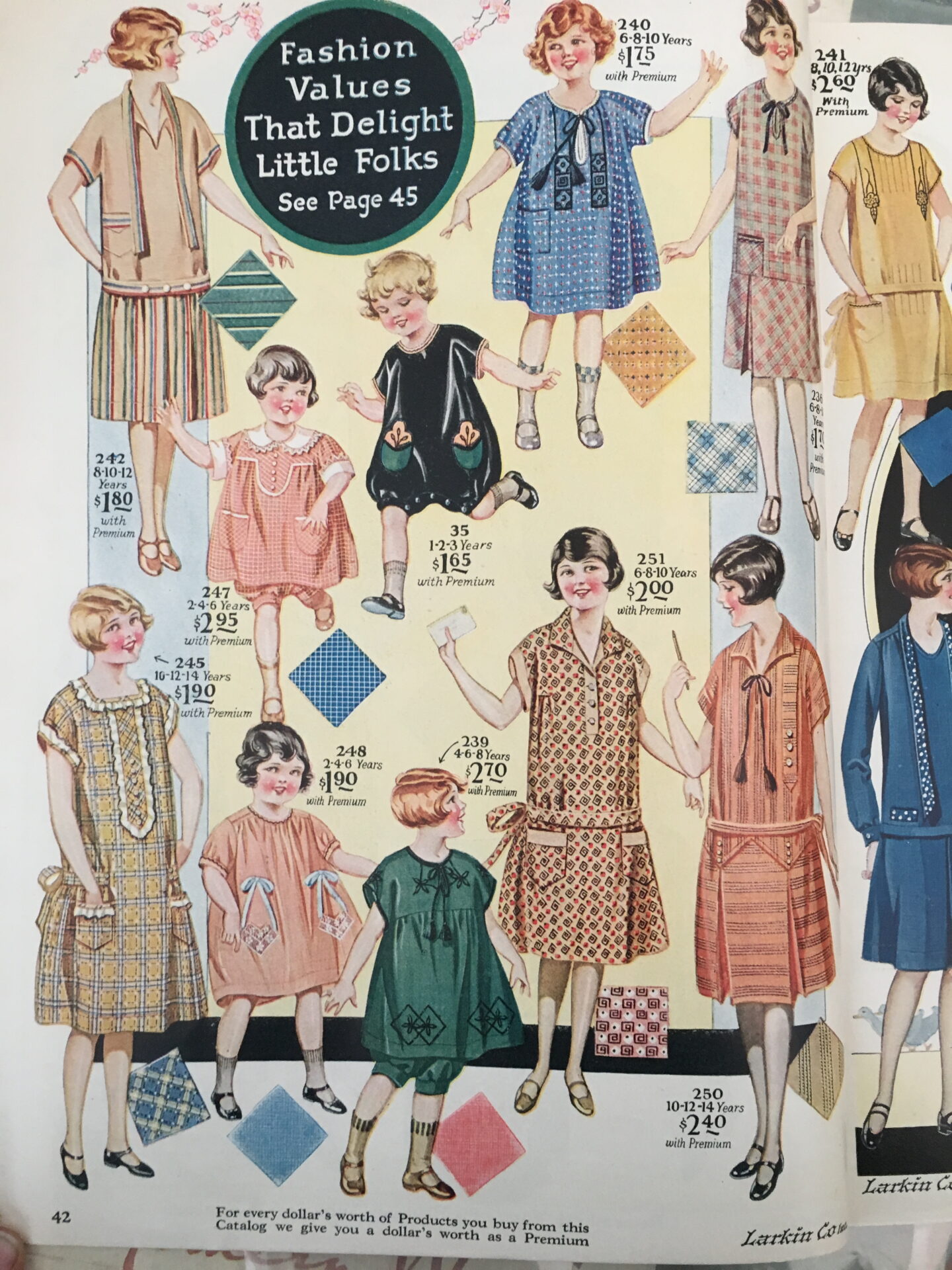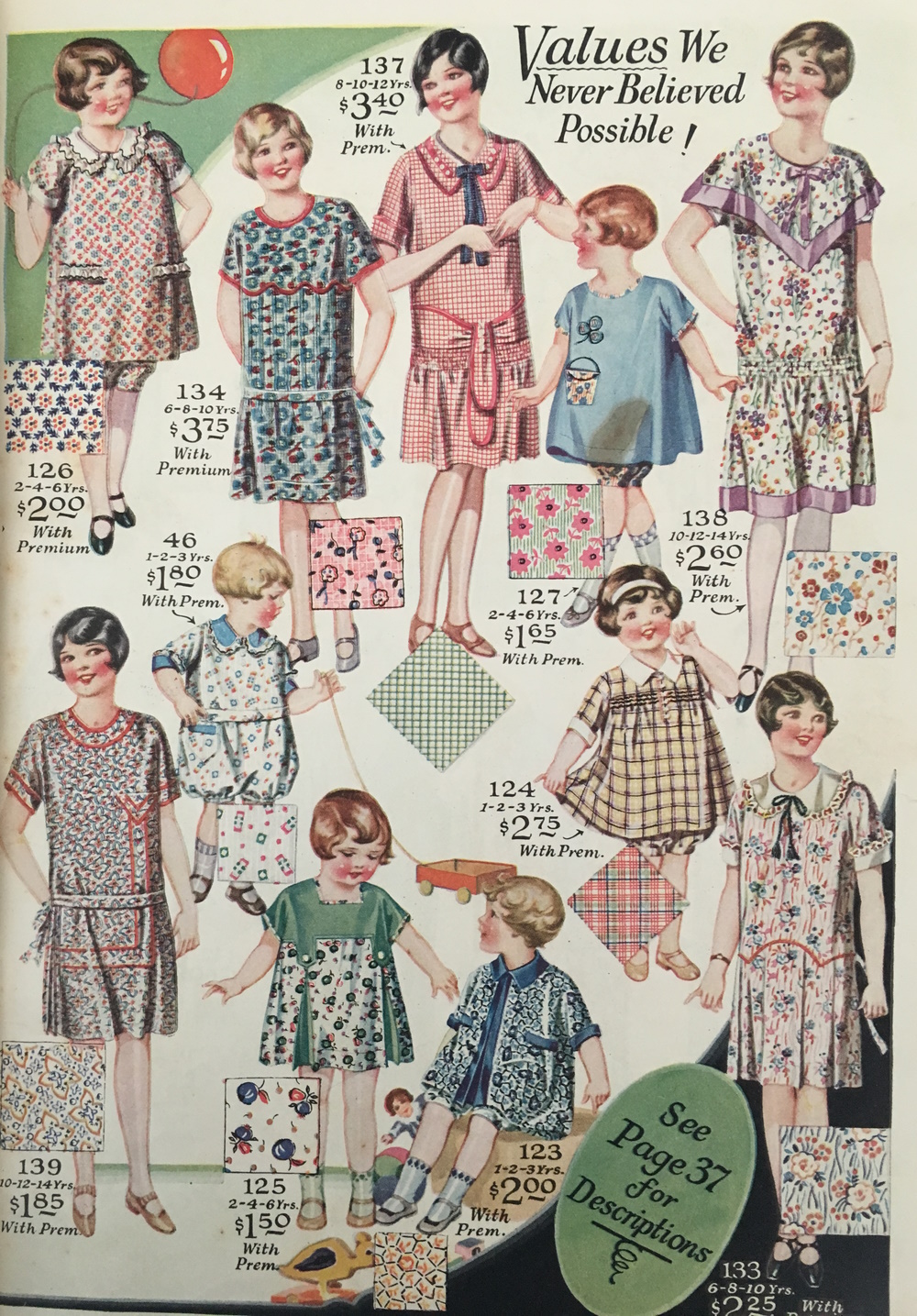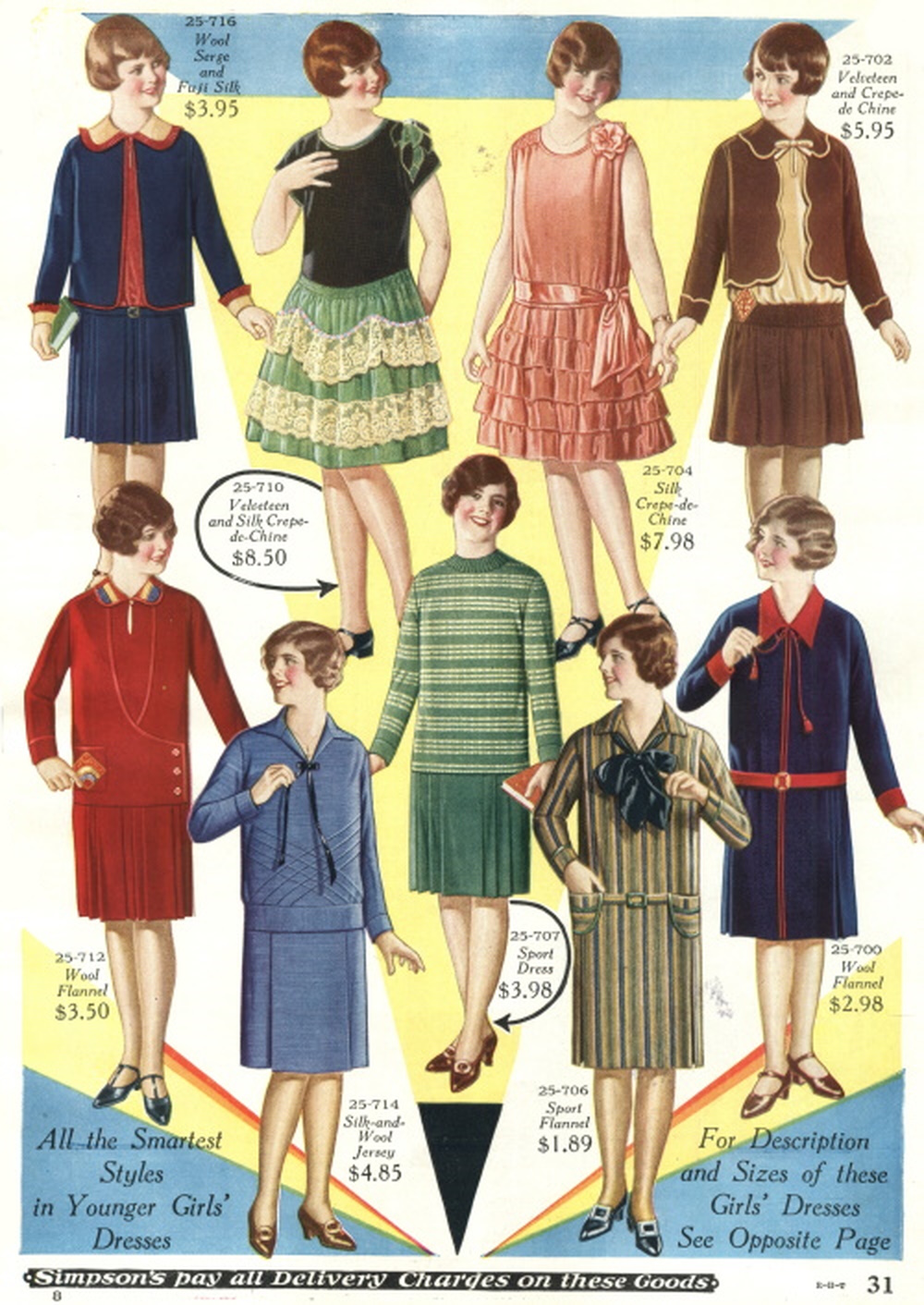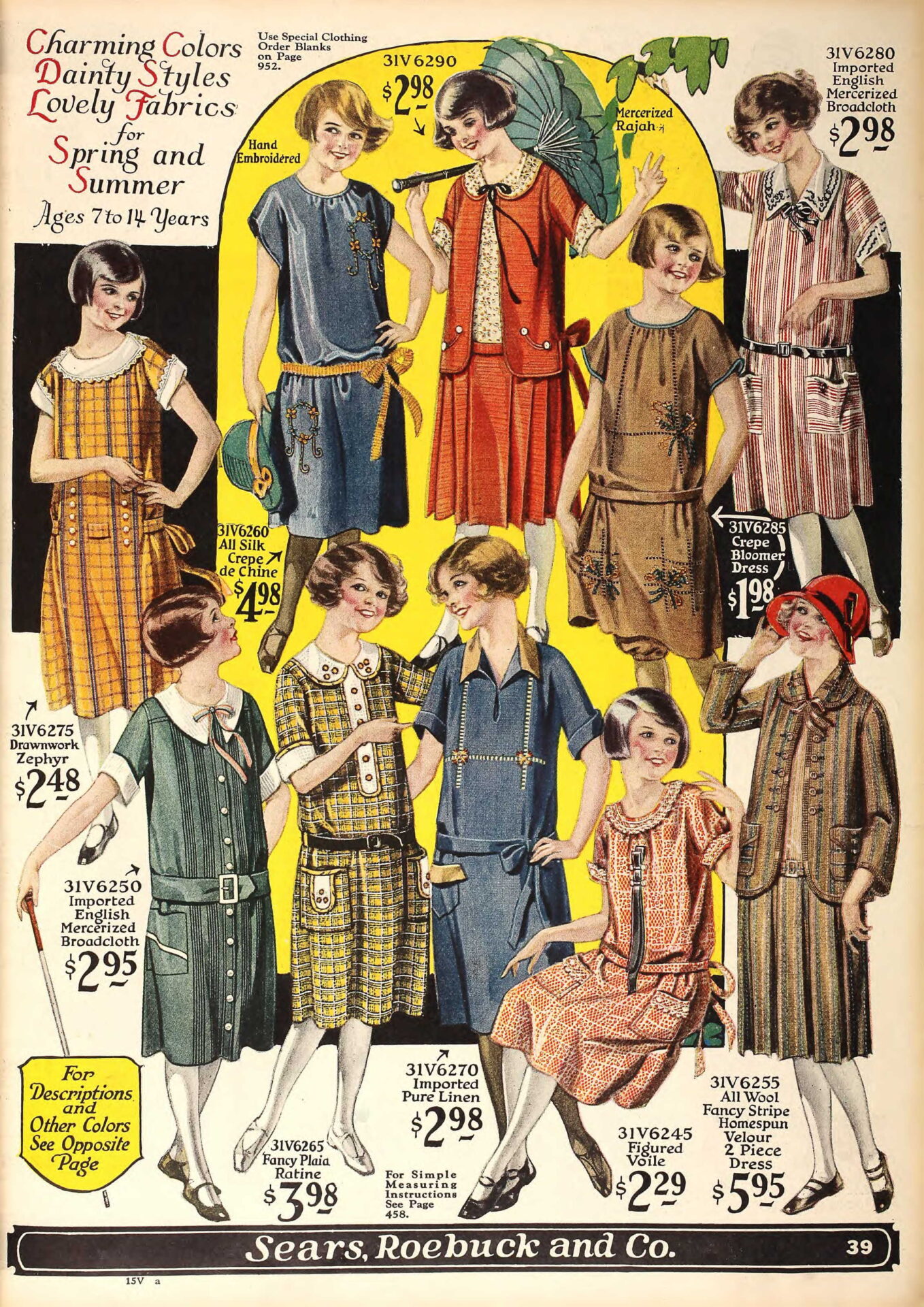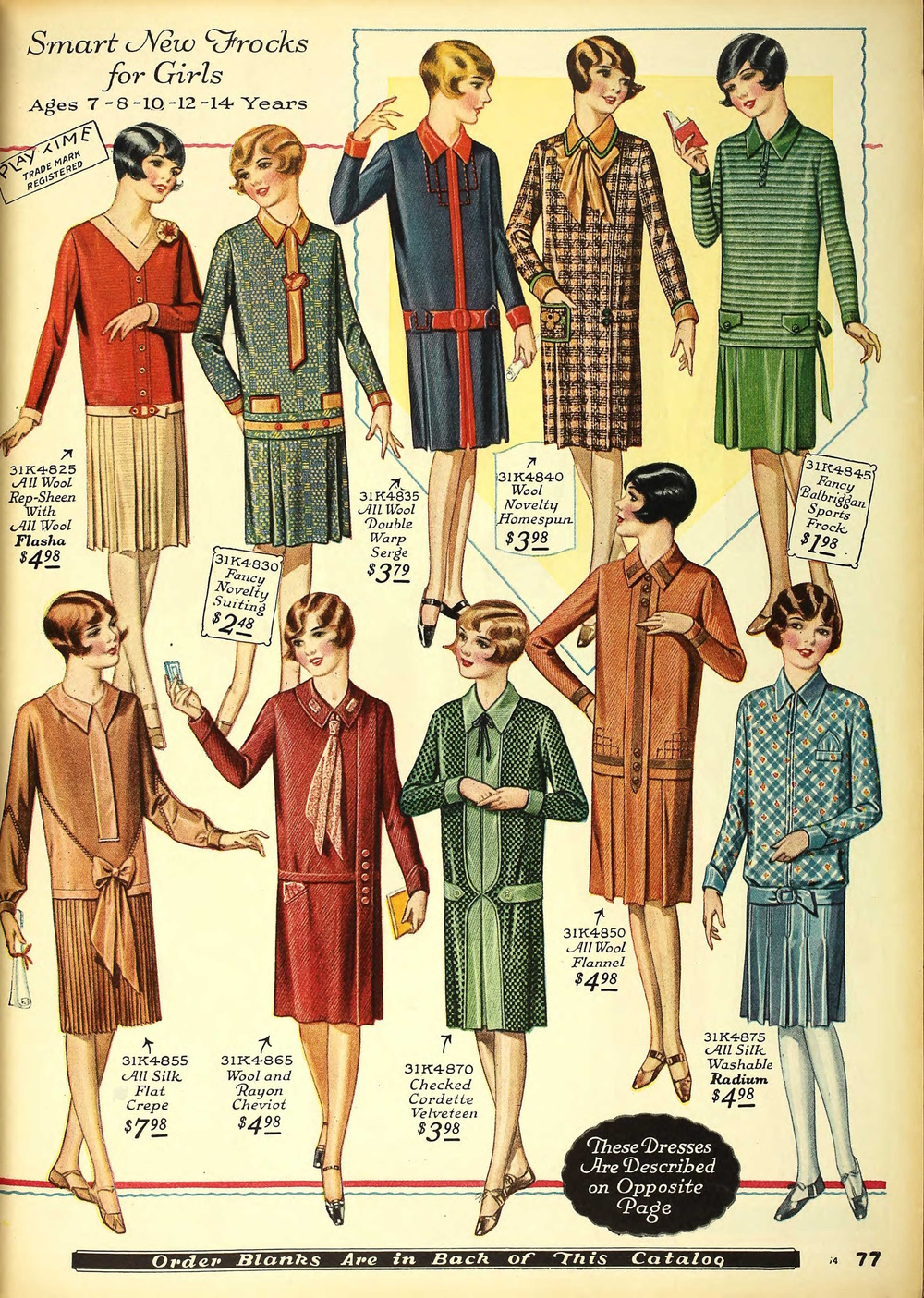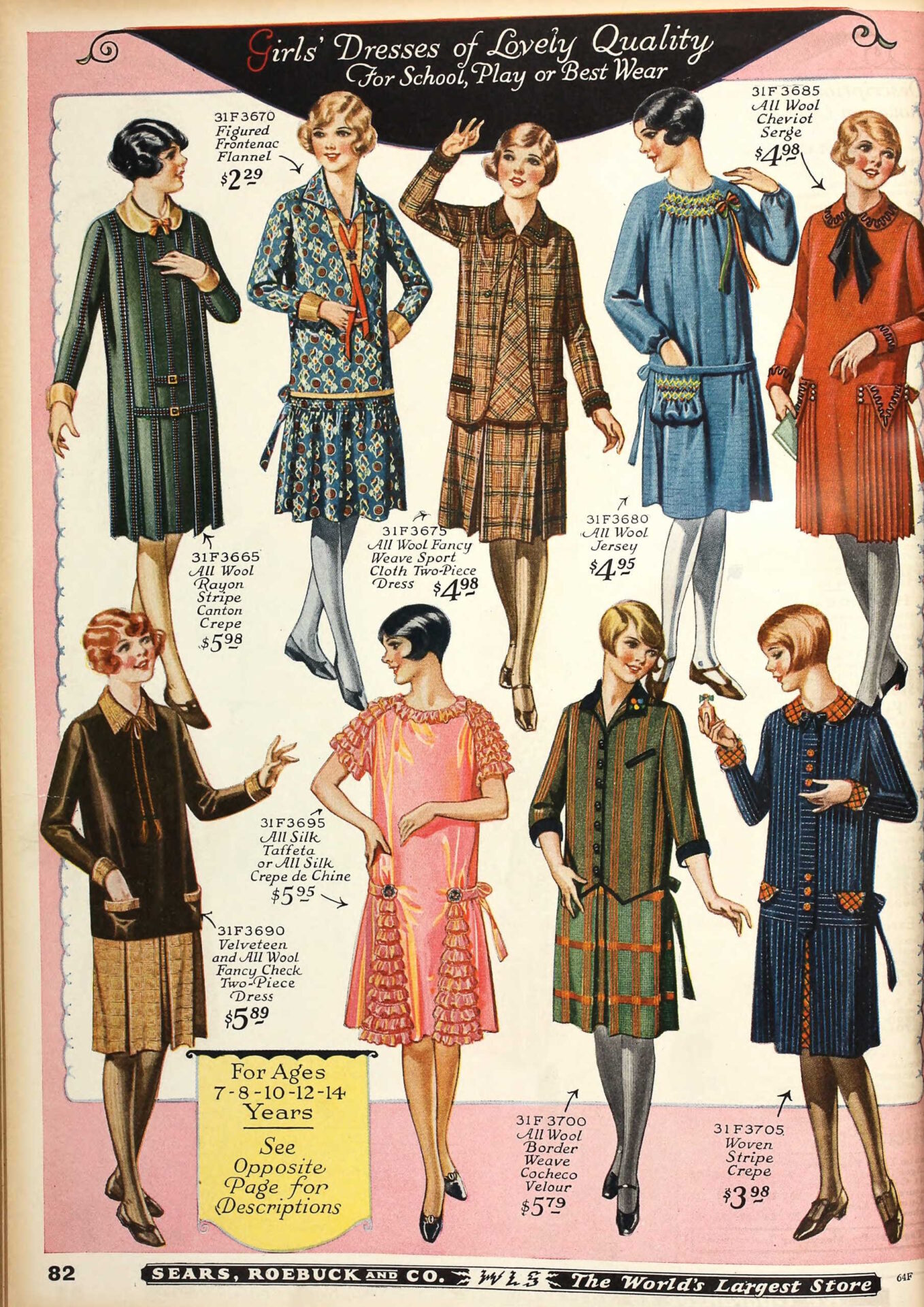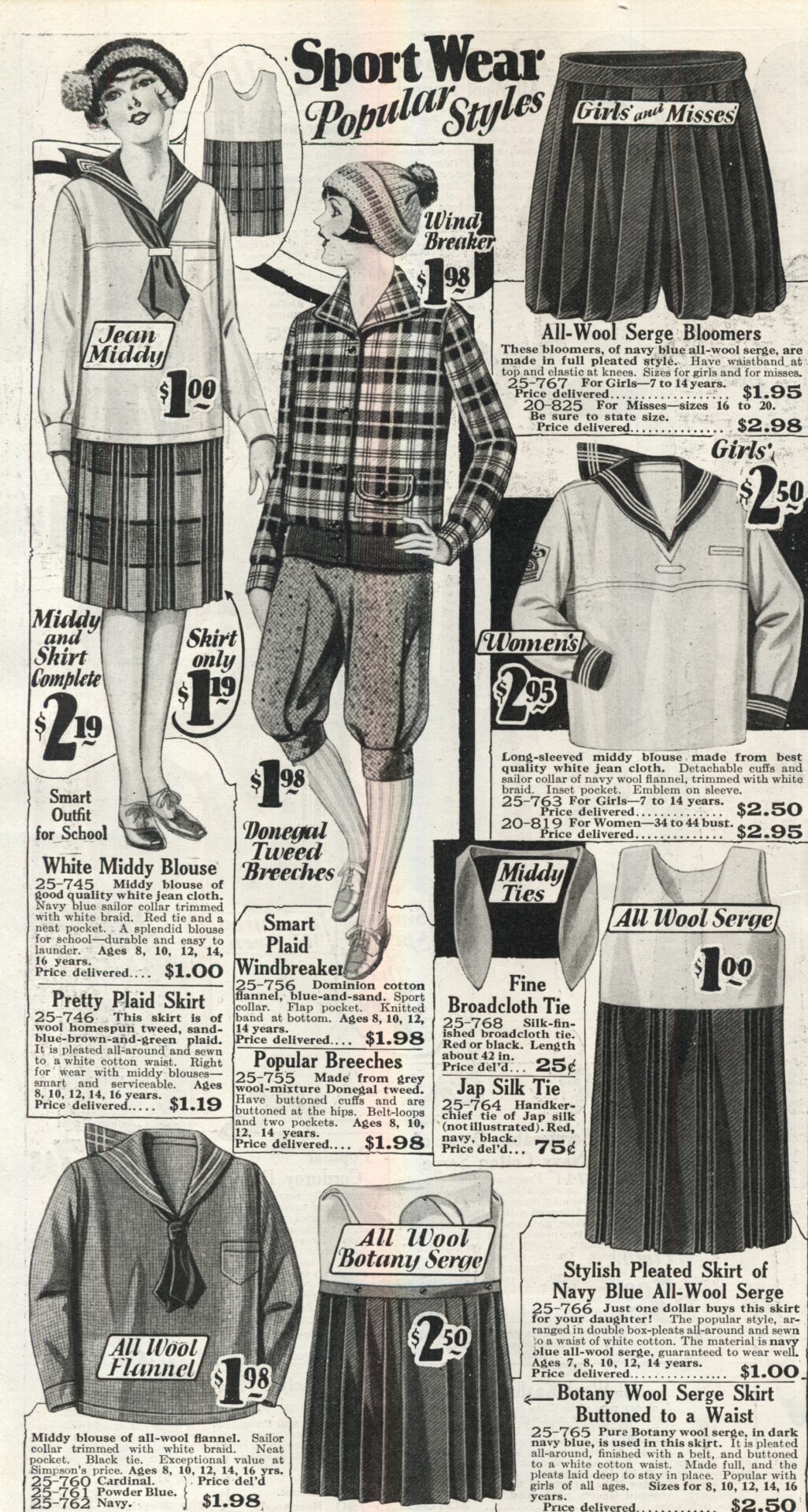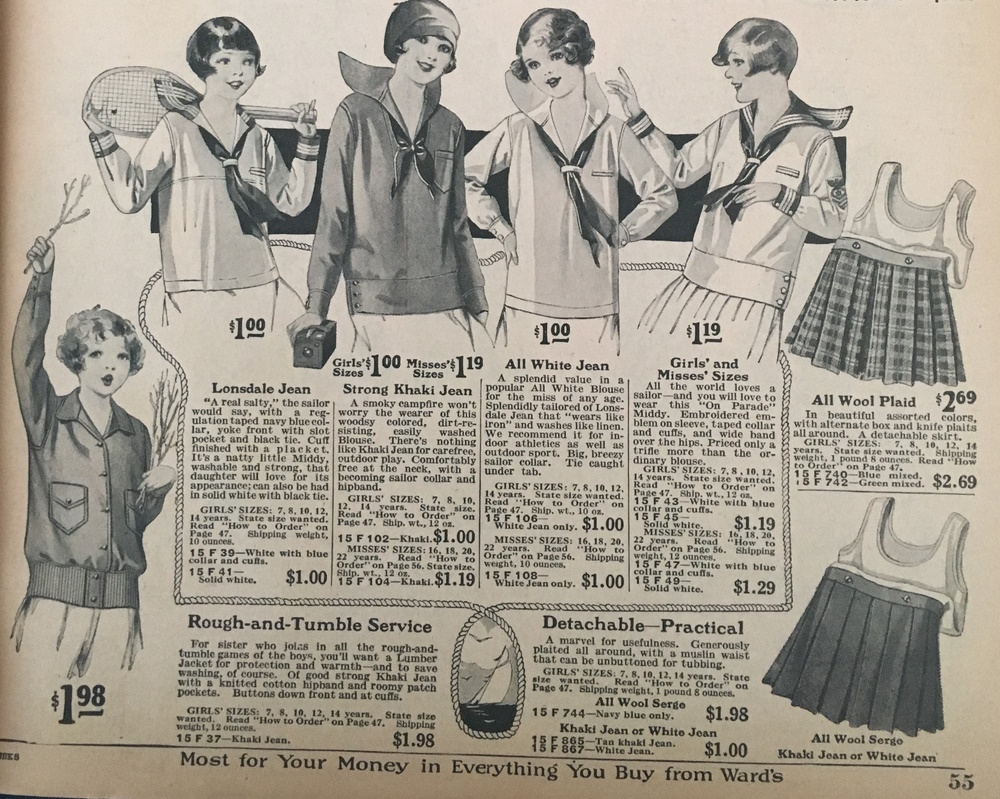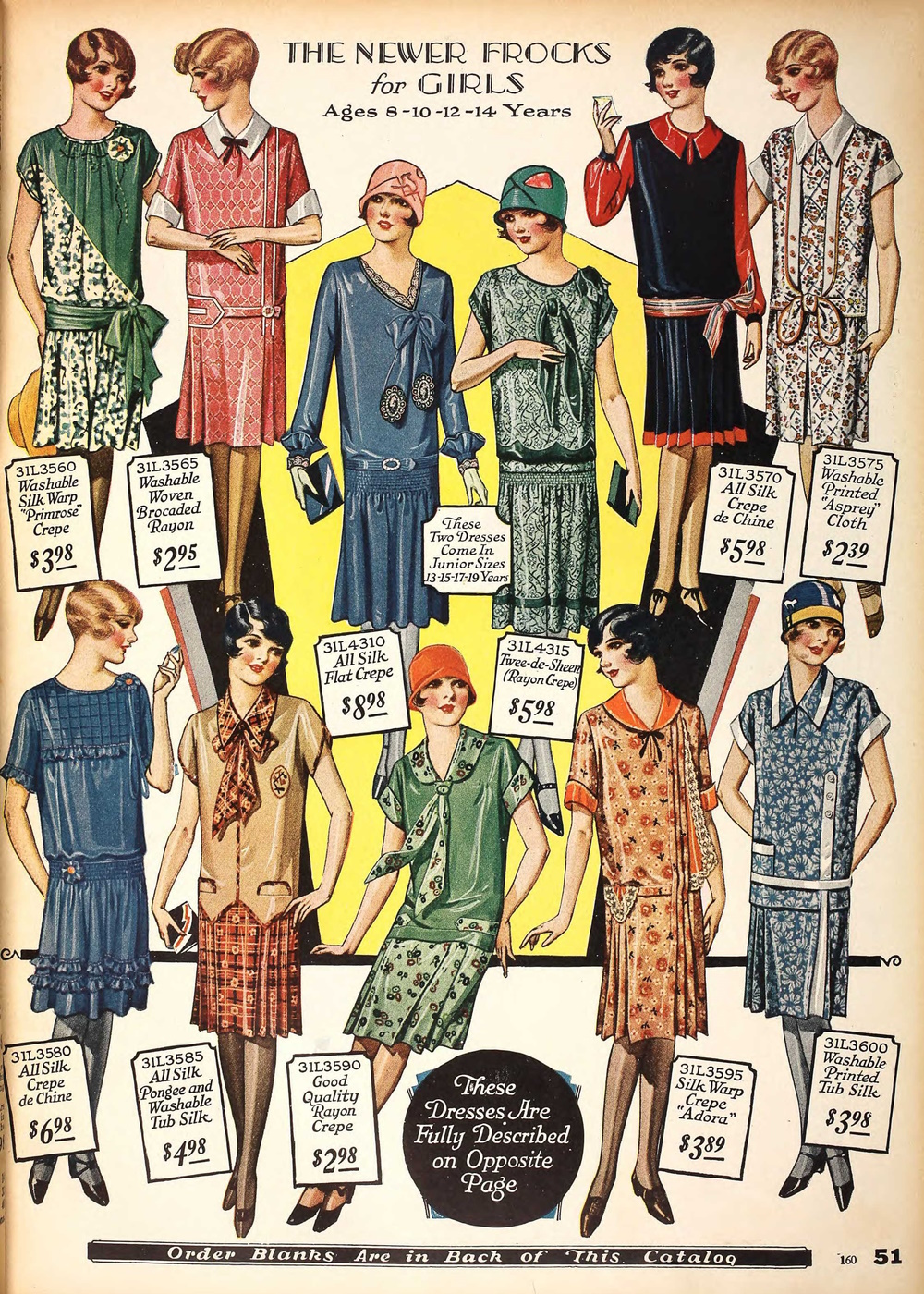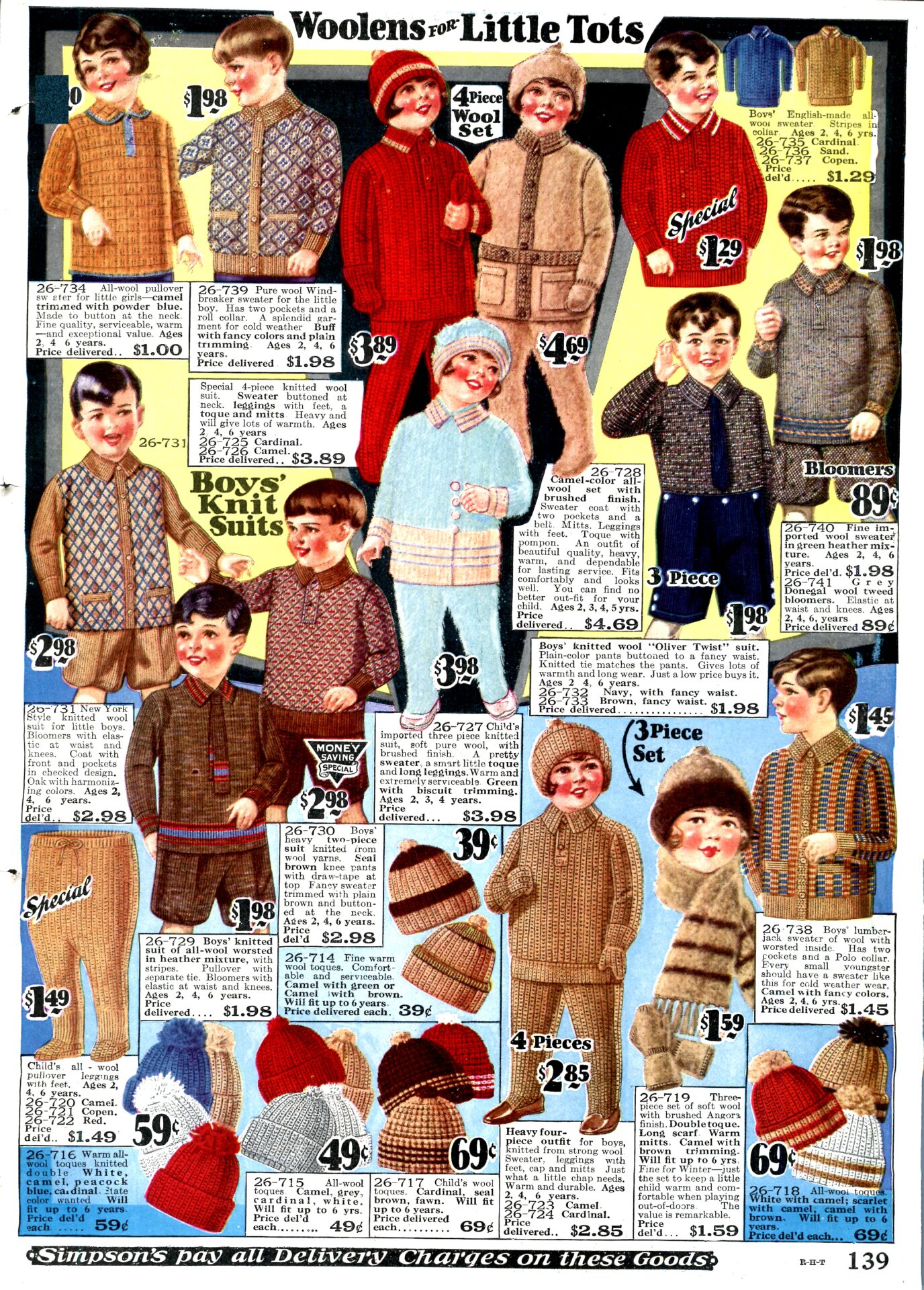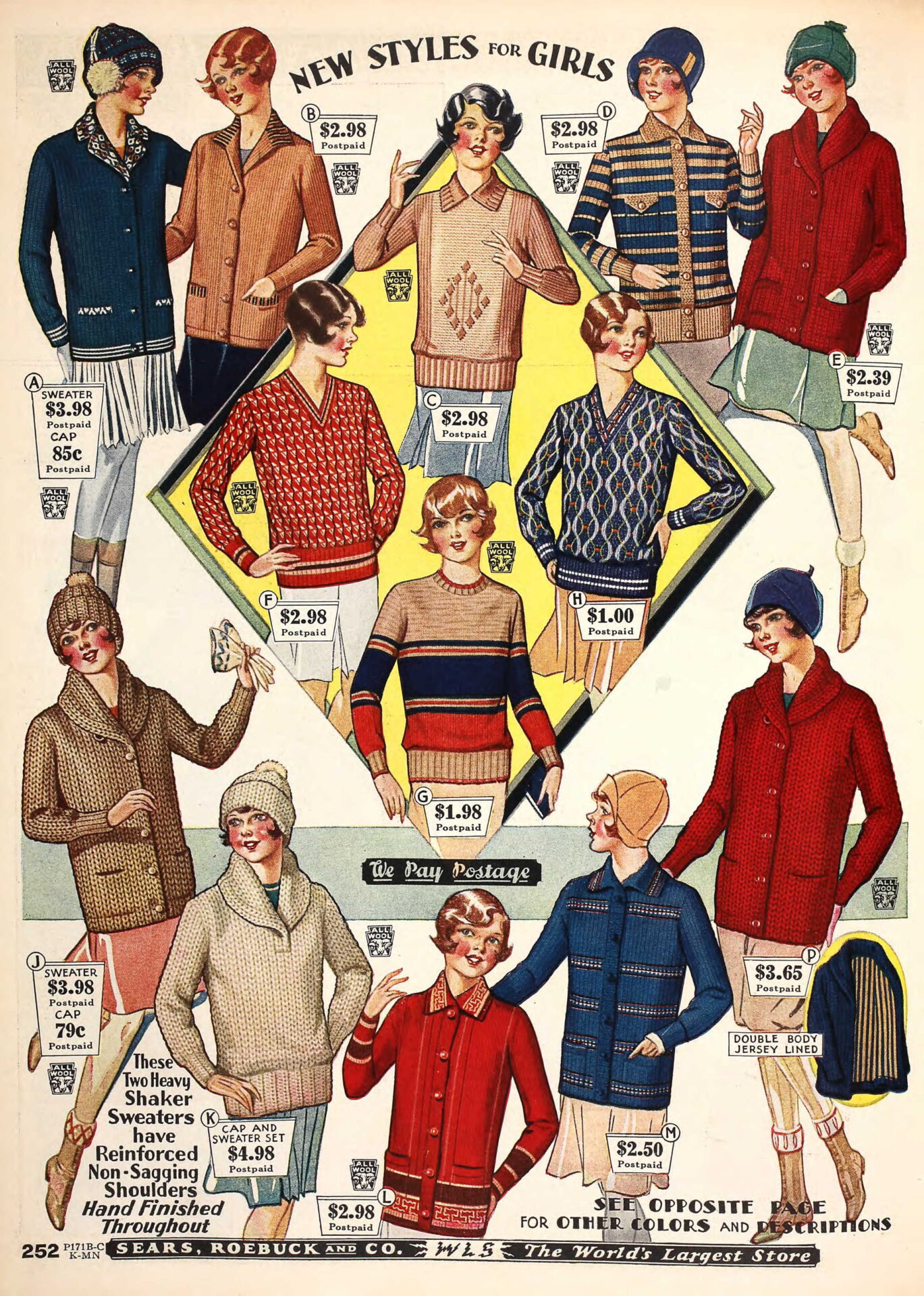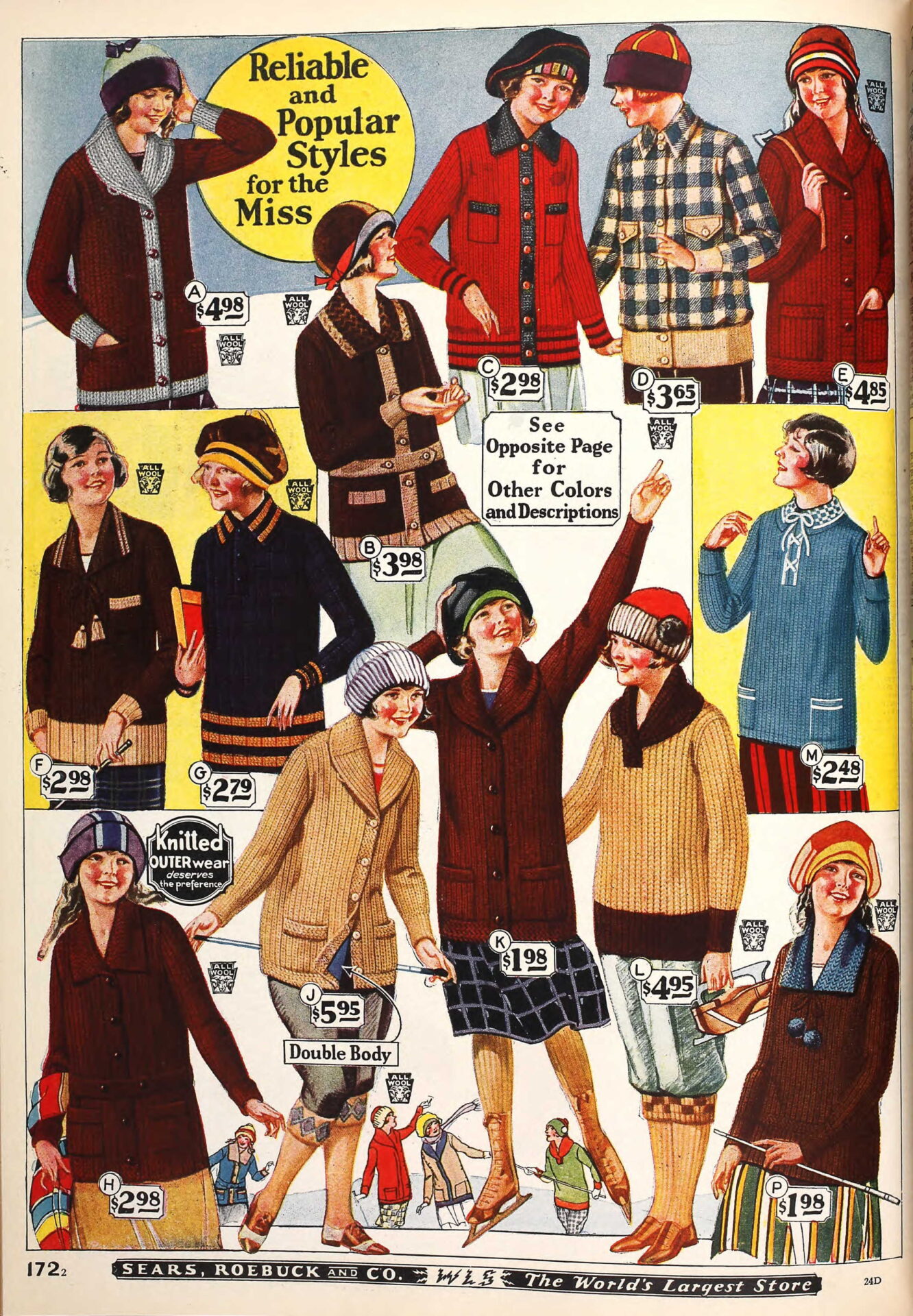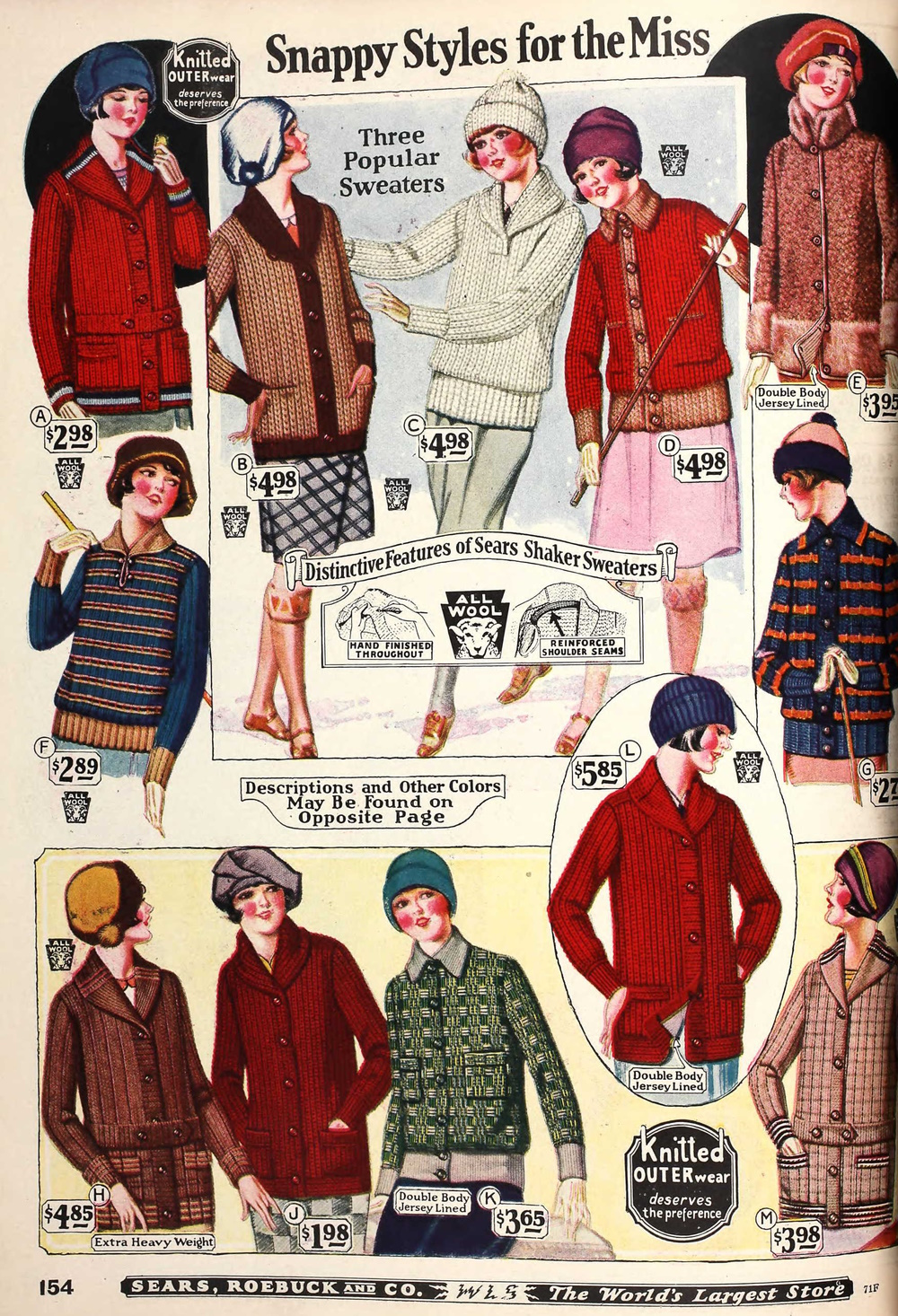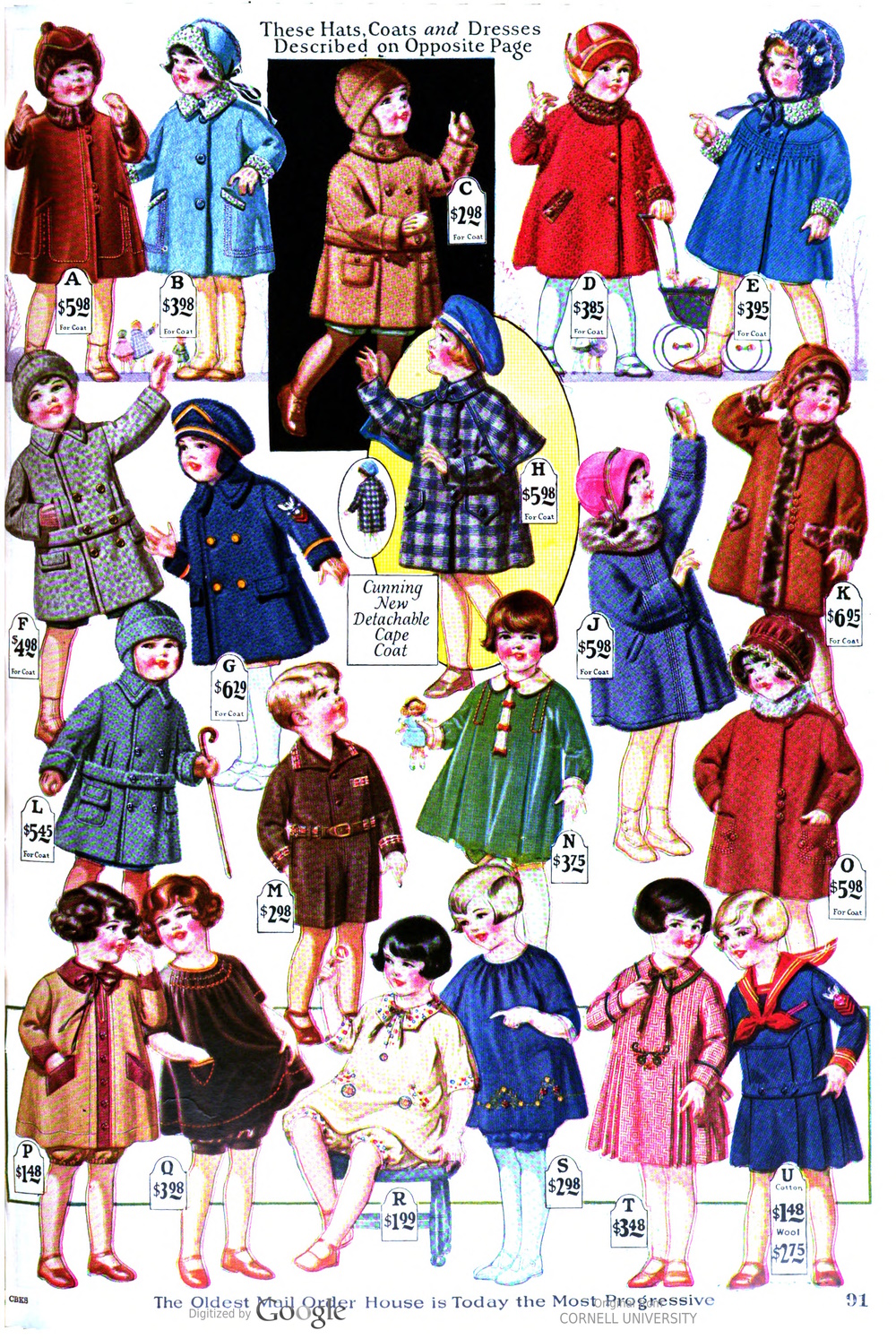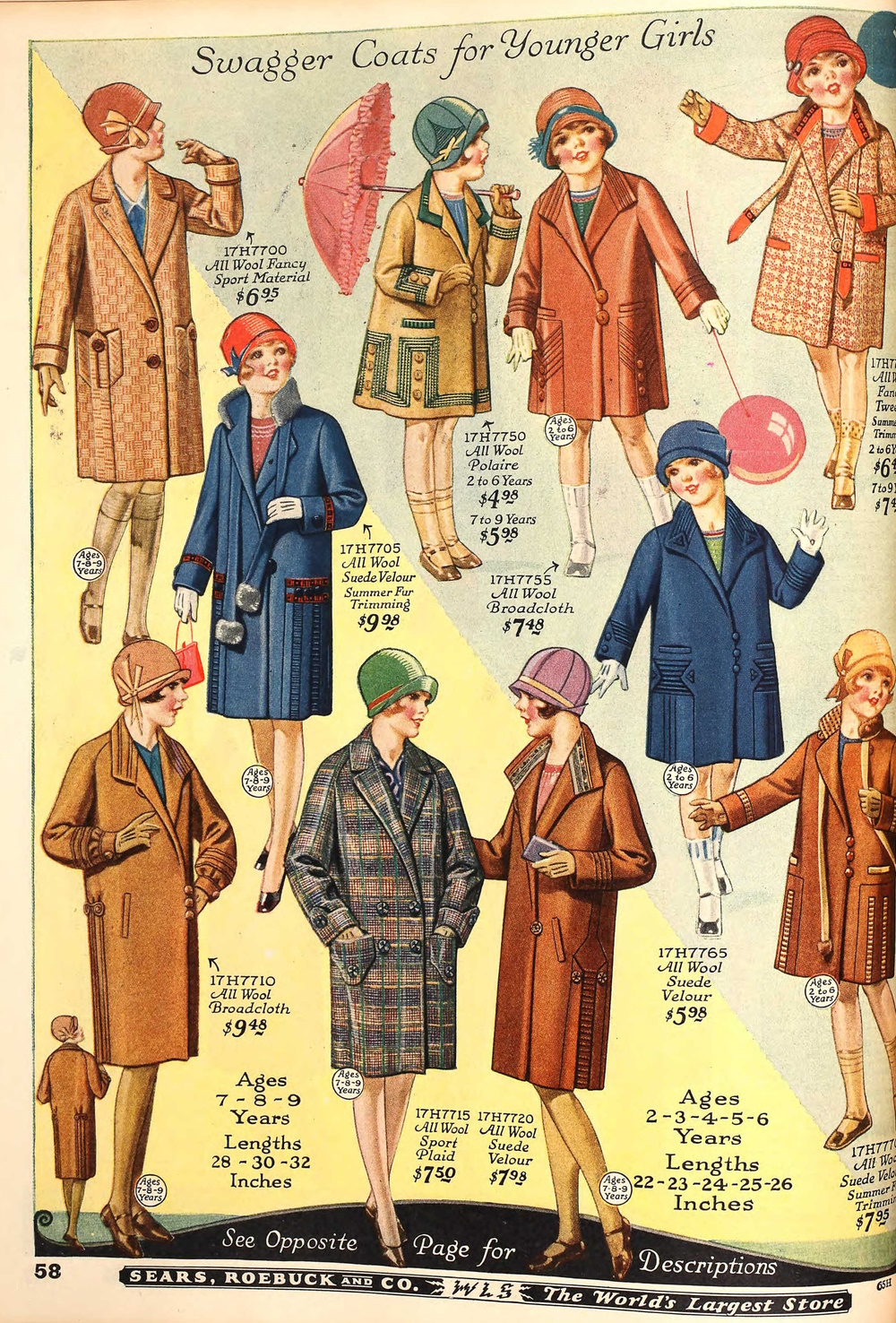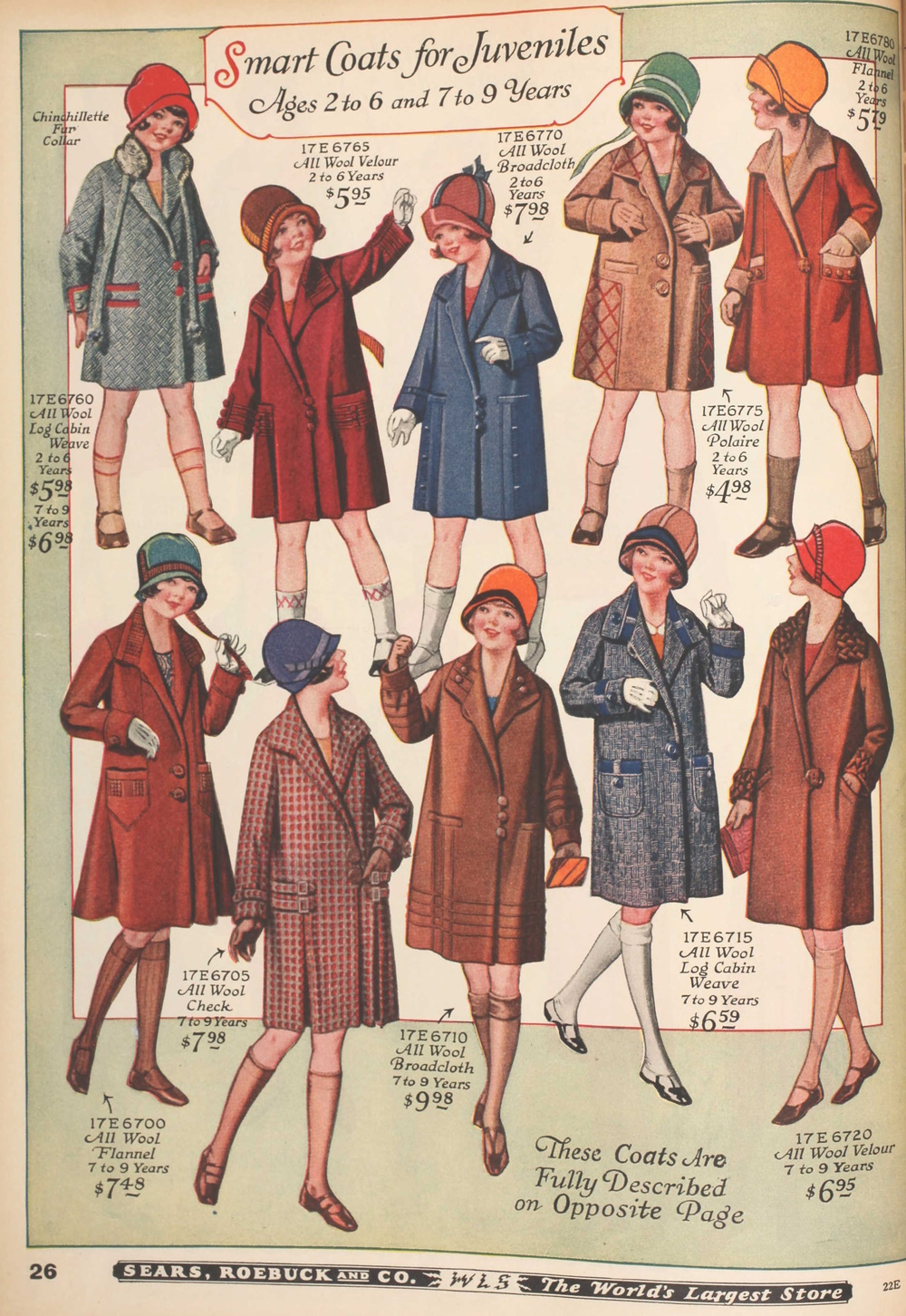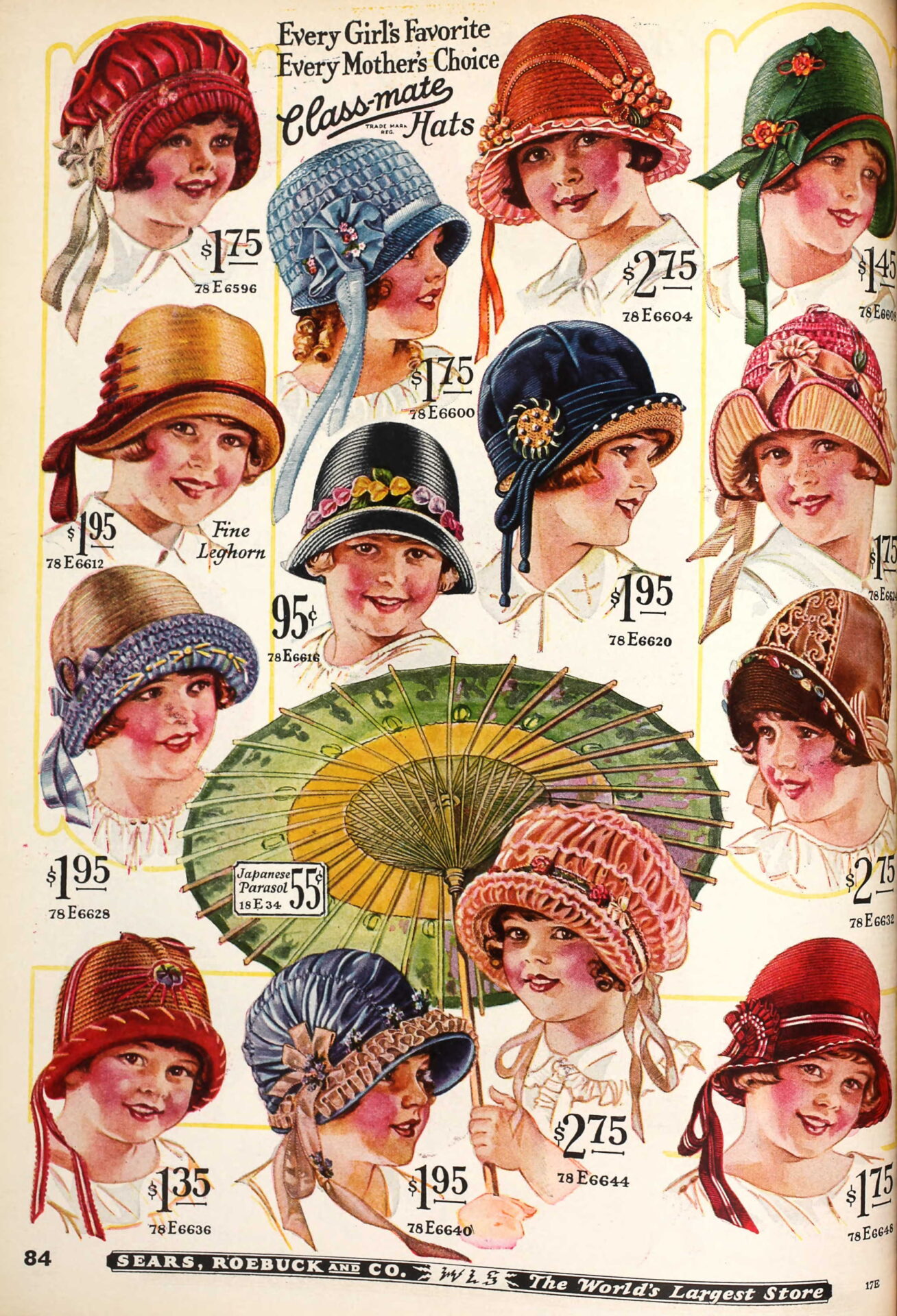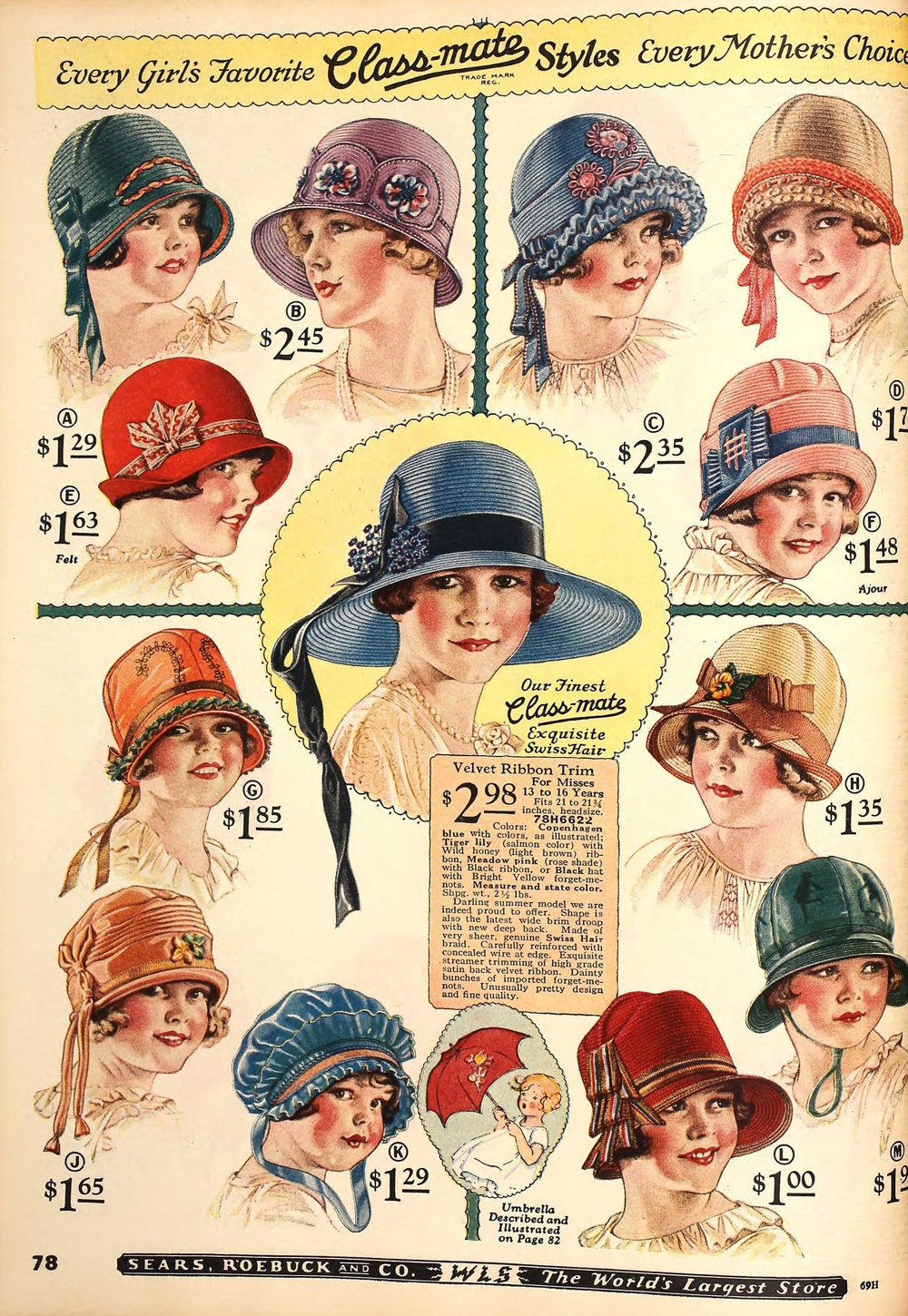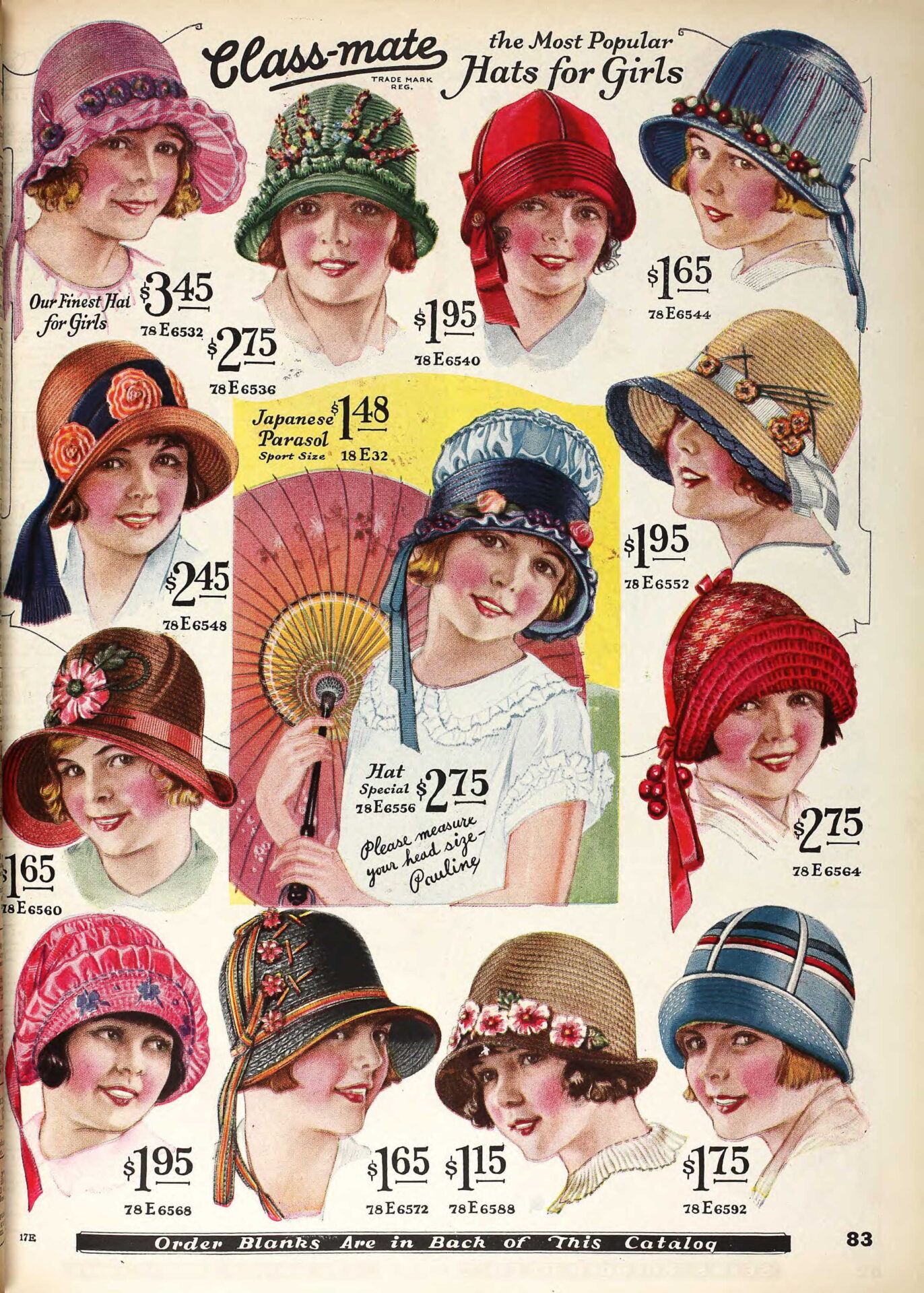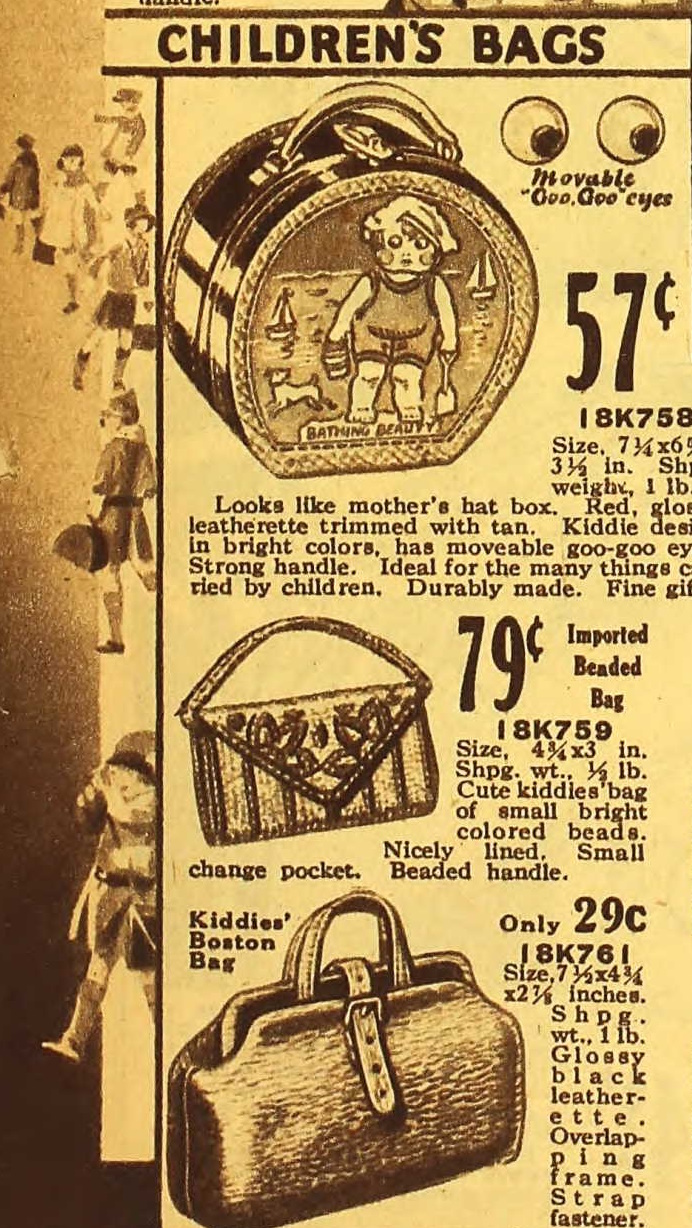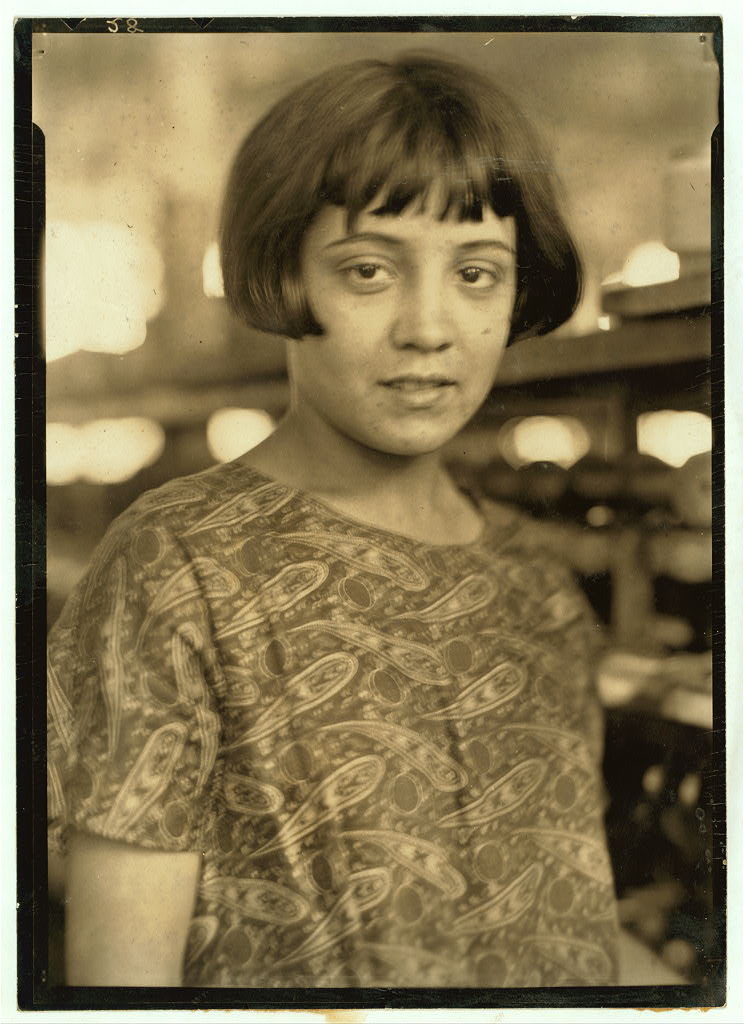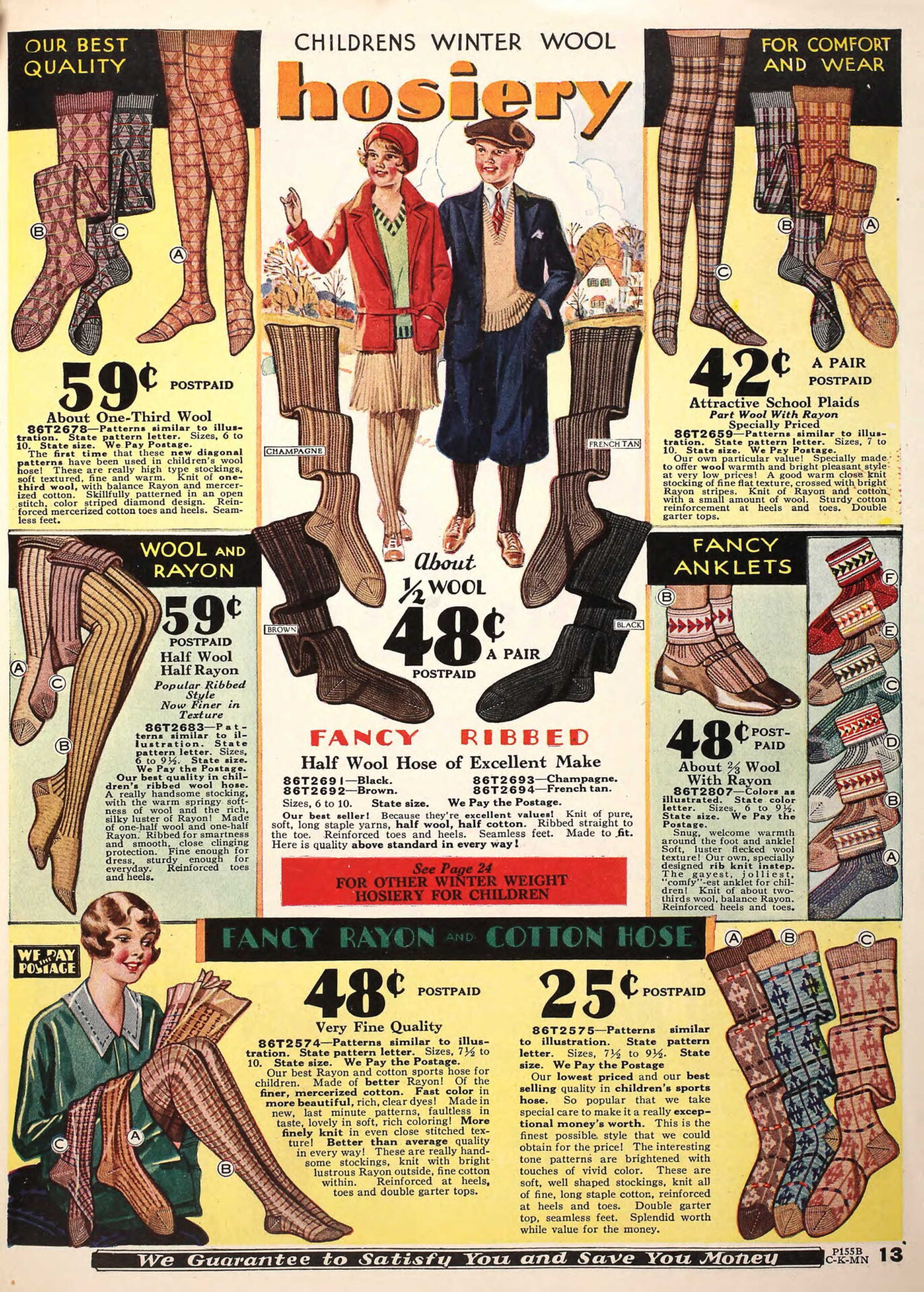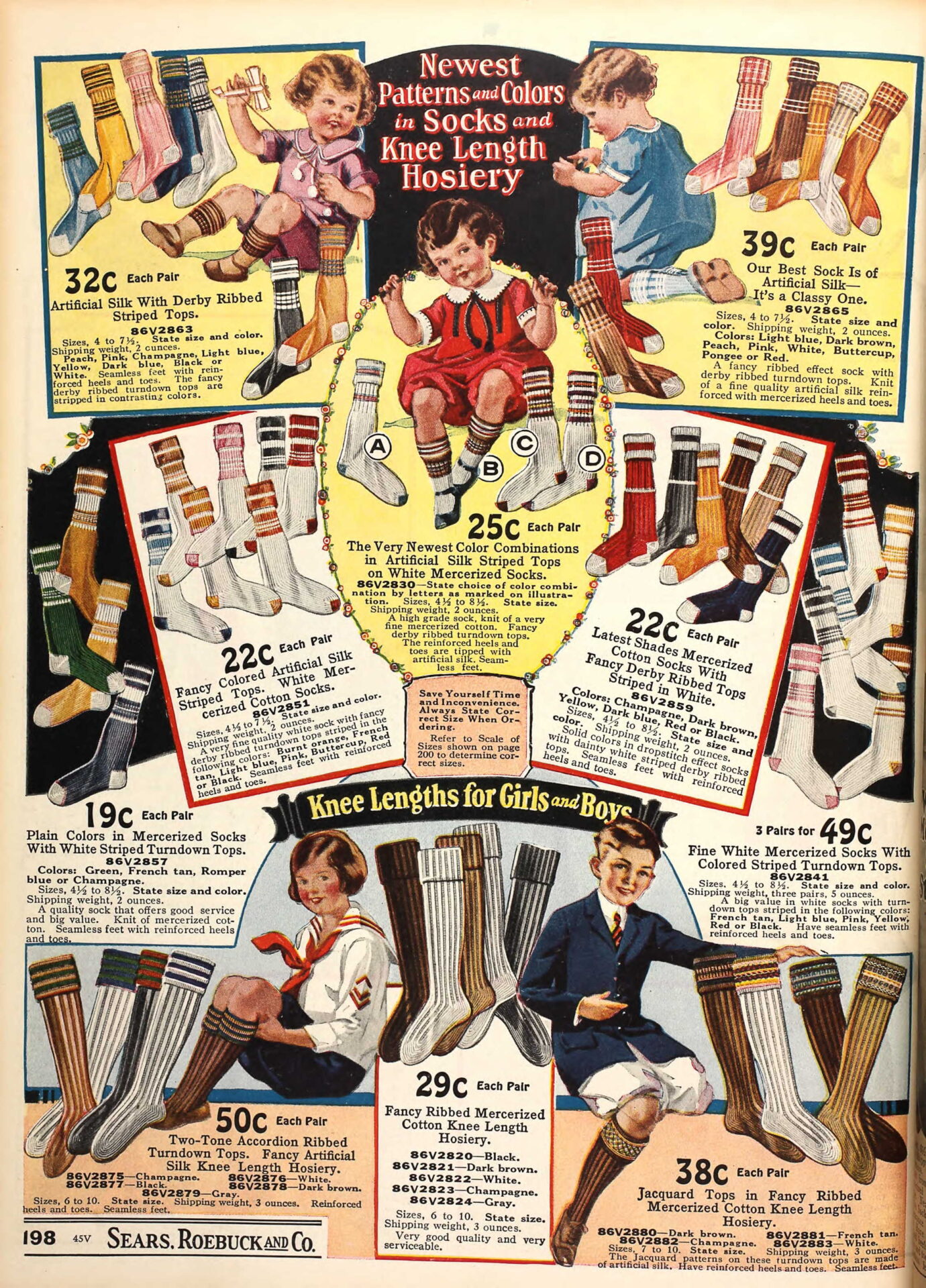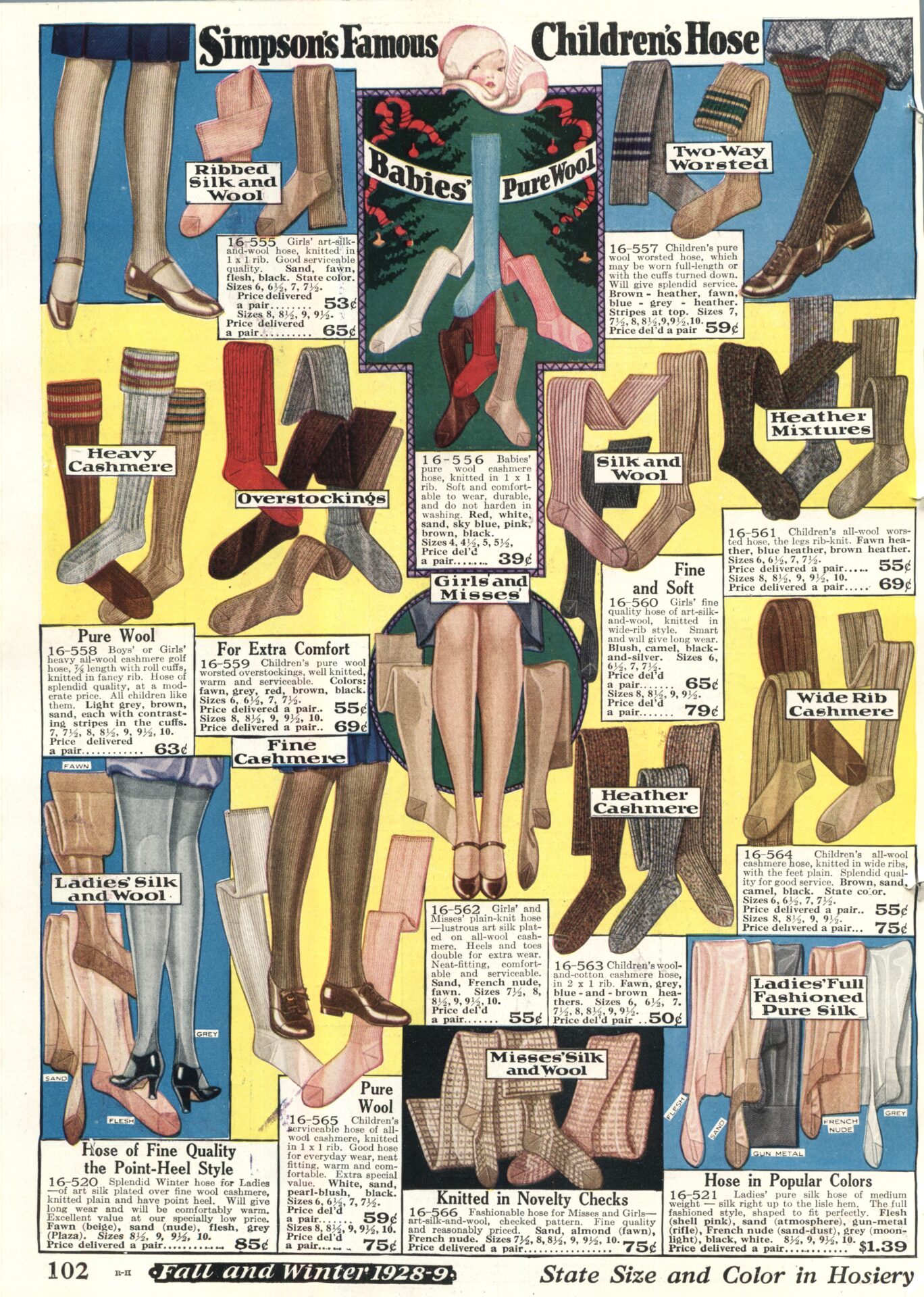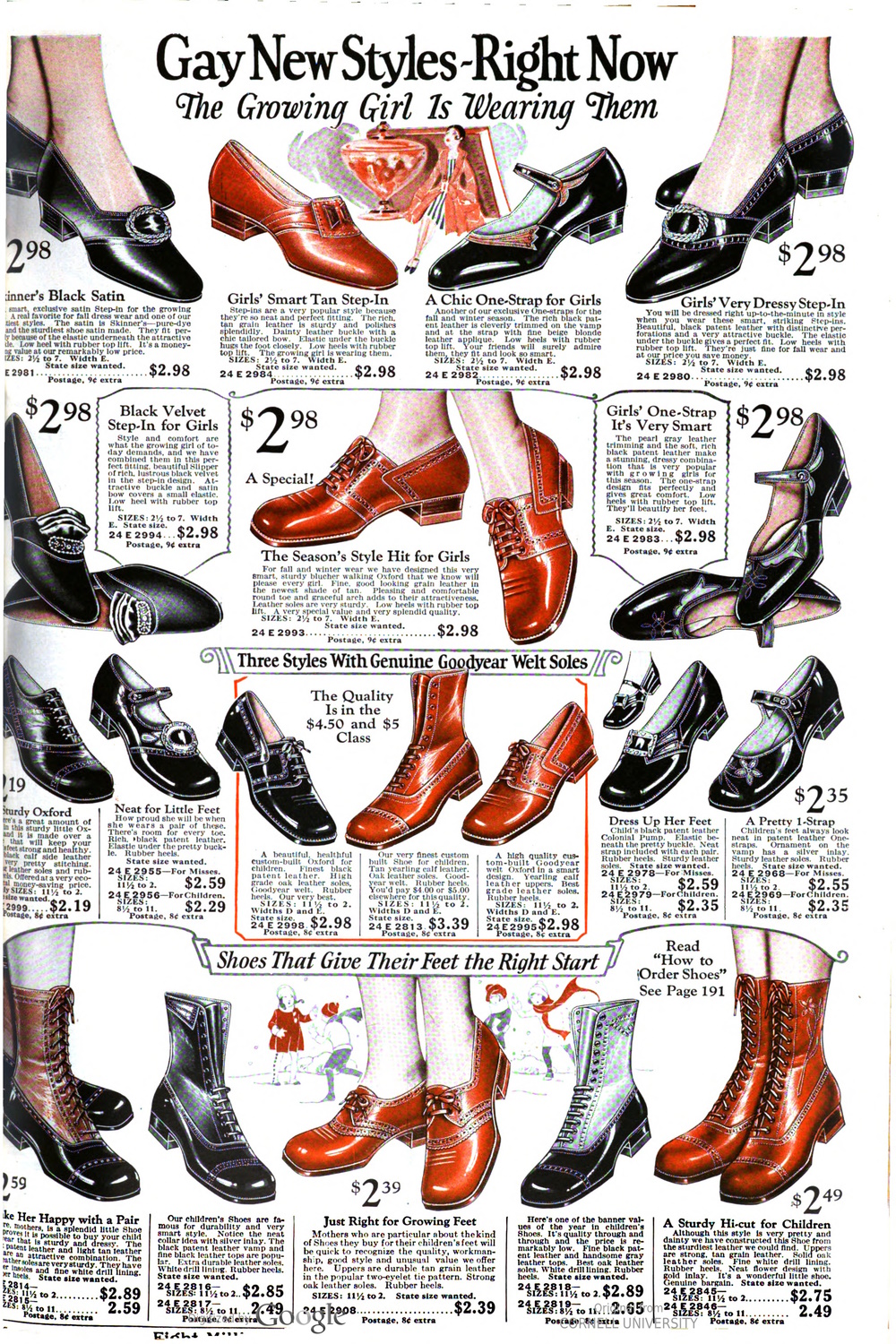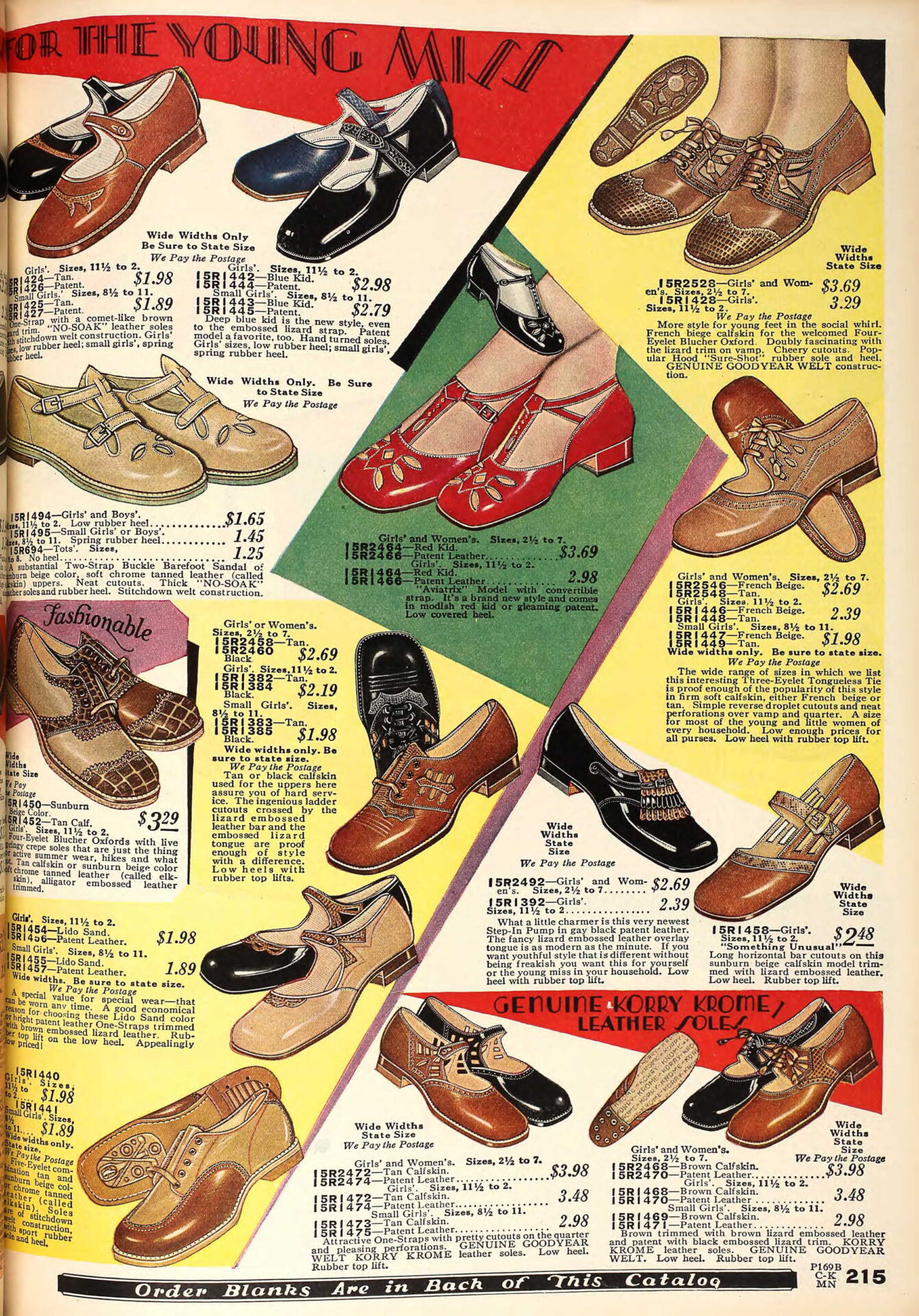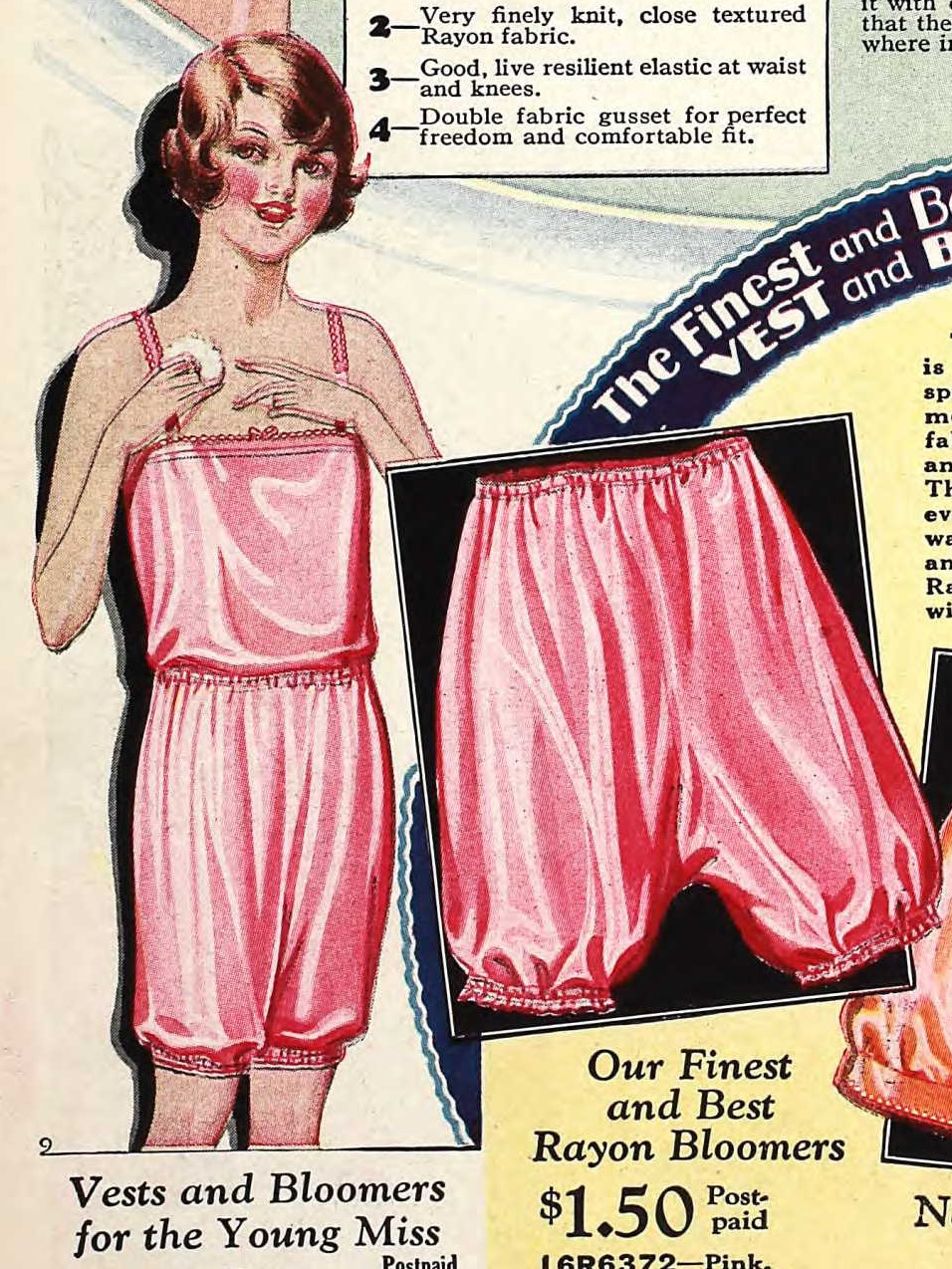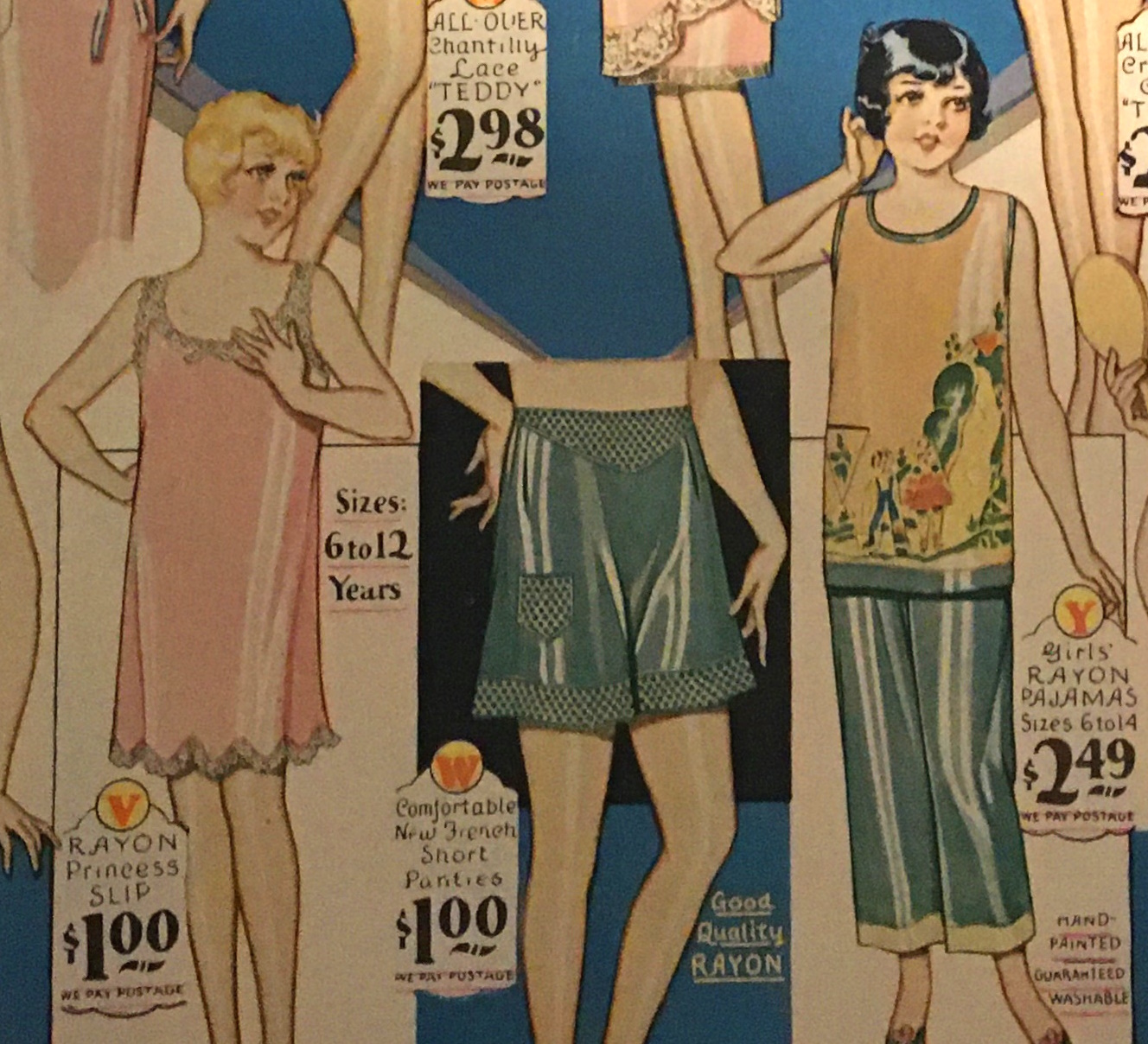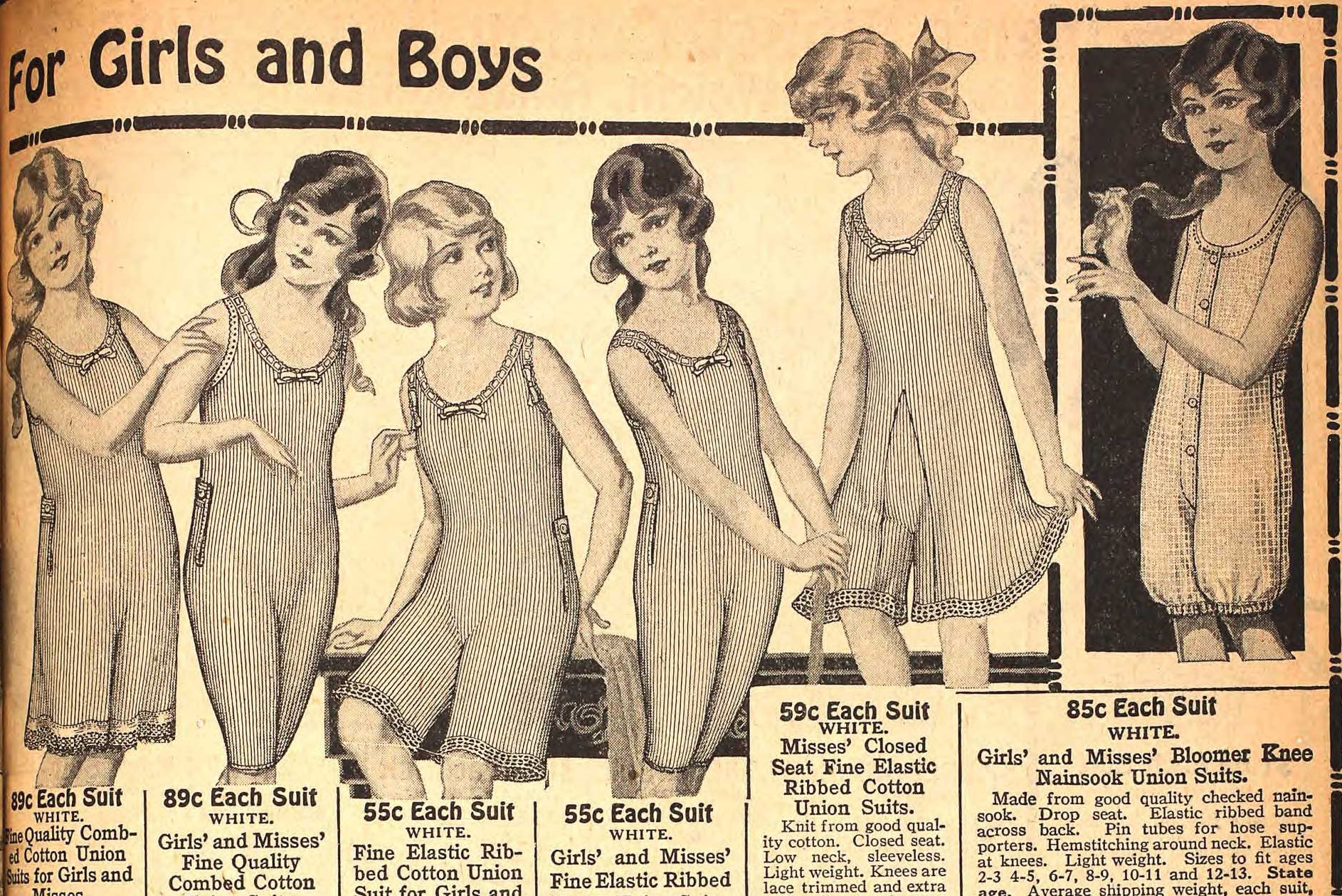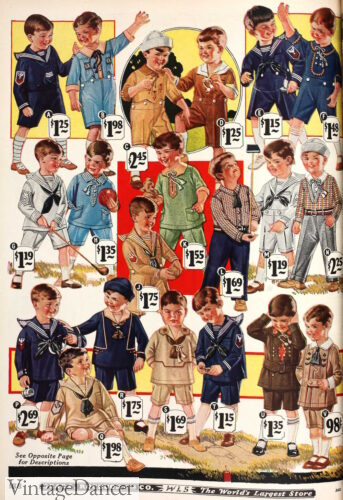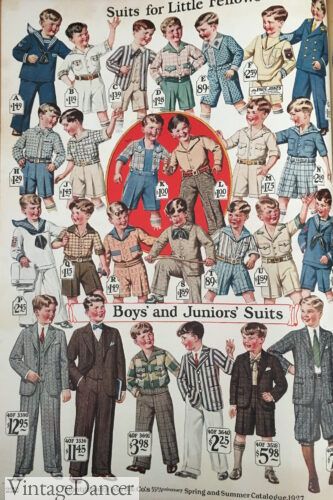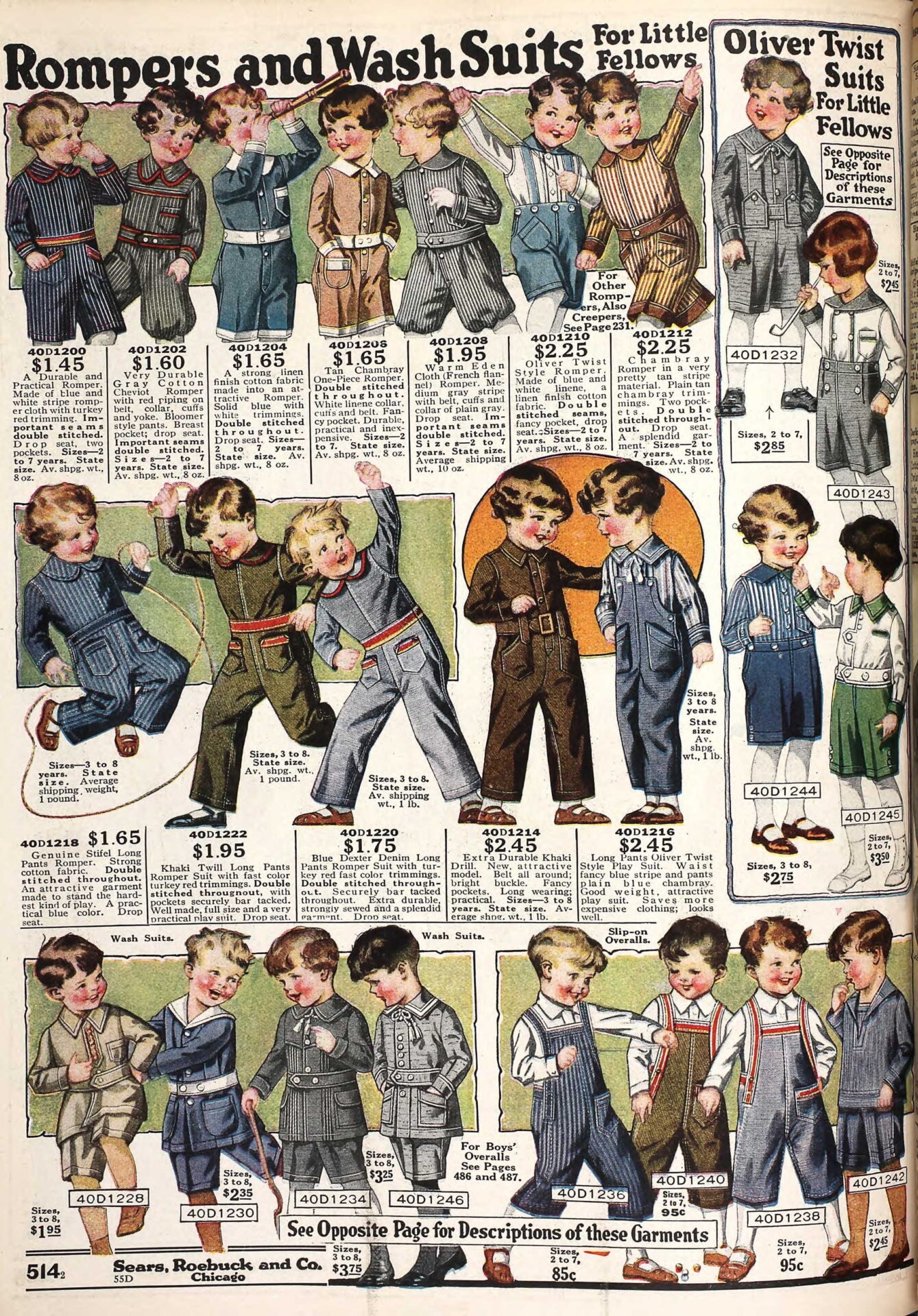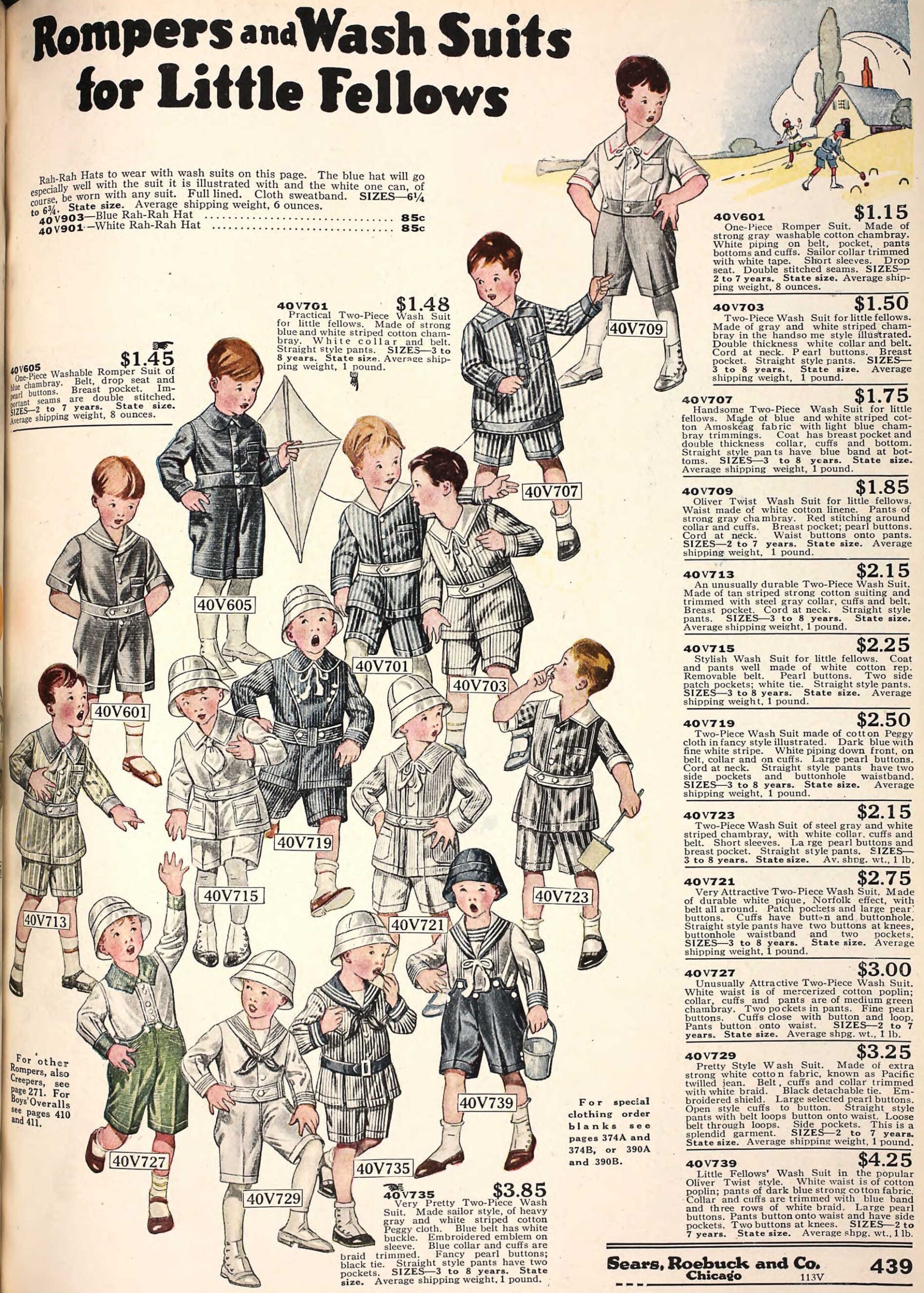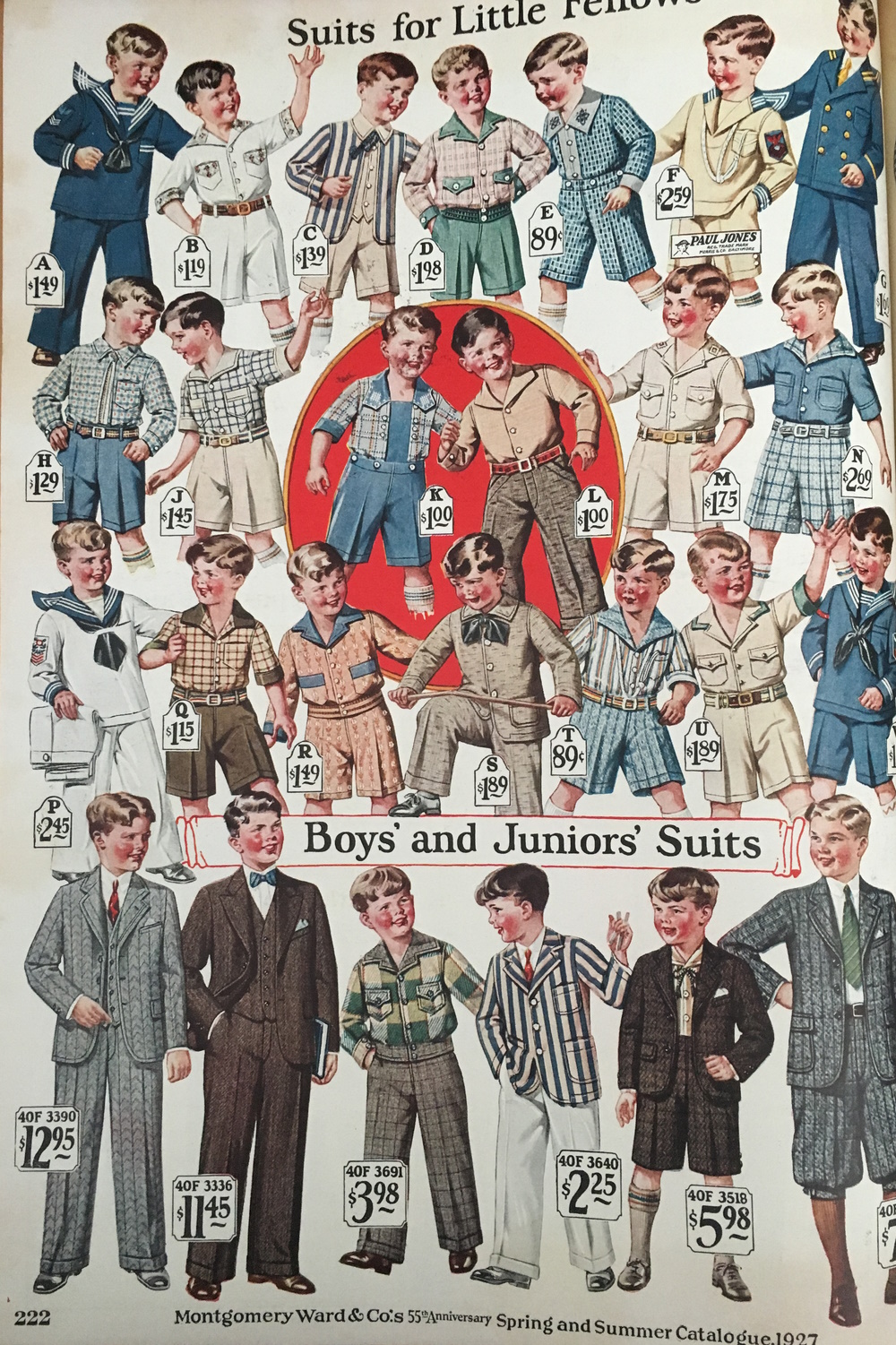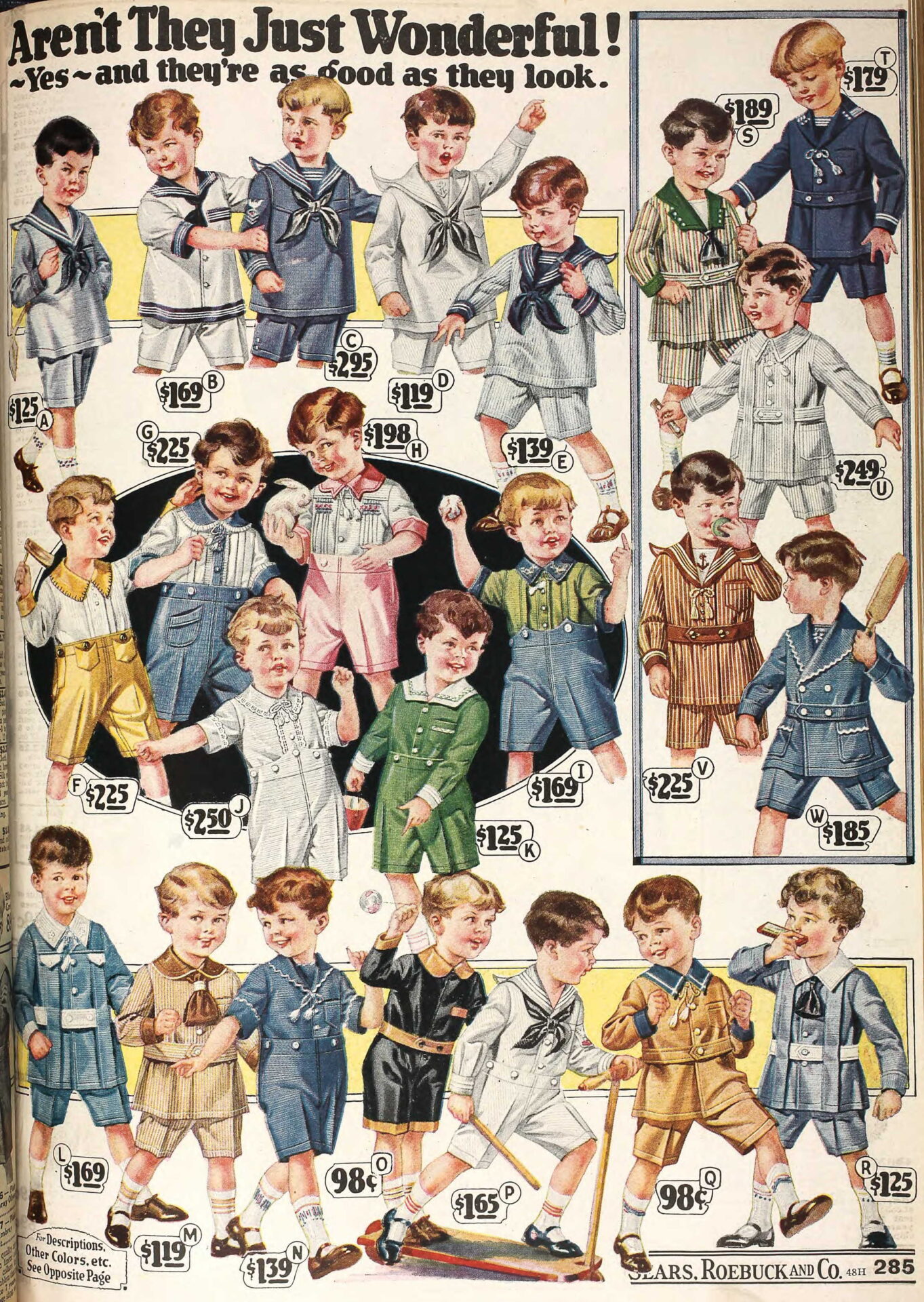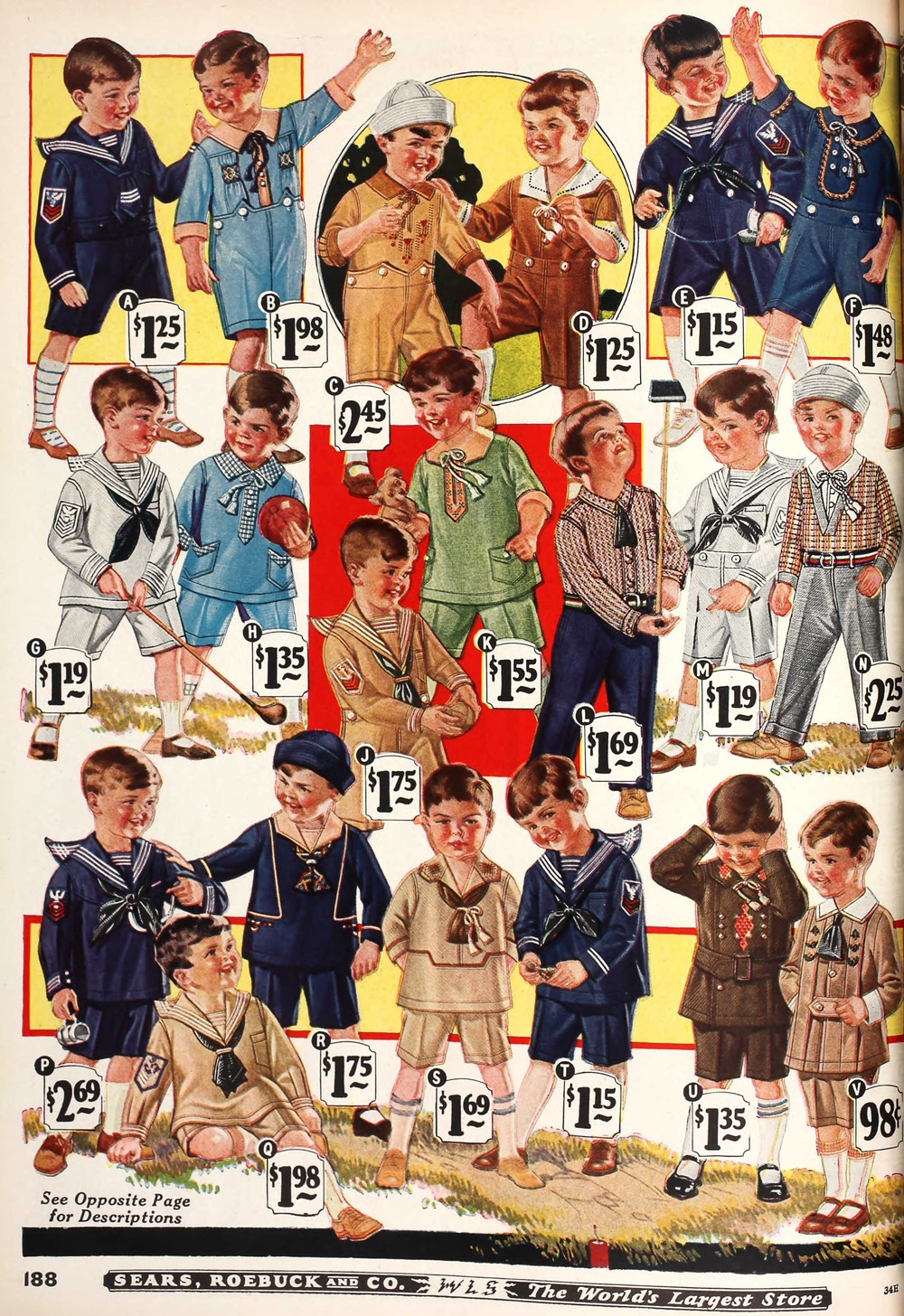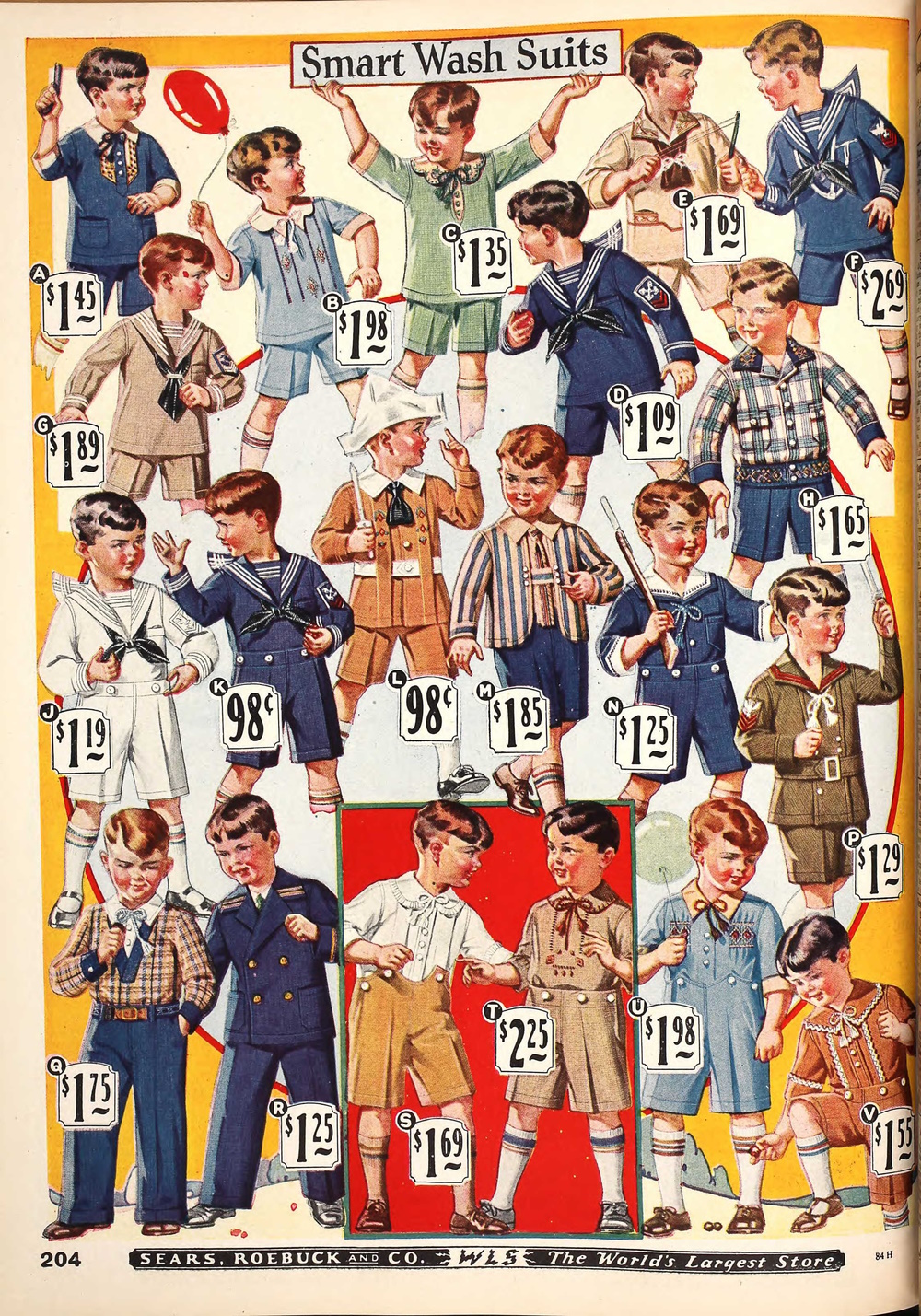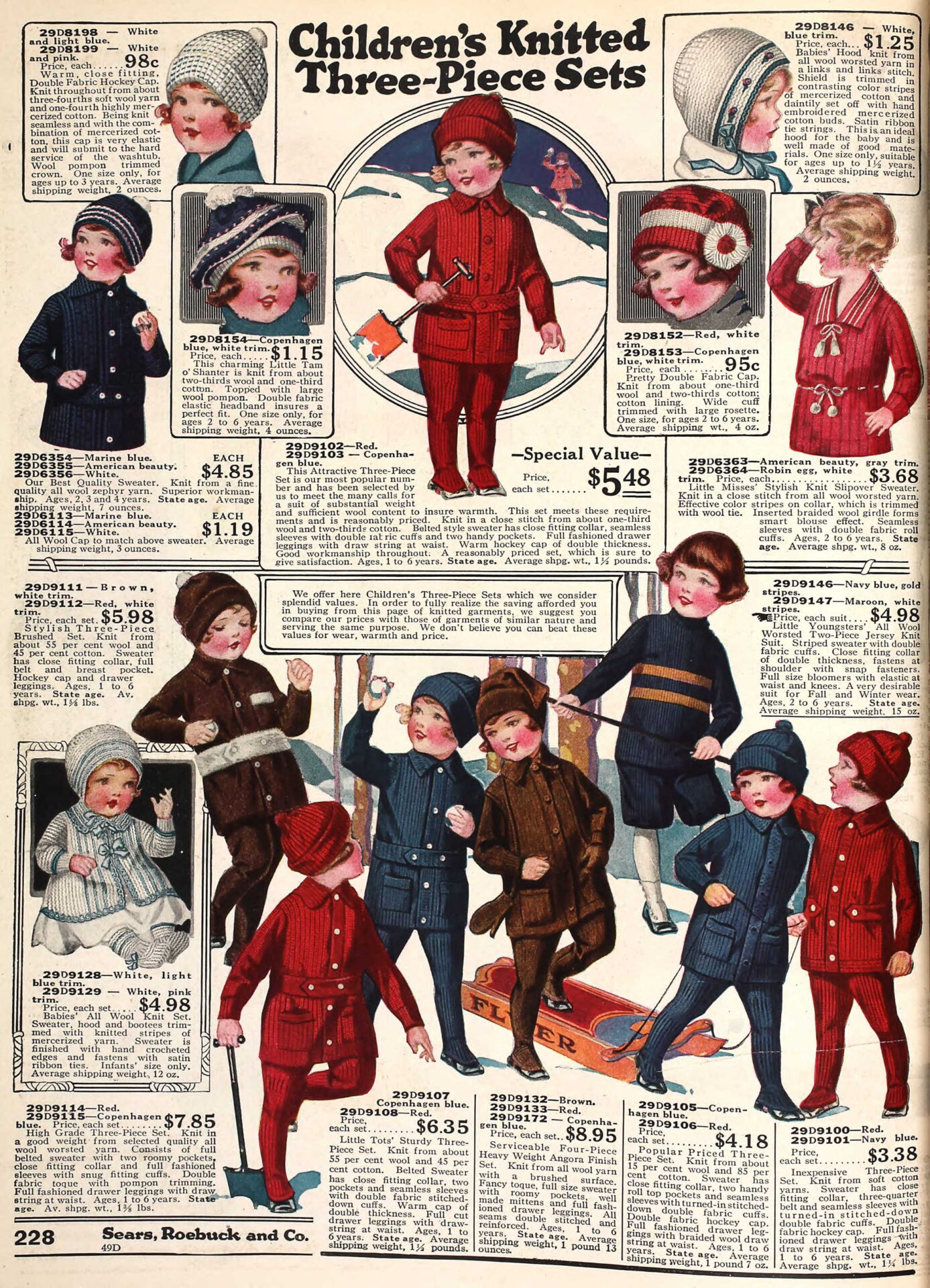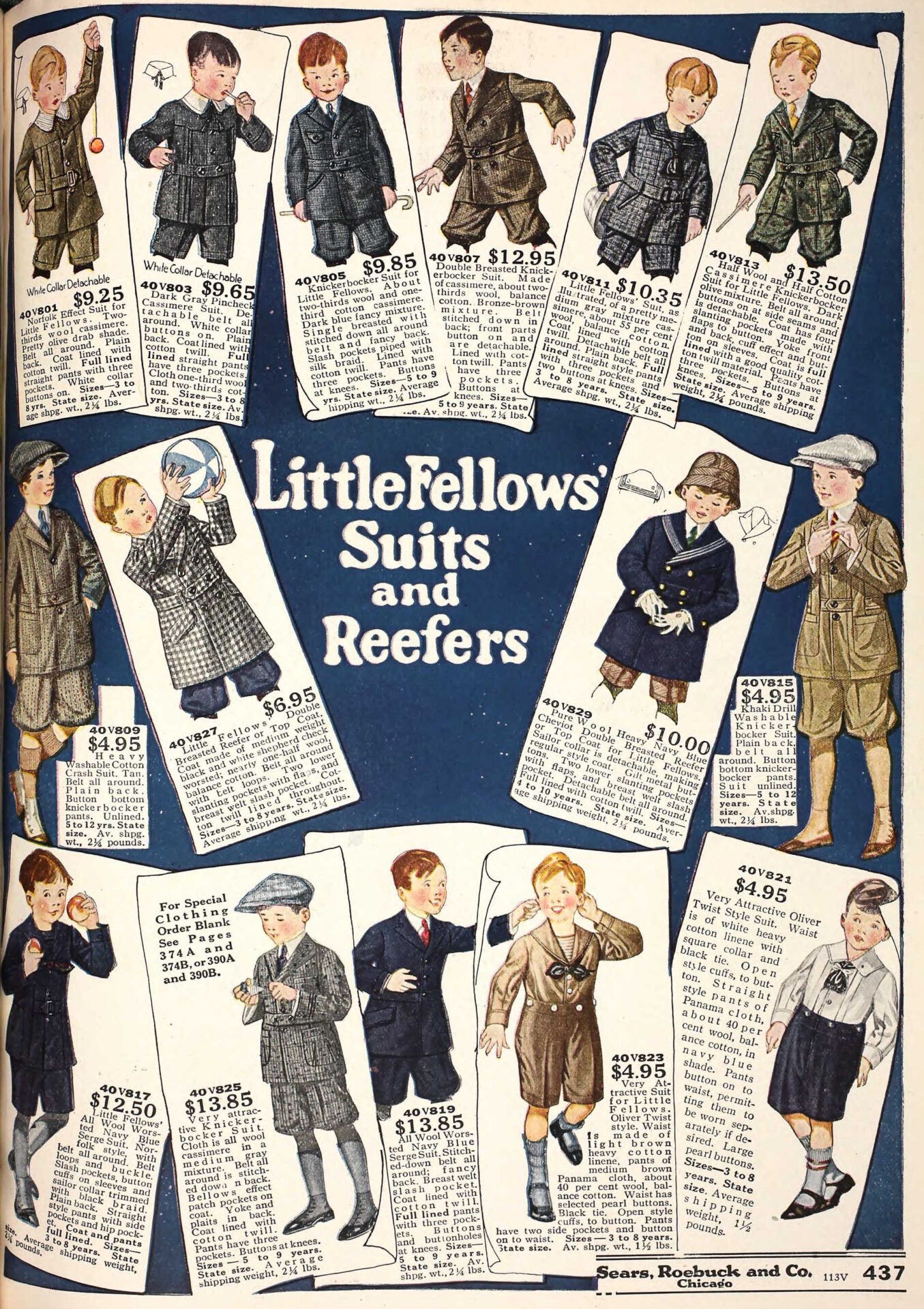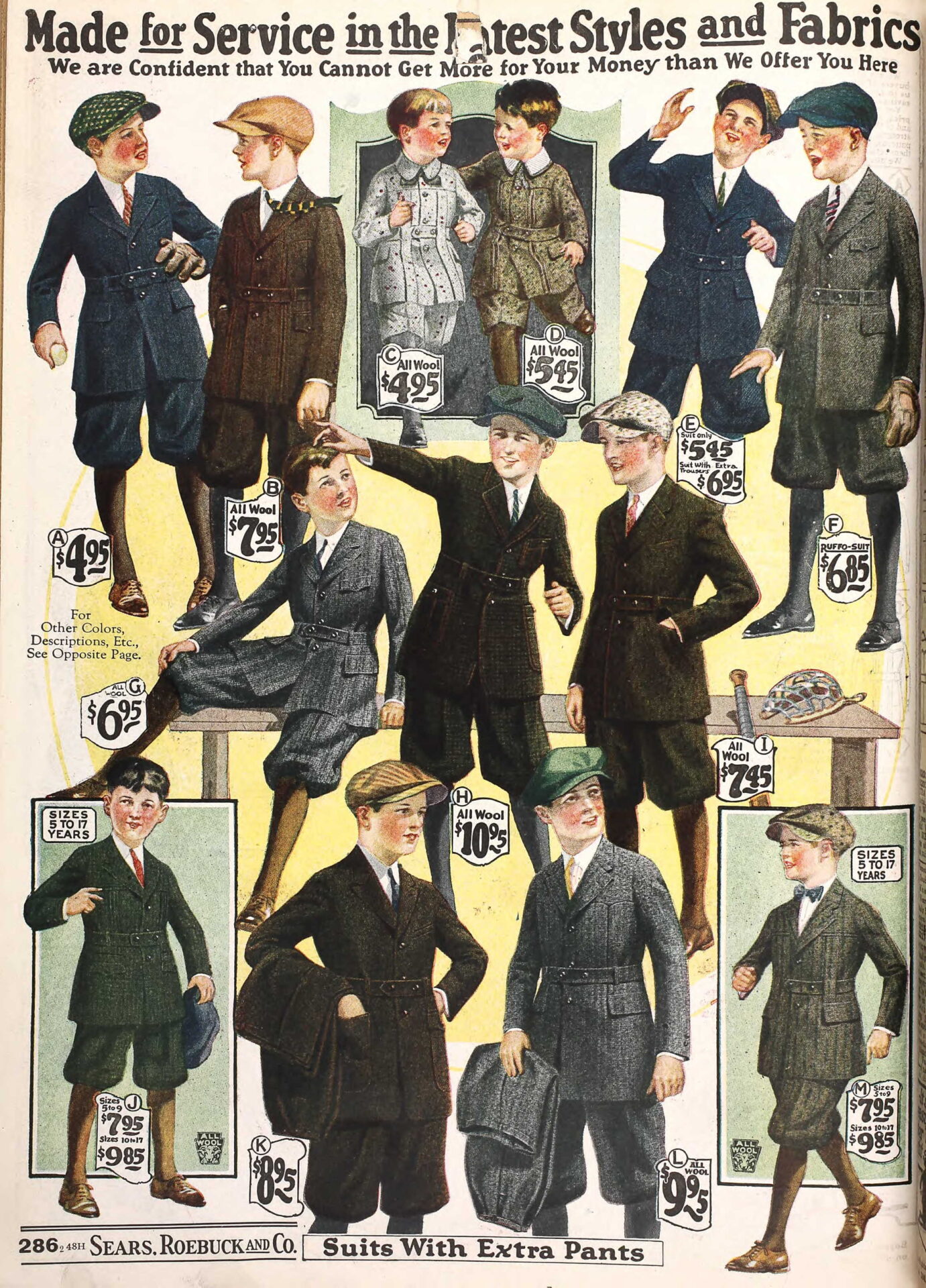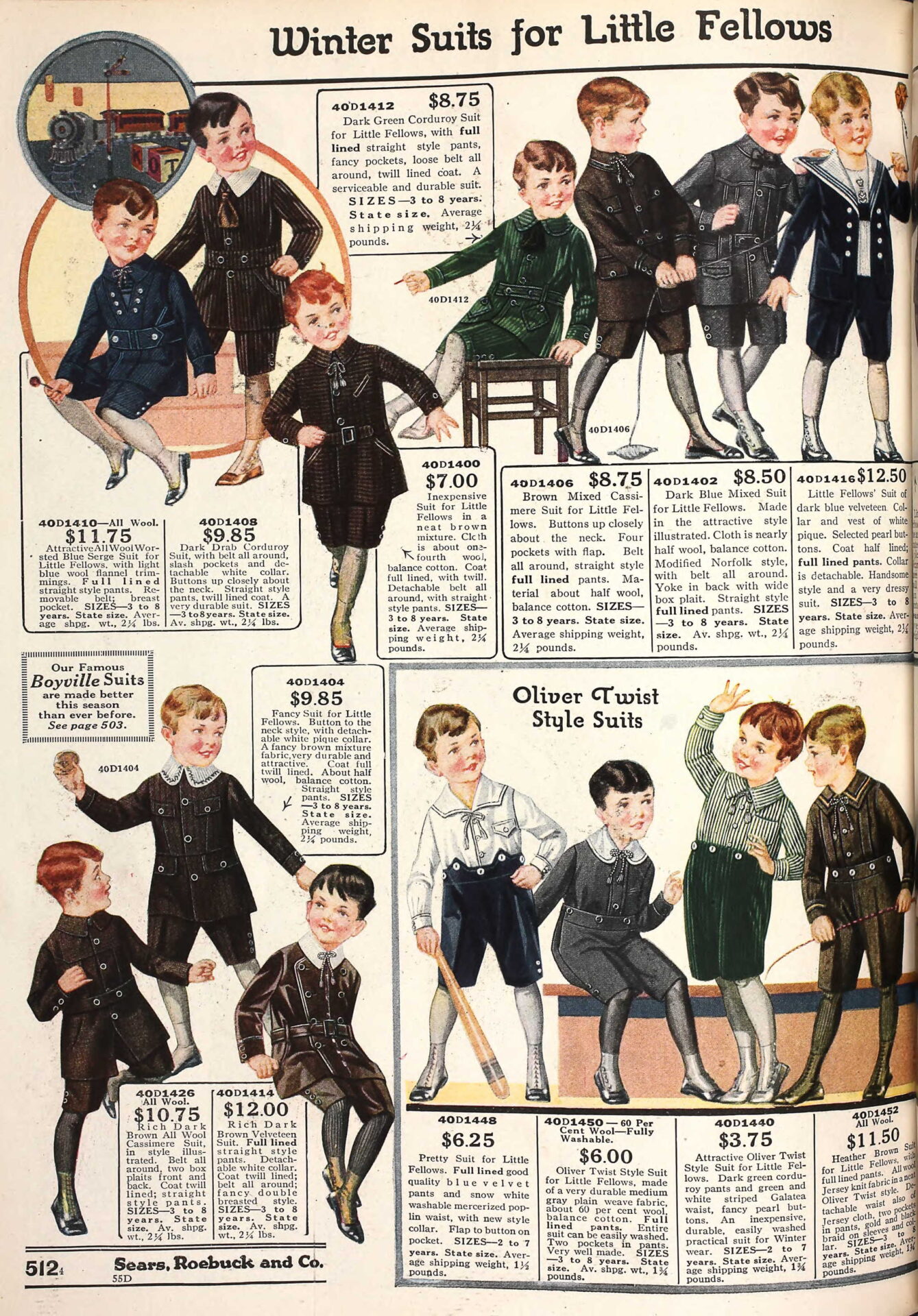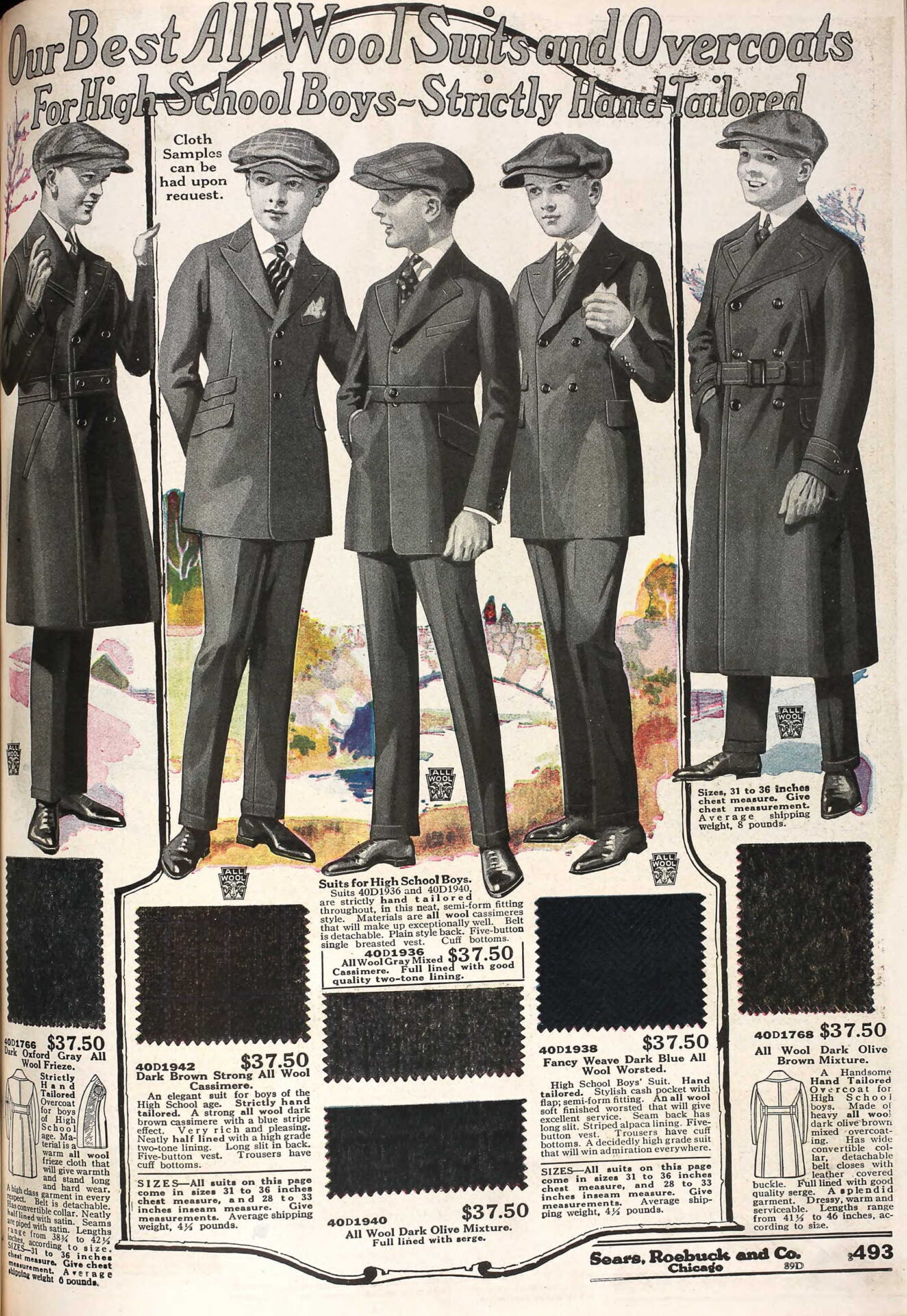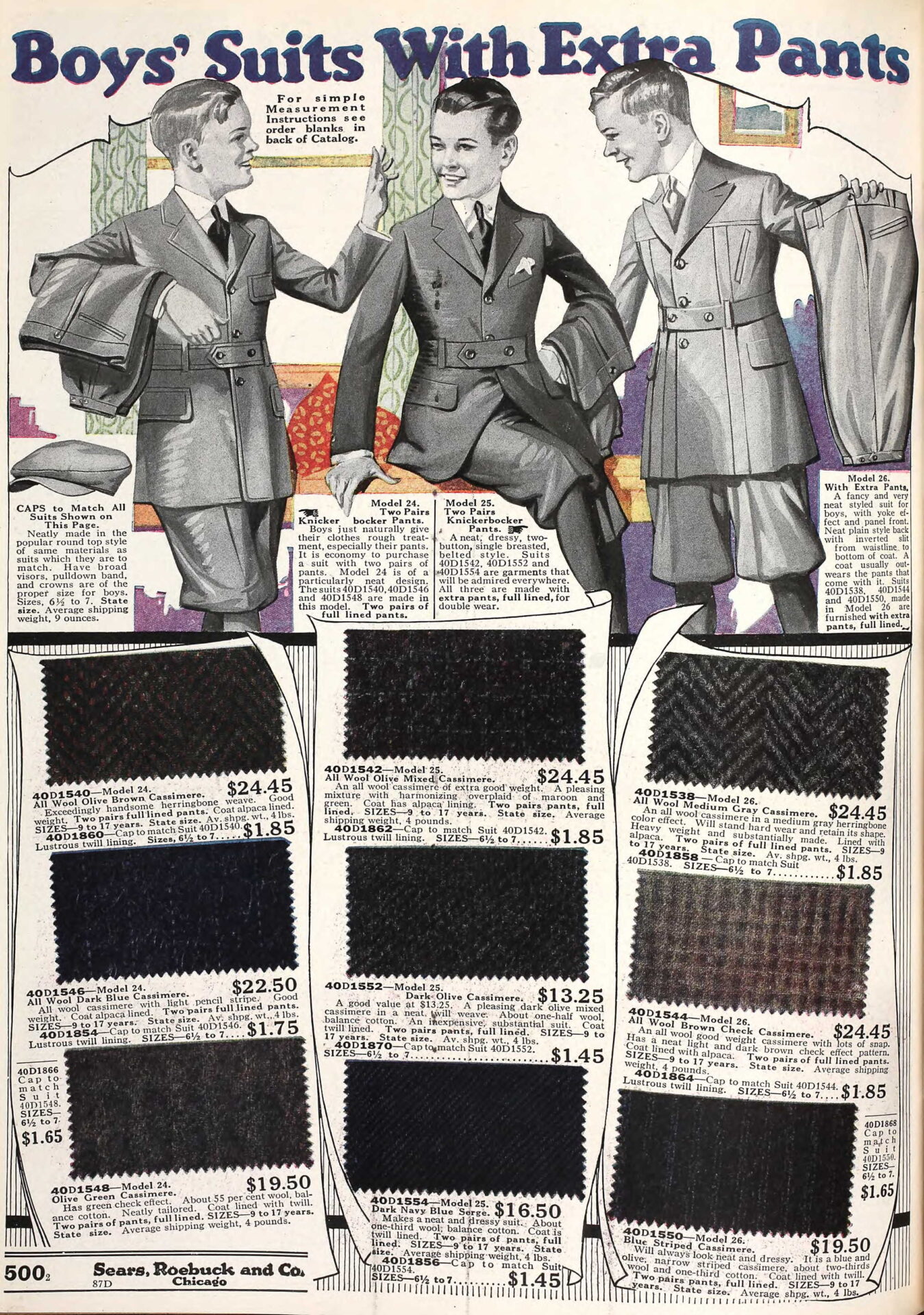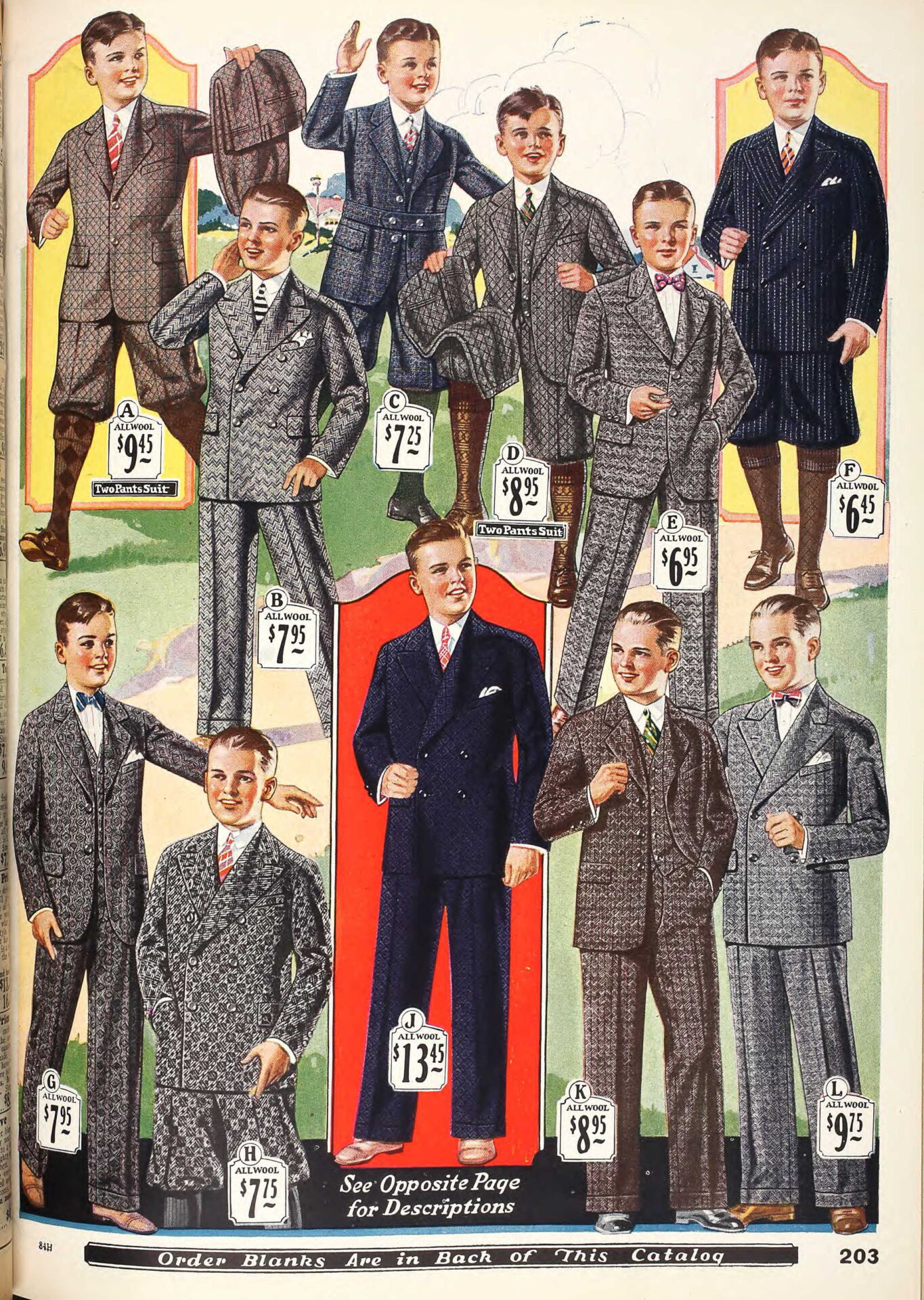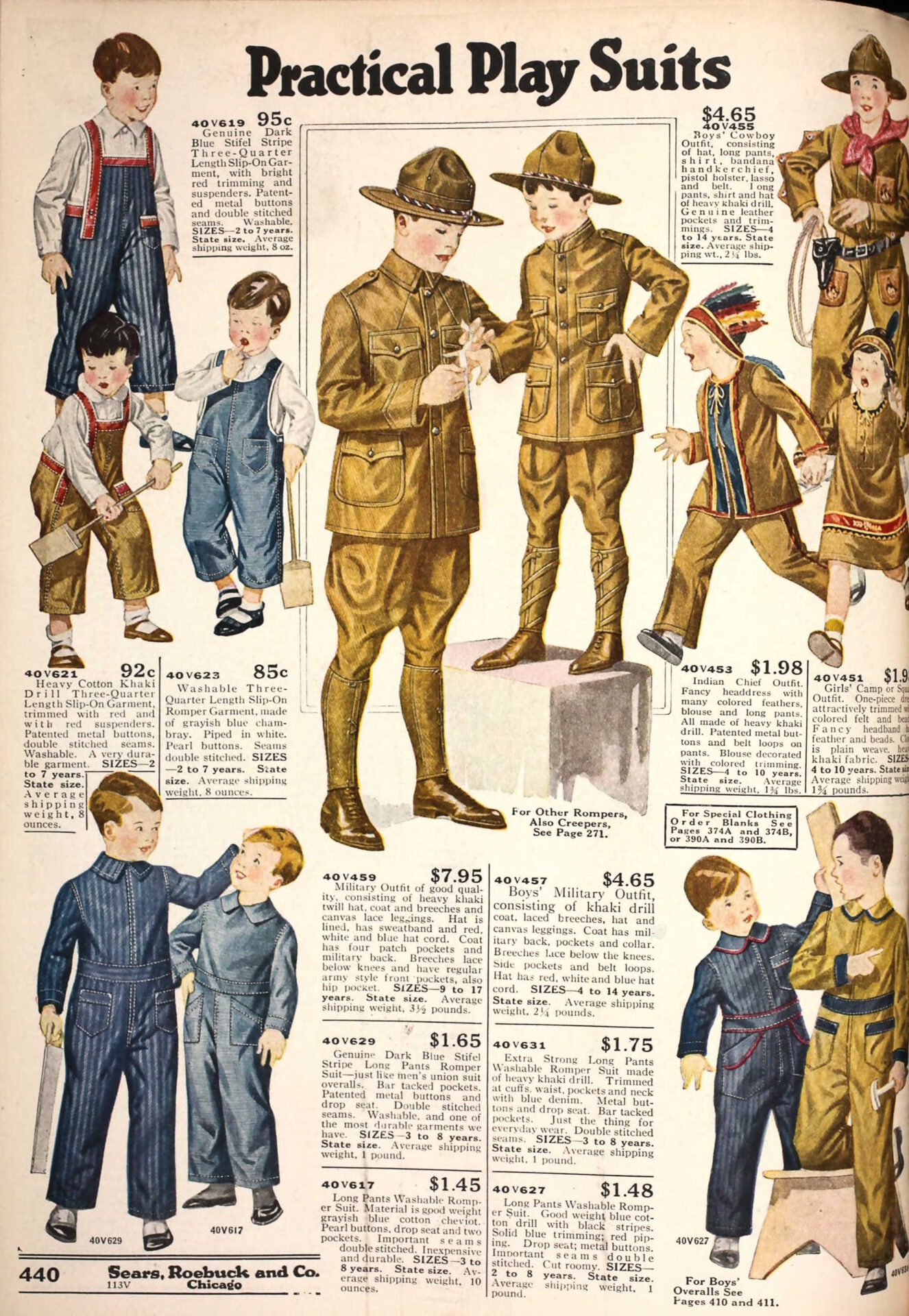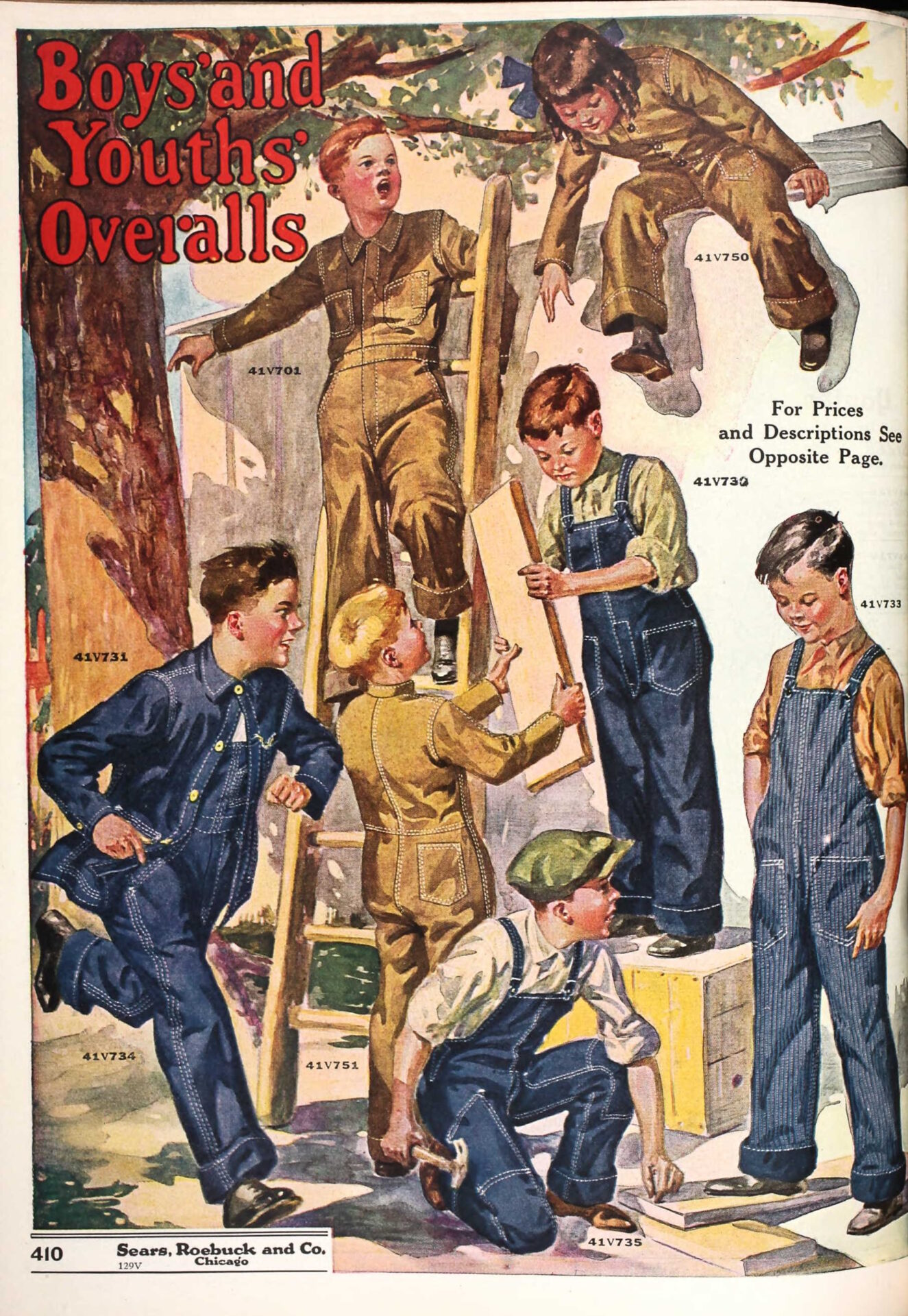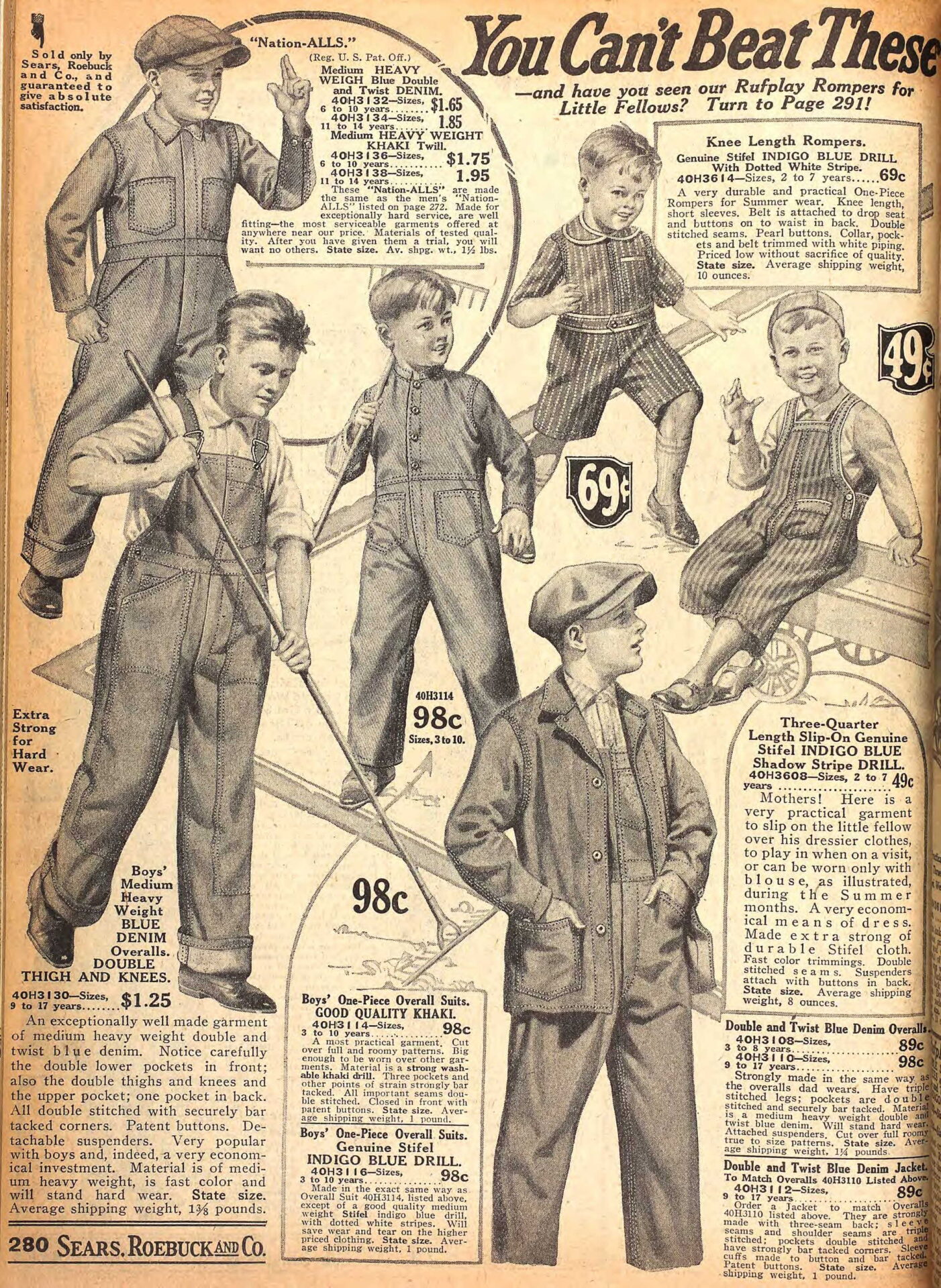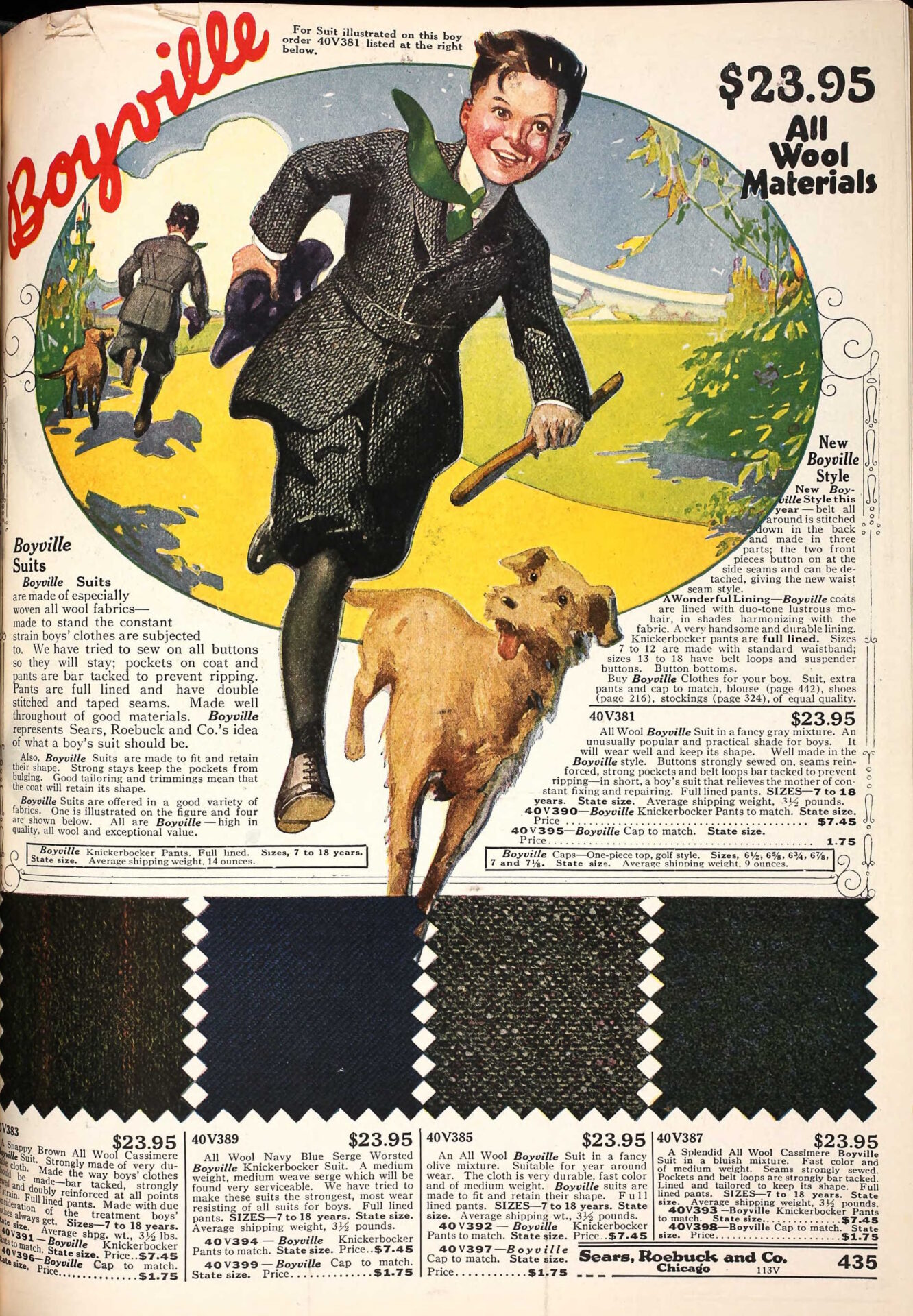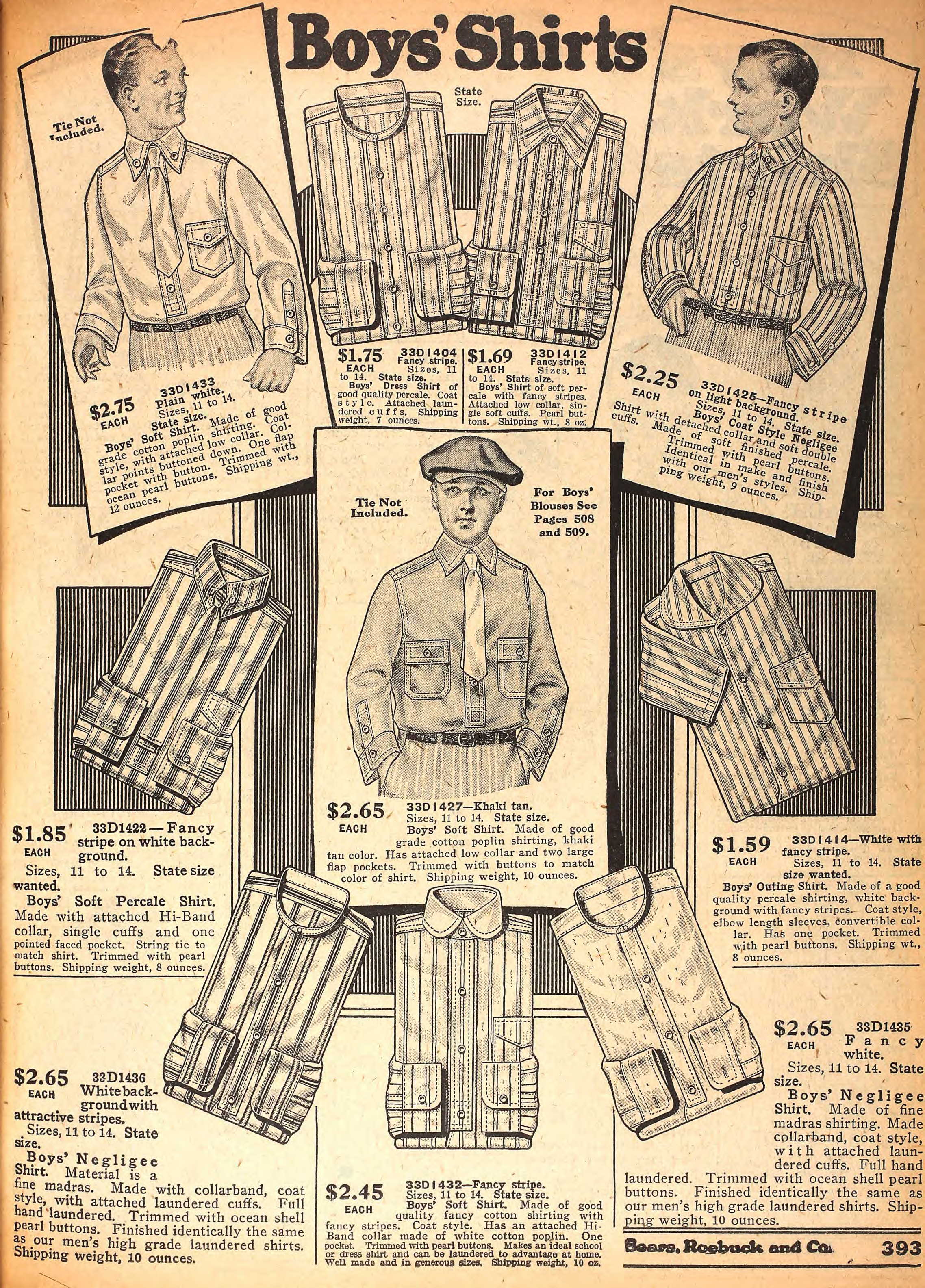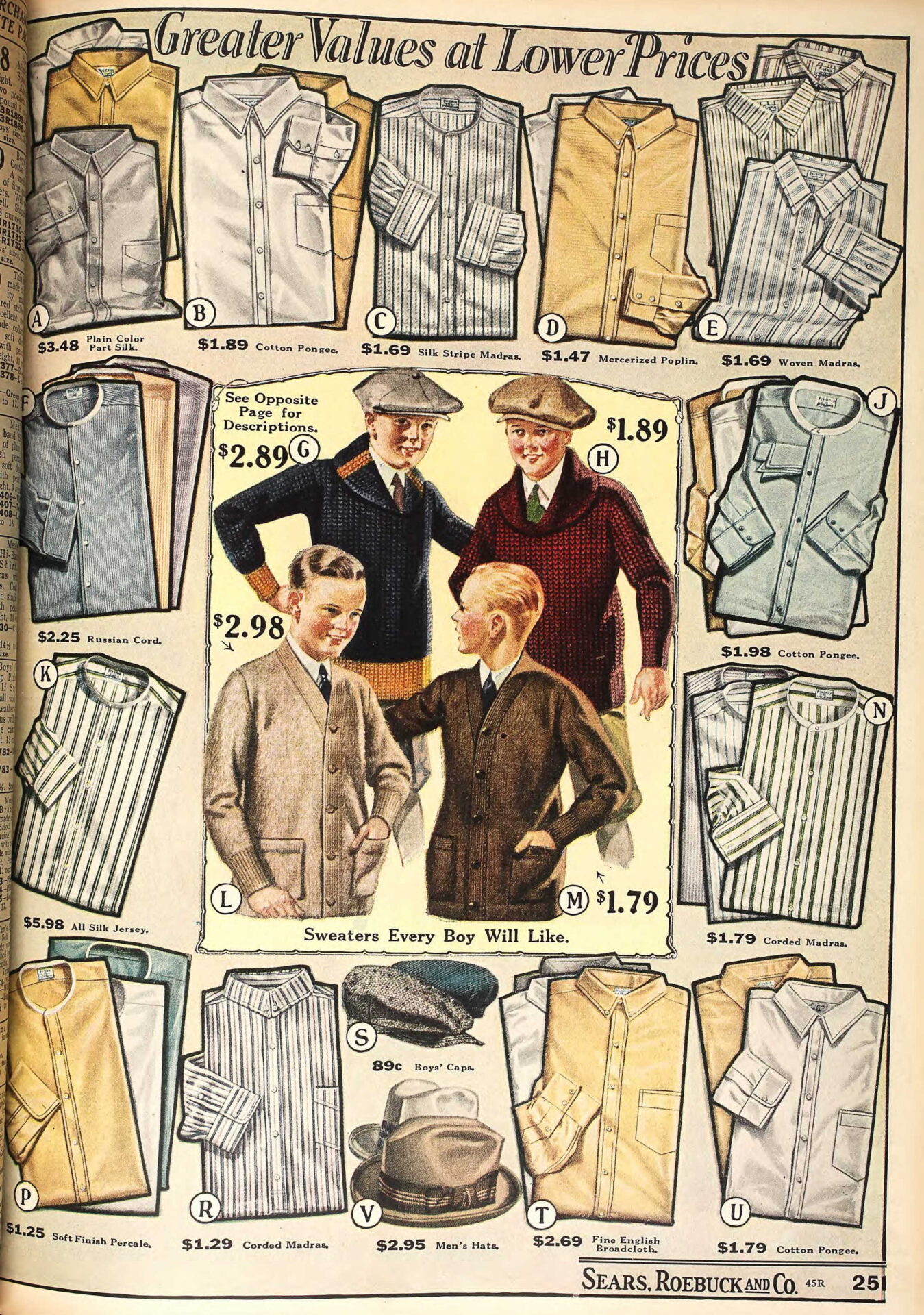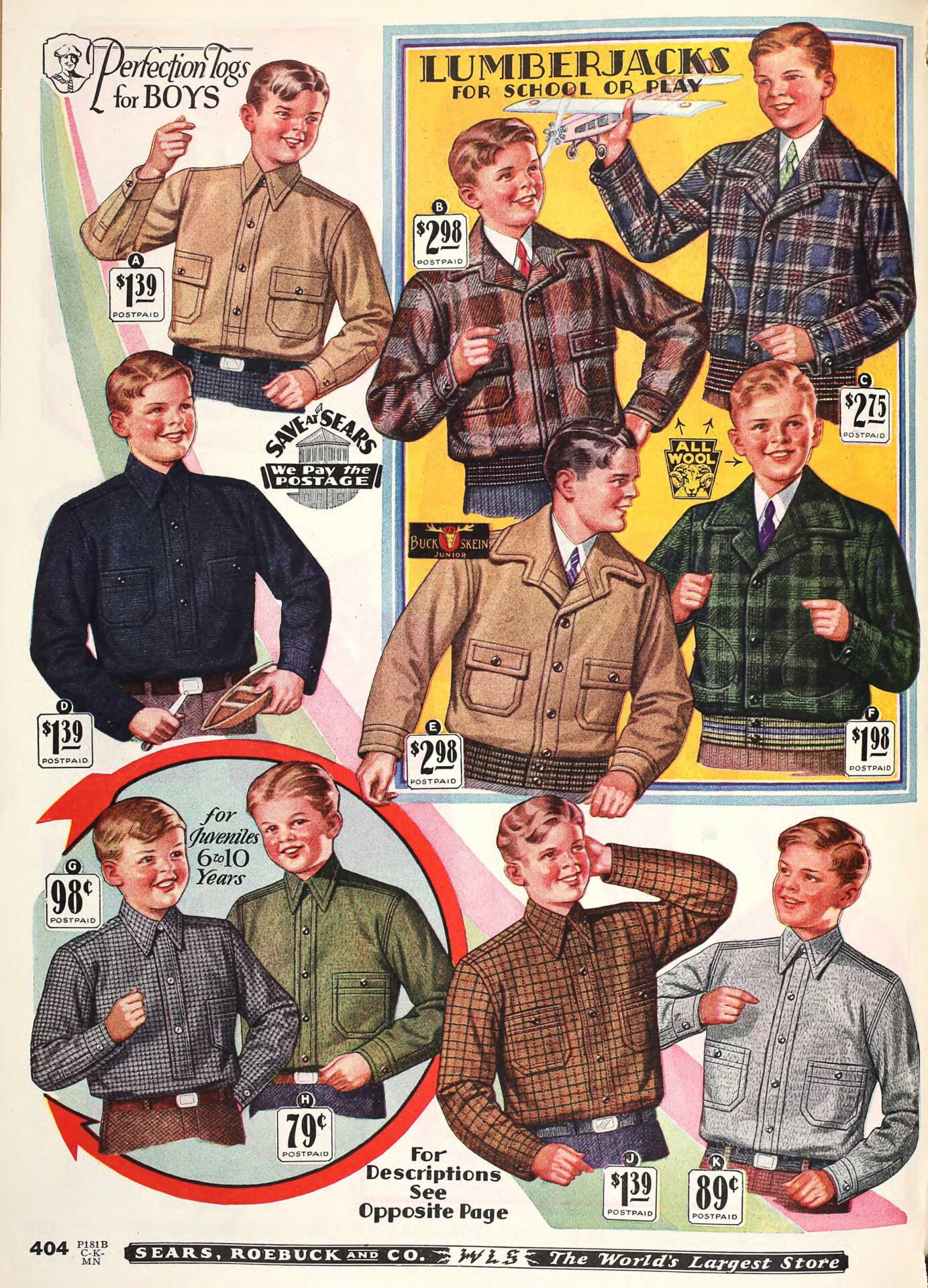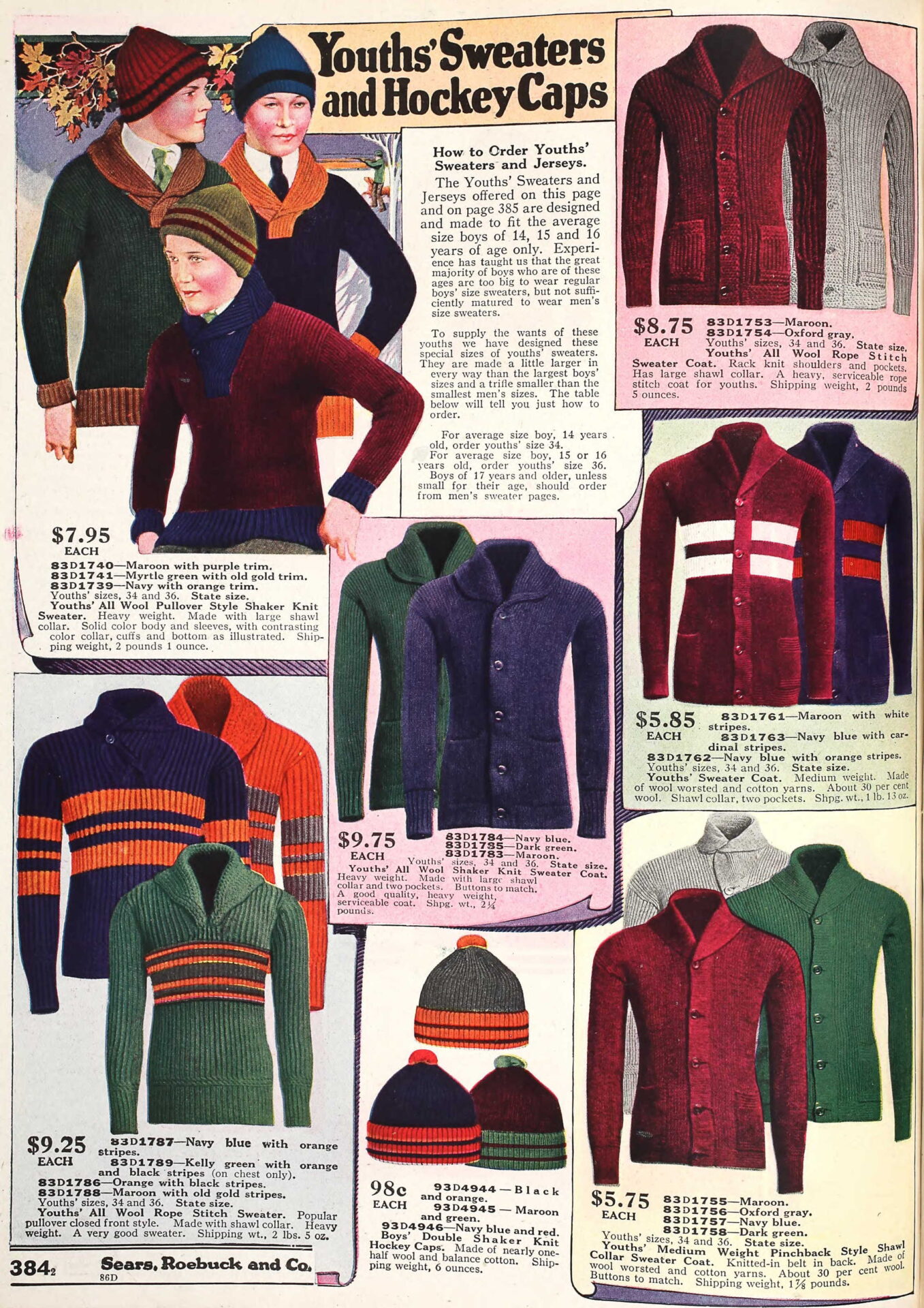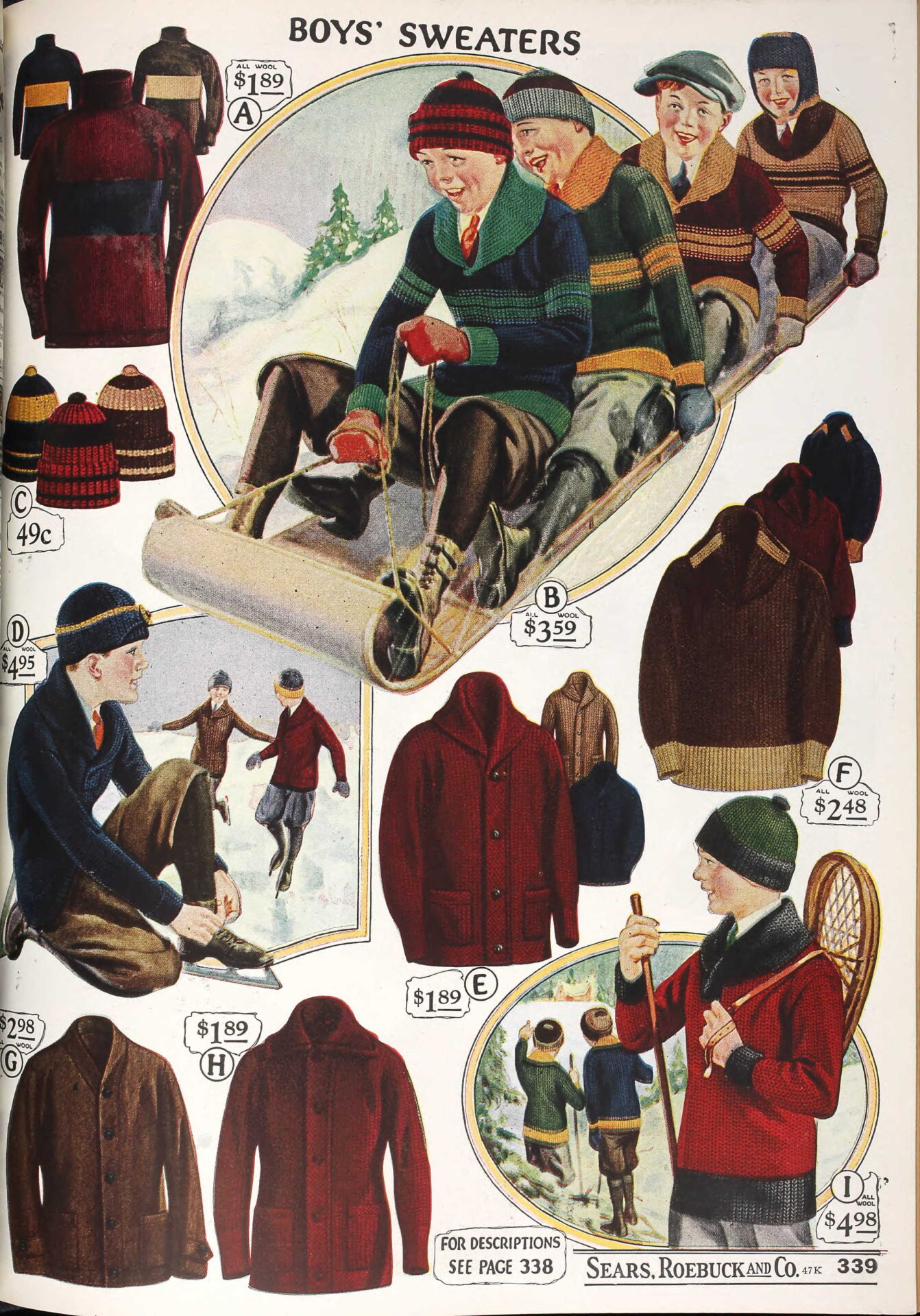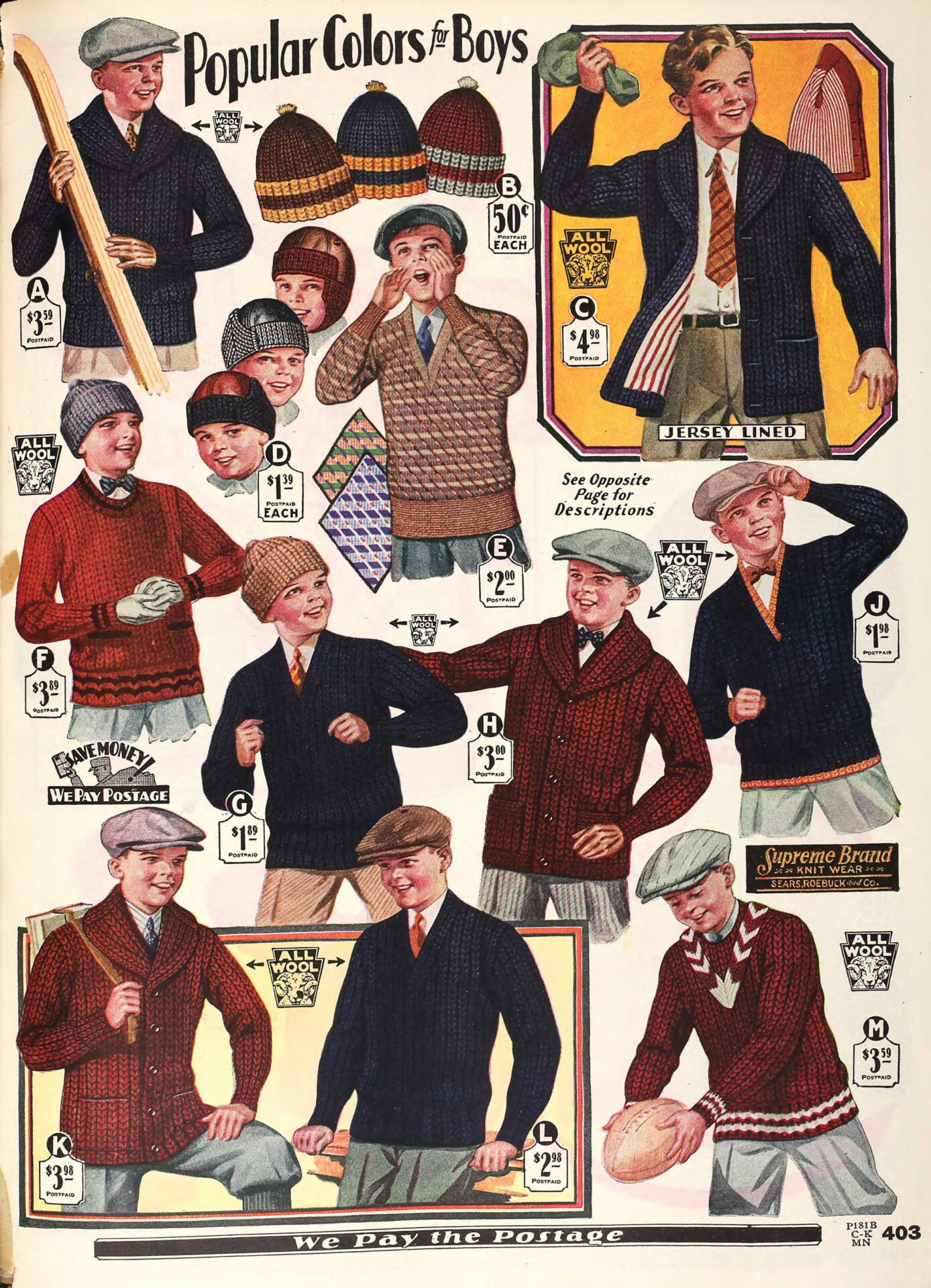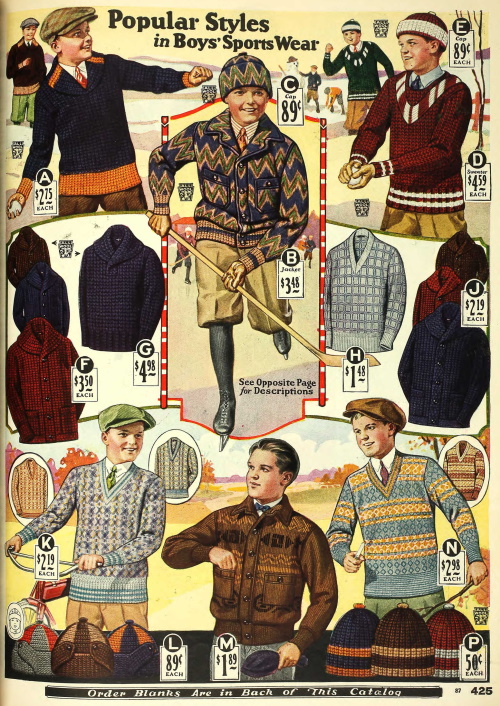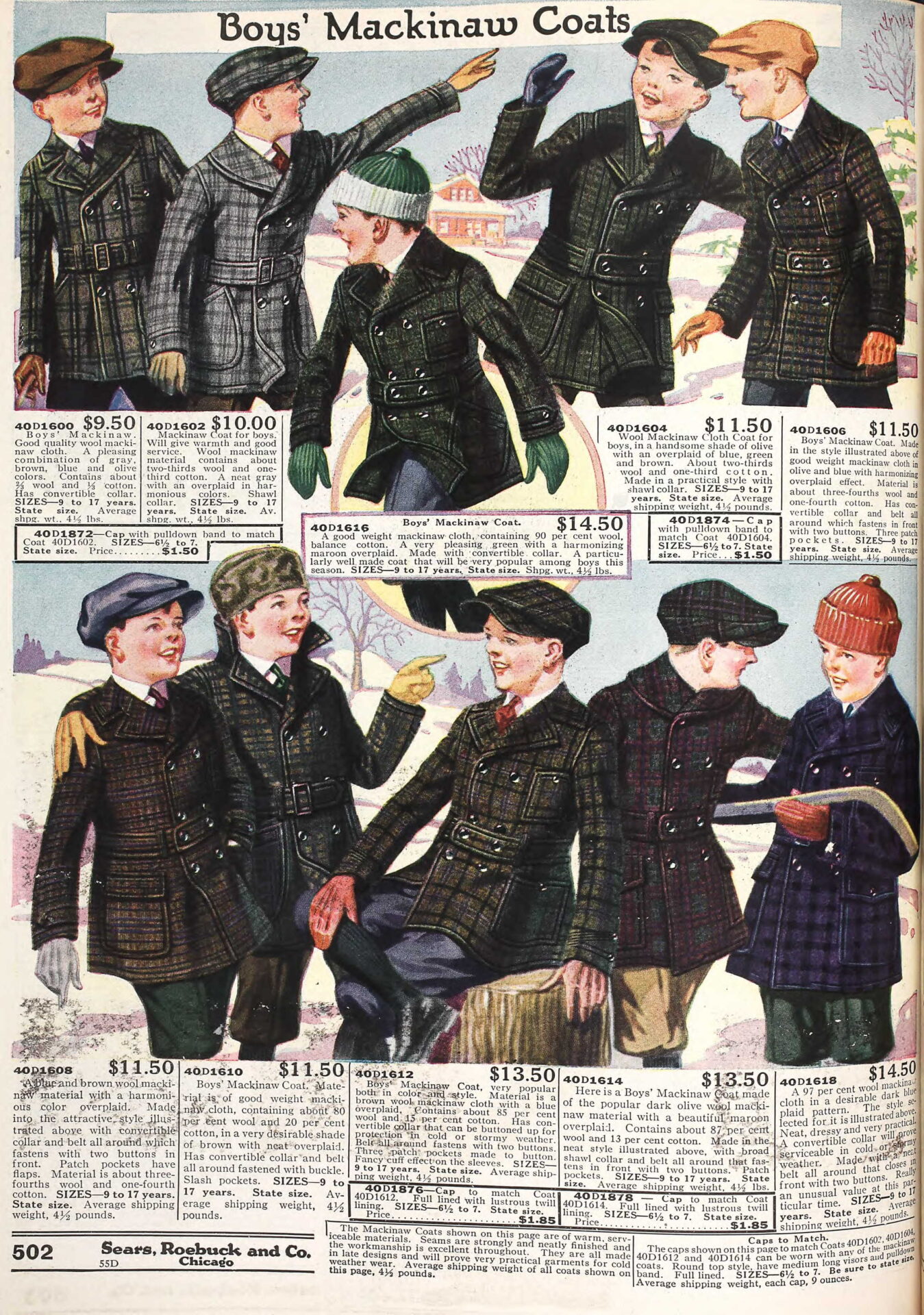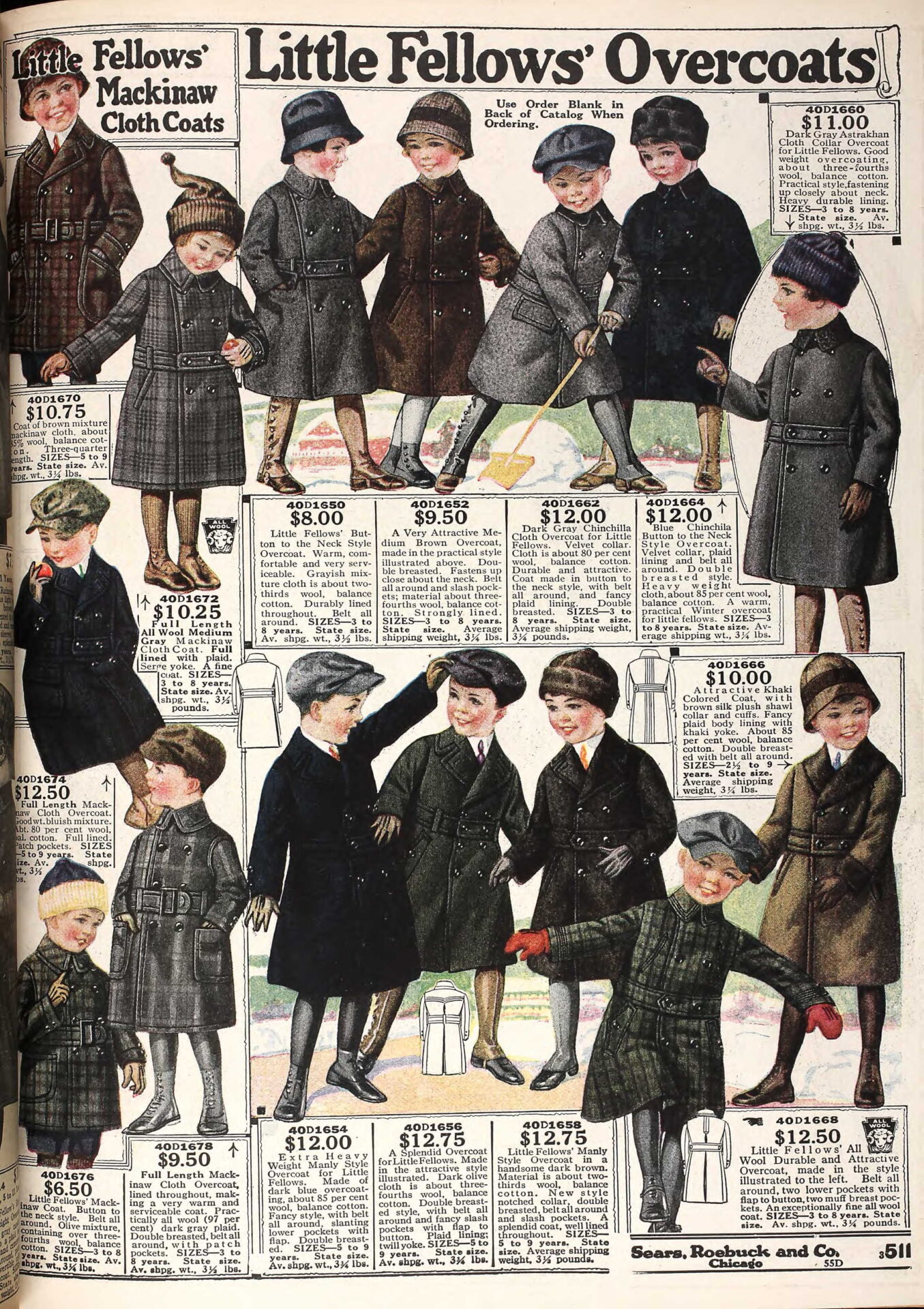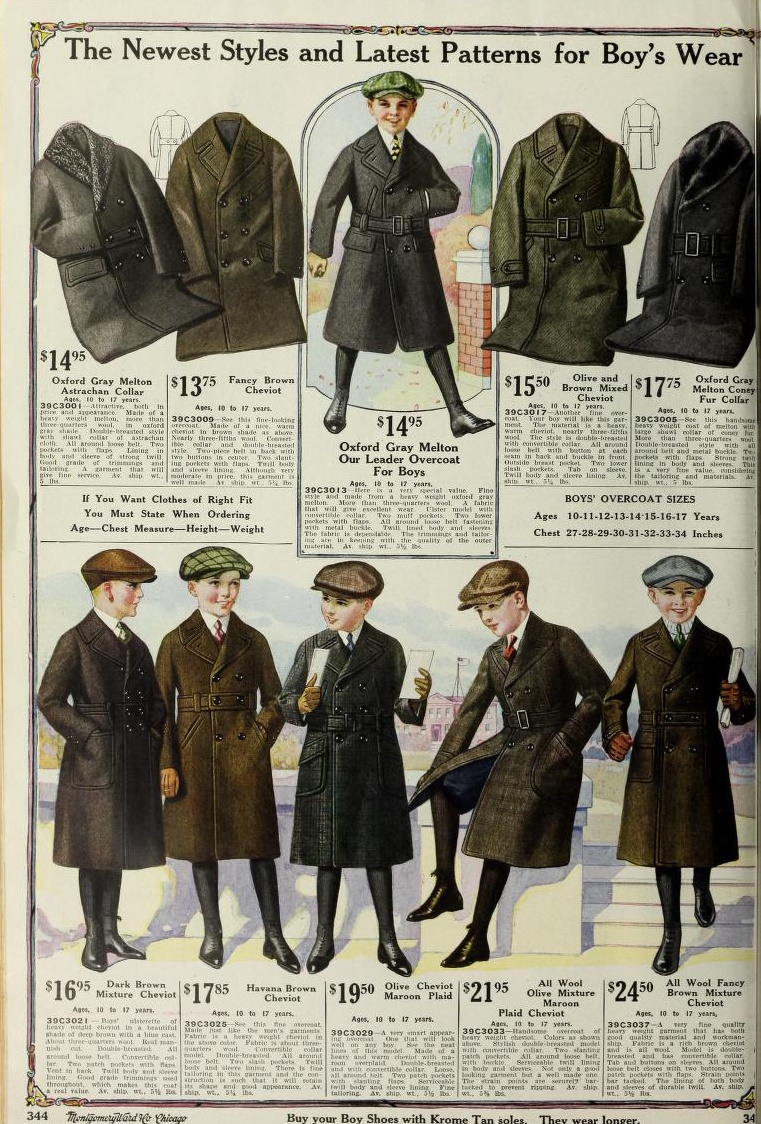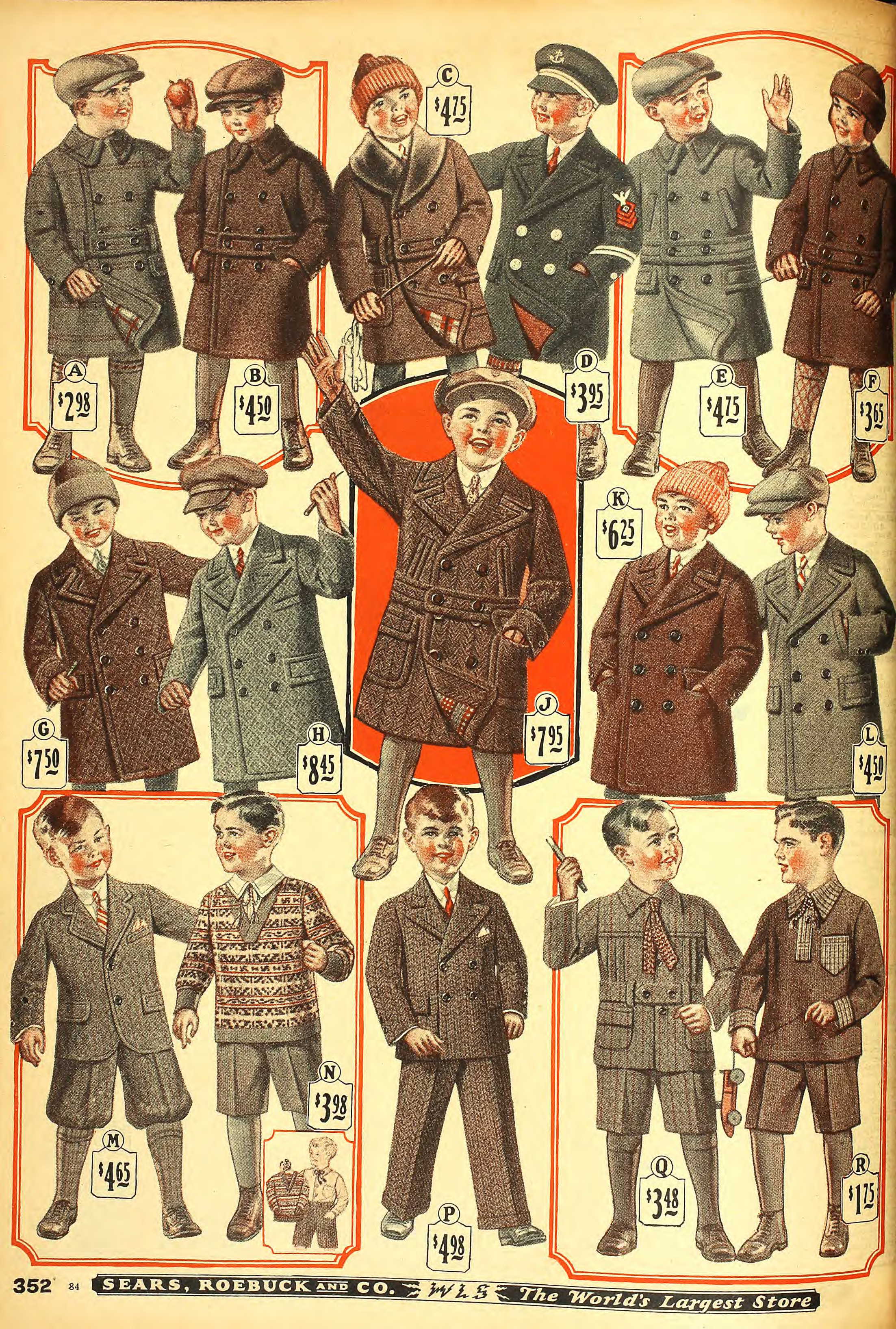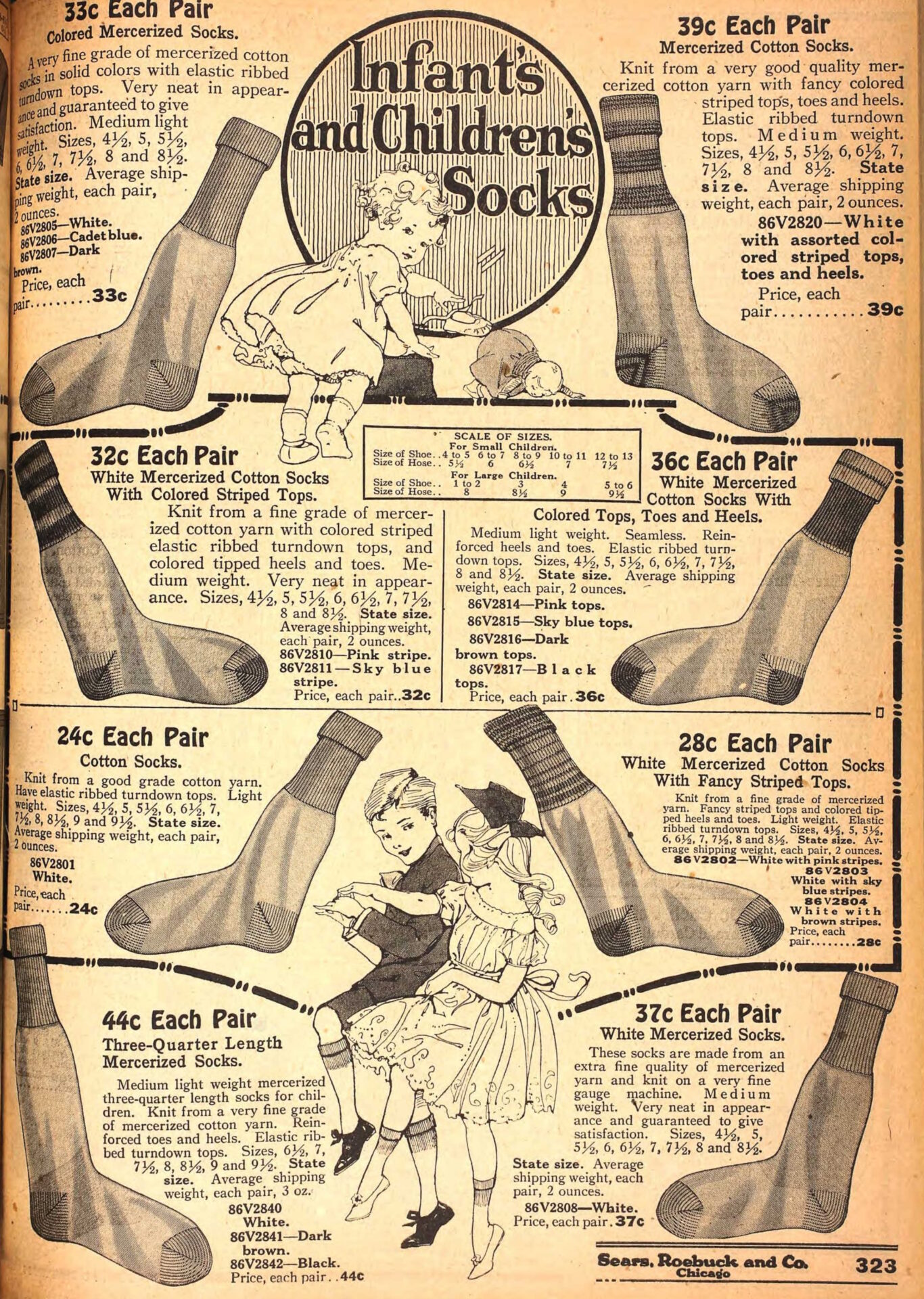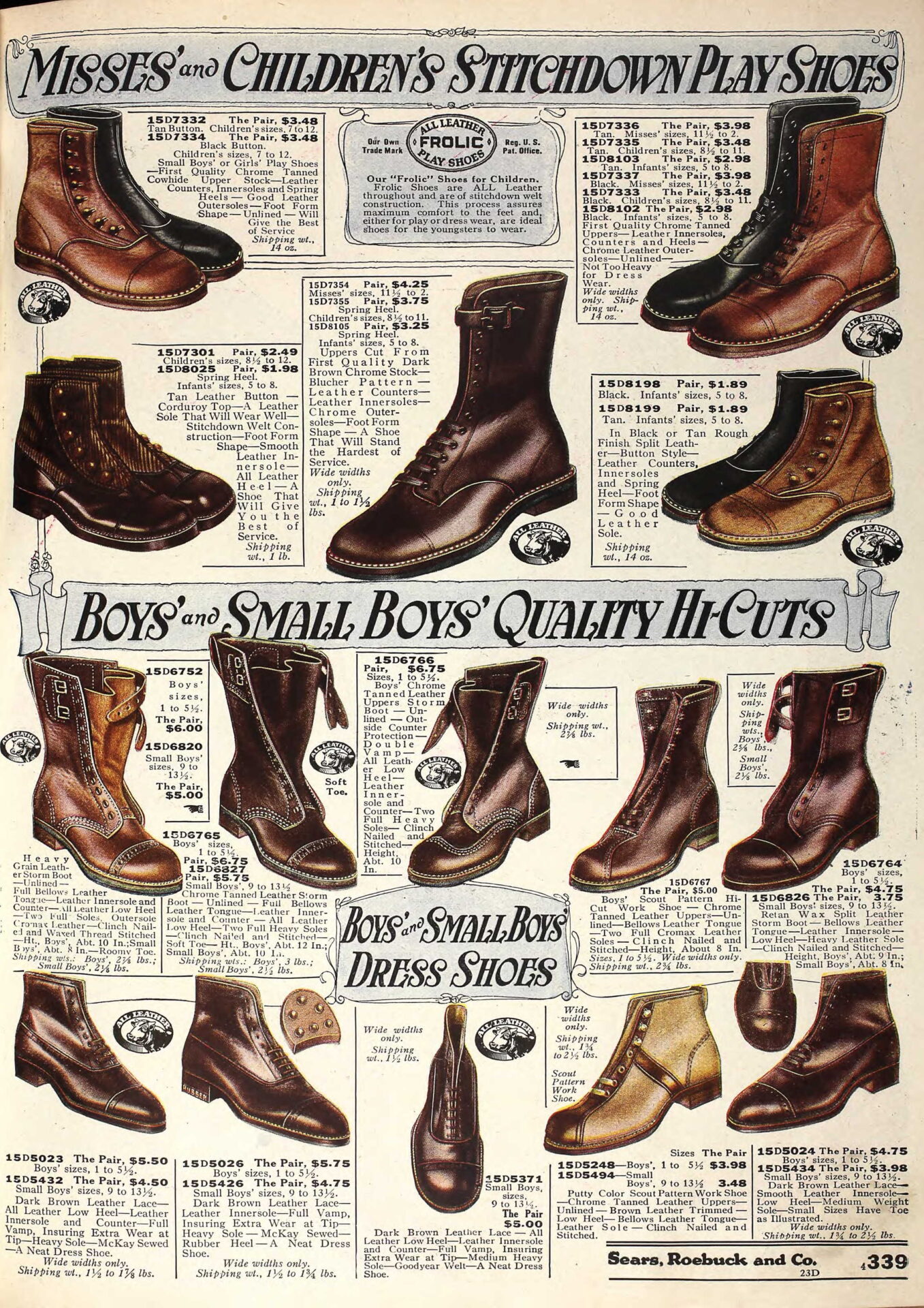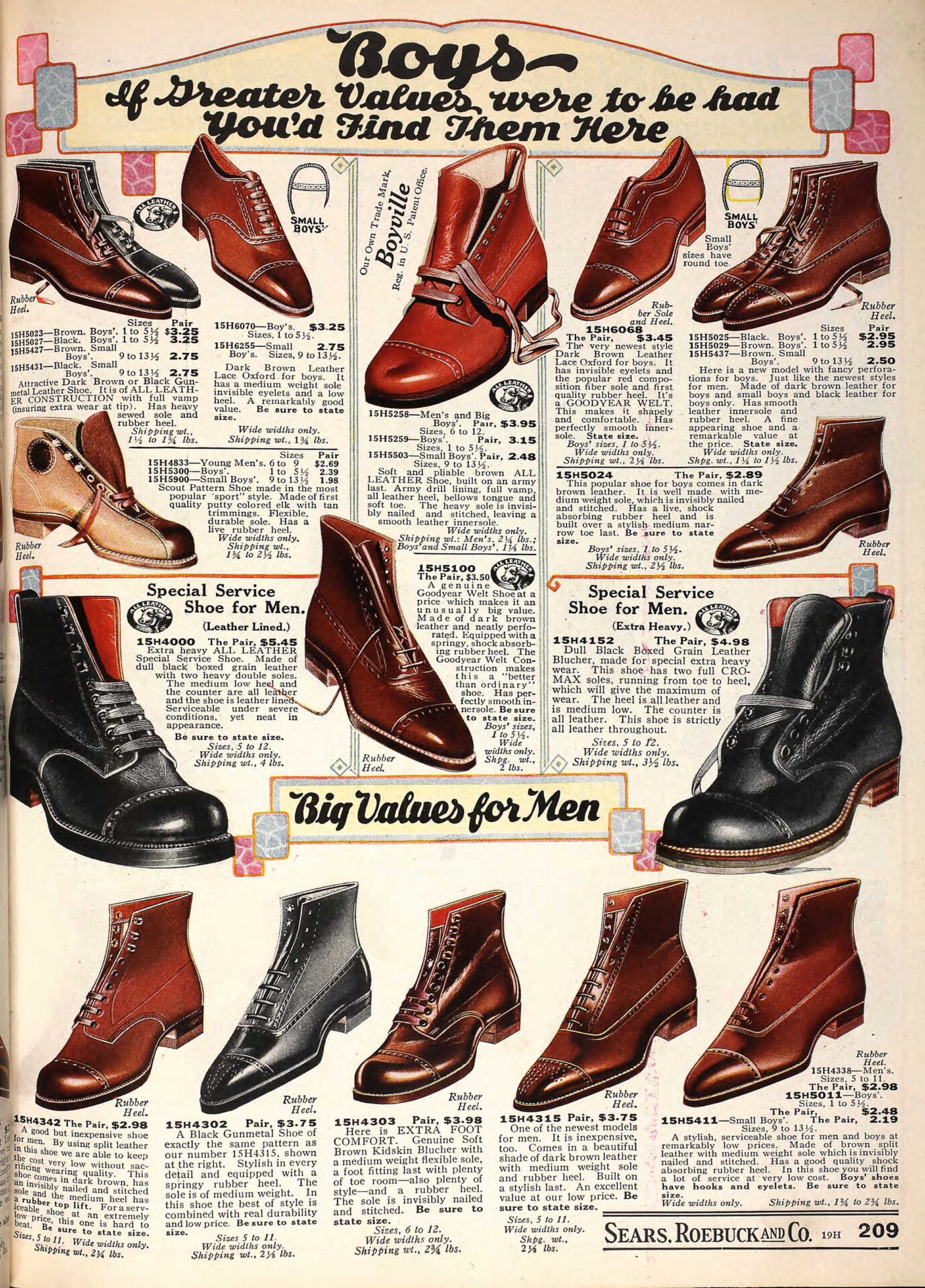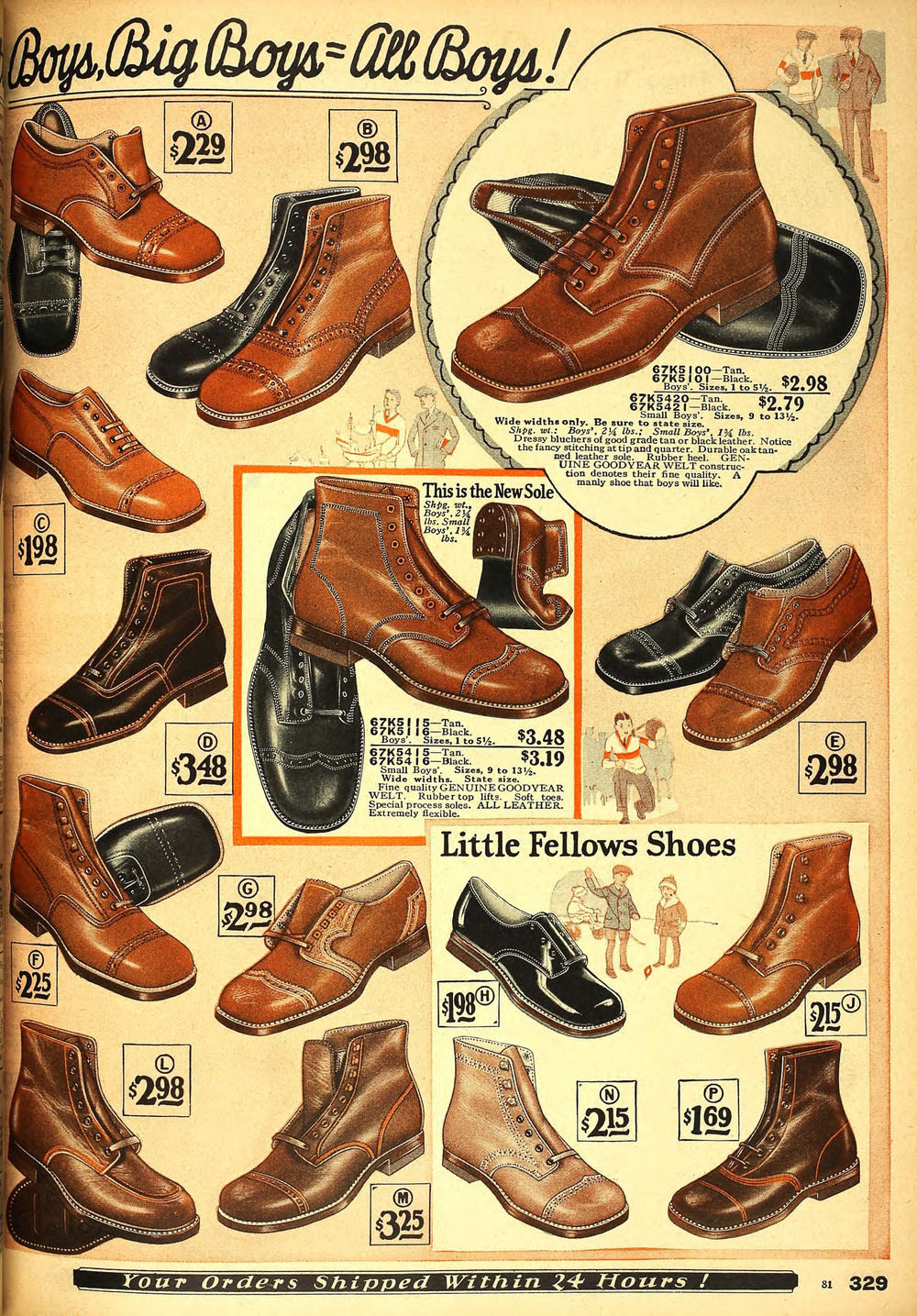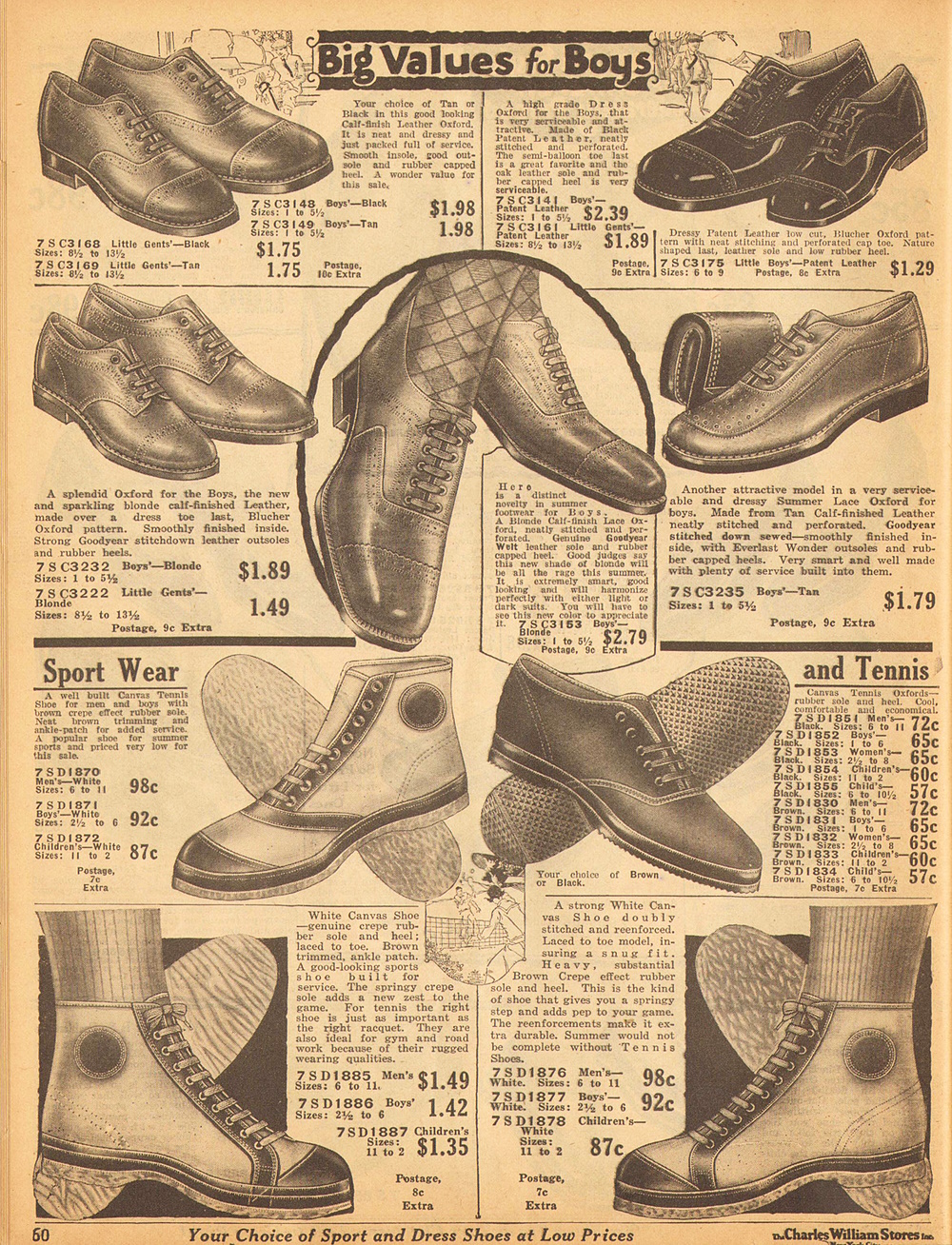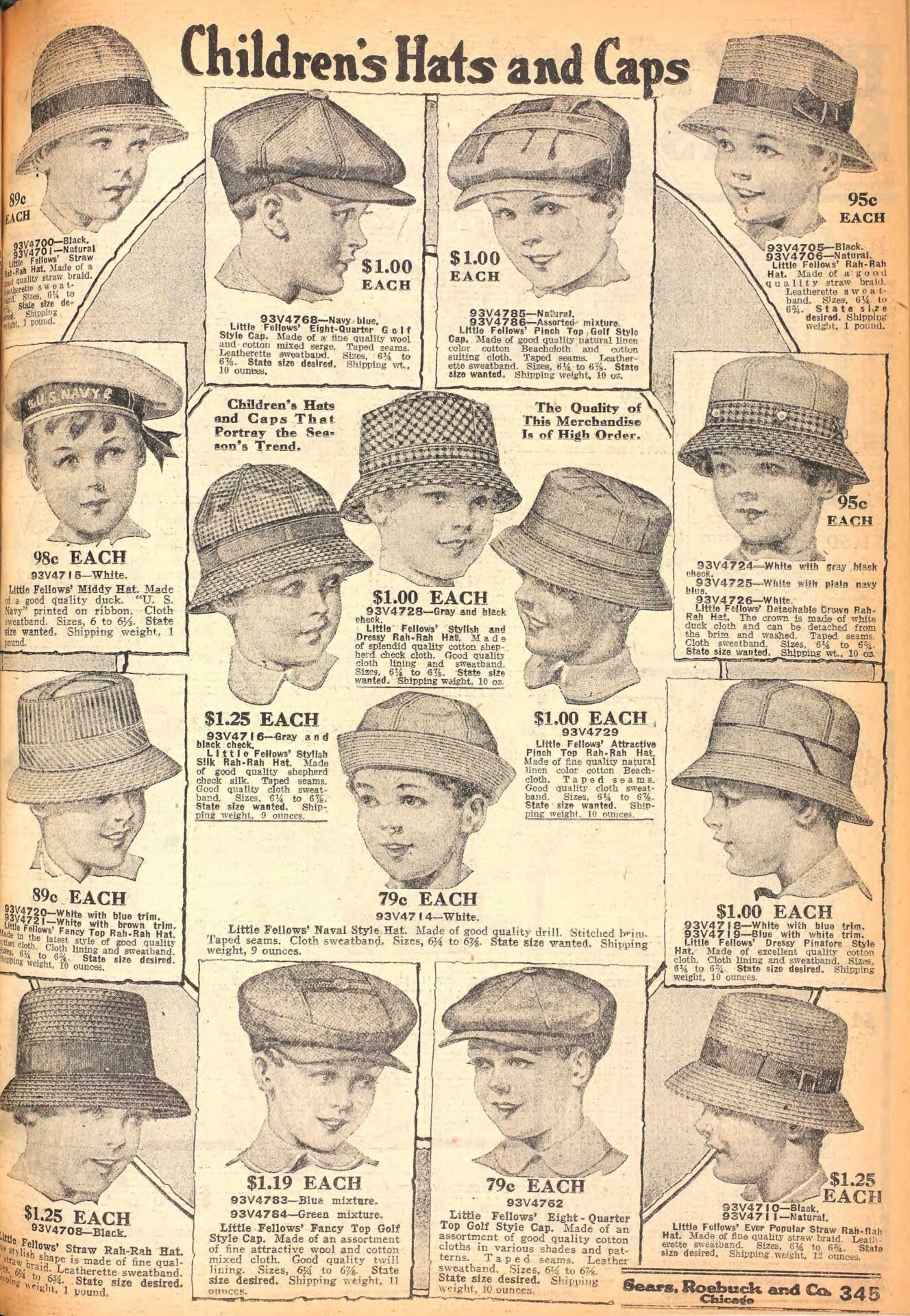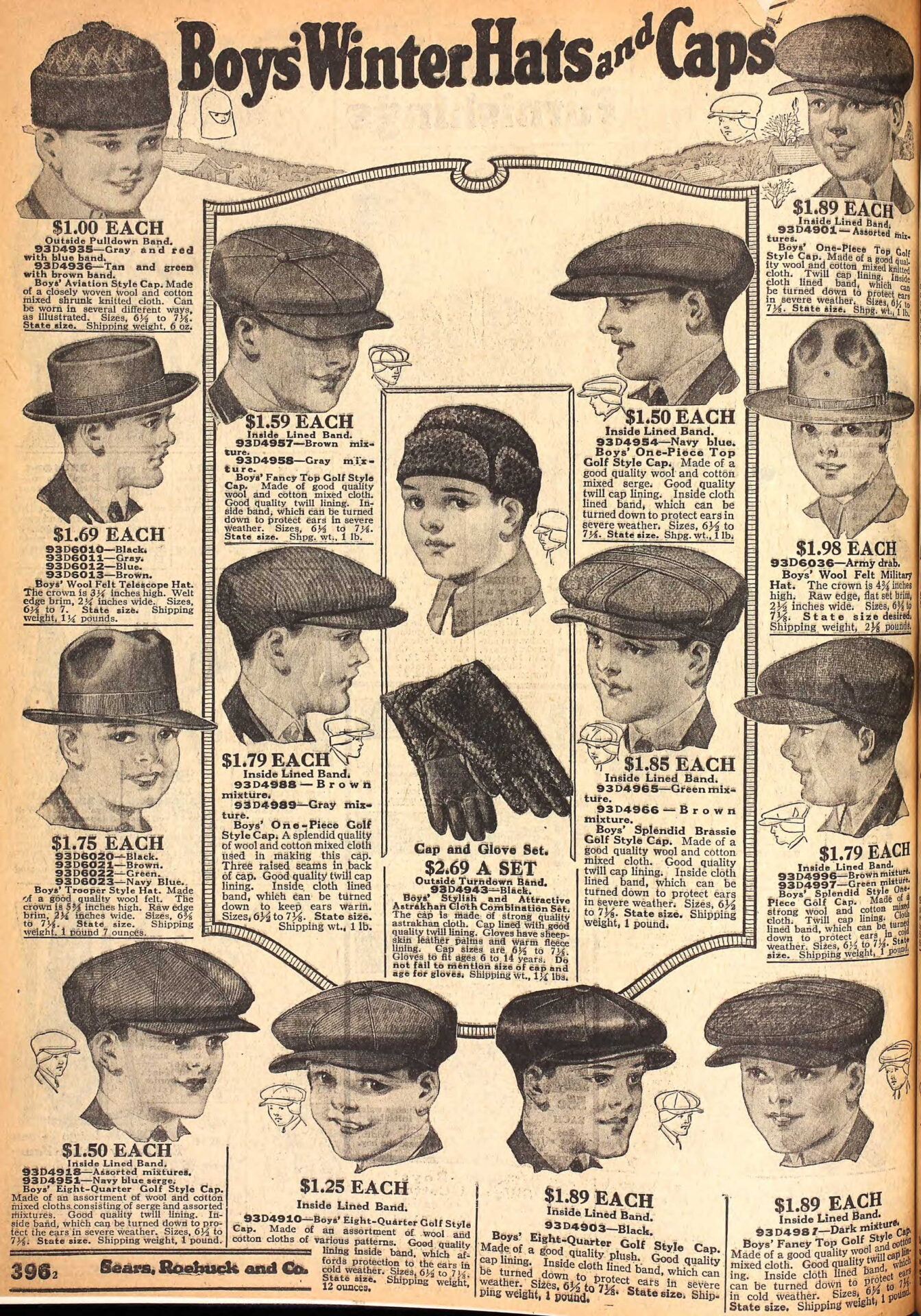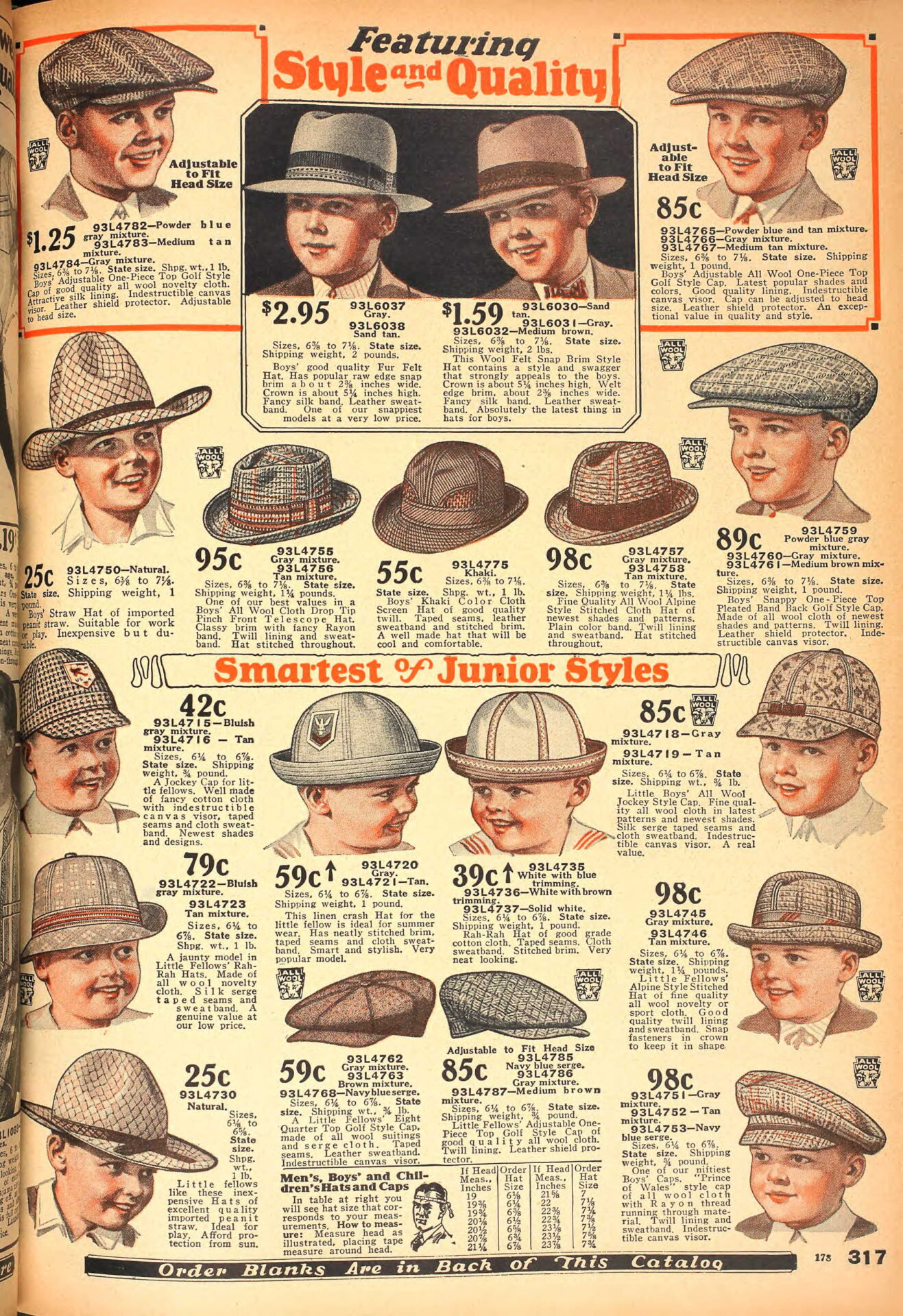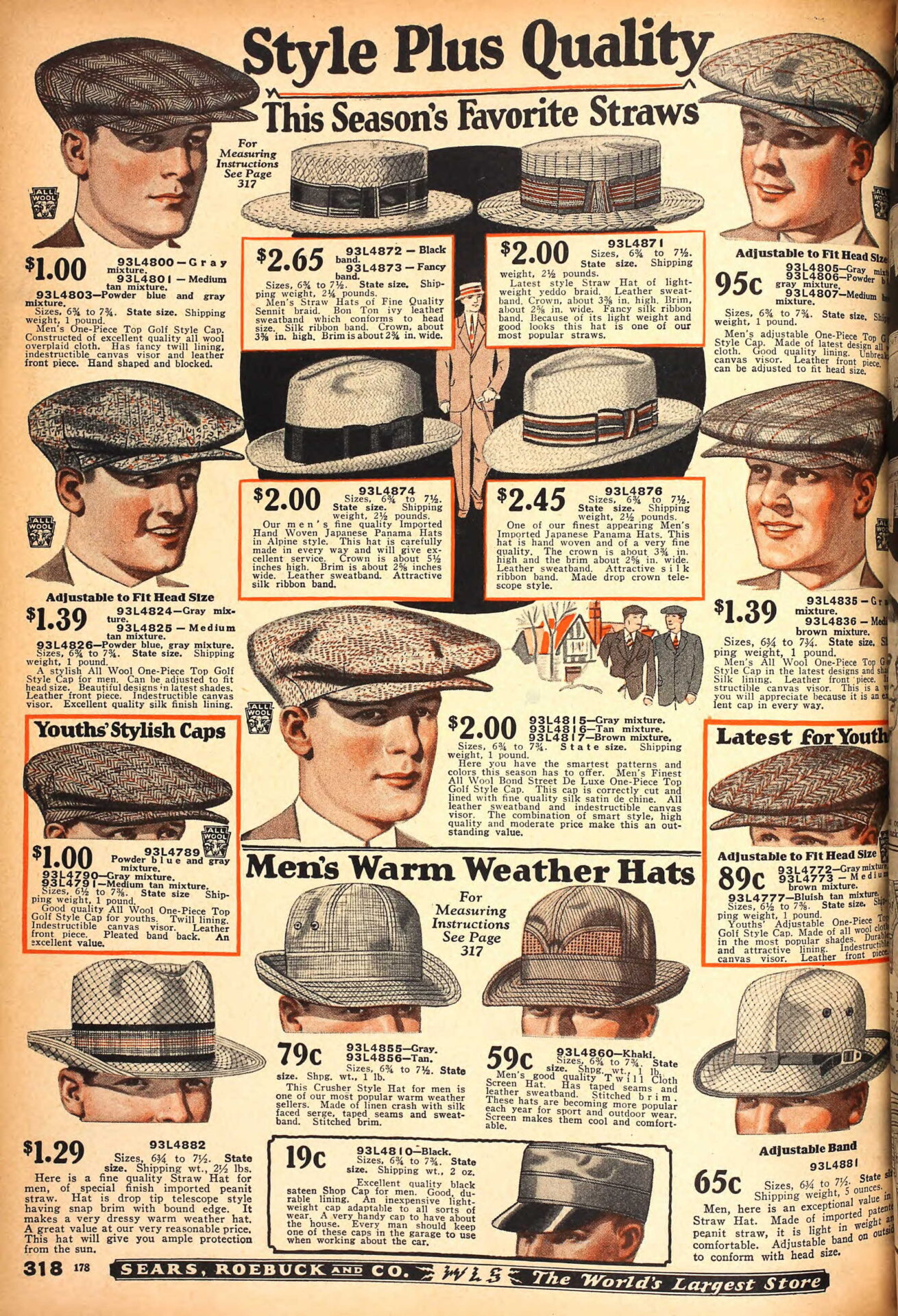The 1920s was a period of great change, and this was reflected in the fashion of the time. In particular, 1920s children’s clothing underwent a dramatic transformation, with styles becoming more functional and practical while also being cute and stylish.
Let’s take a look at some of the most popular items of 1920s clothing for both boys and girls.
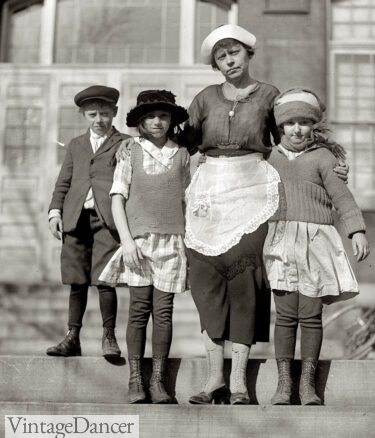
Three well dresses children in the 1920s (winter) and their nanny
1920s Girls Clothing
Girls ages 3 to 12. For teenage girls read this article.
Most young girls wore dresses, daily. Dresses were worn with cotton stockings or tall socks, a pair of boots or low heel shoes, a knit sweater or heavy coat in winter and sometimes a hat. There were nicer dresses for church or parties and everyday cotton dresses for playing and school.
The most common form of daytime dress for young girls in the 1920s was the drop waist slip over dress. These were made from lightweight material such as cotton or linen, in colorful small prints, which allowed for plenty of movement and comfort.
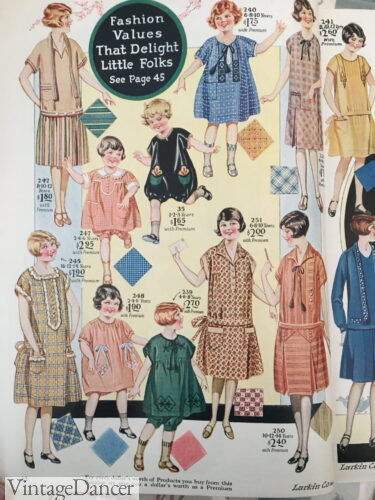
1926 girls clothes for all ages
Girls 1920s dresses featured large pockets, often decorated with lace or embroidery, whose length reflect a girls age. Toddler wore dresses at mid thigh. School age girls wore dresses at the knee. Older girls and teens wore dresses below the knee.
For special occasions such as weddings, church or parties, girls would wear dresses constructed from luxe fabrics like velvet or satin. These often feature big ruffles and bow tie waistbands. All white dresses were worn for church confirmation, graduation and summer parties.
The only time a girl could wear pants was as sportswear and playtime. These were breeches or knicker pants that capped at the knee and worn with tall socks. Bloomer shorts were bagged knee length pants worn for gym class and team sports.
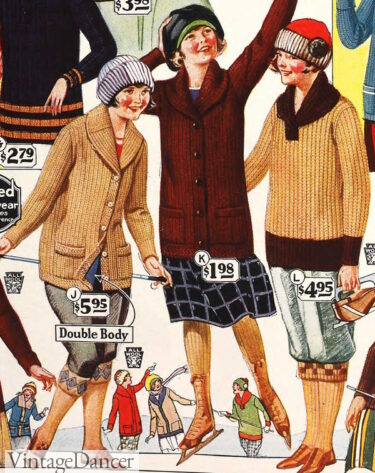
1925 girls snow plan clothes with breeches or skirt
In terms of underwear, young girls in the 1920s usually wore a chemise under their dress; this was essentially an undershirt made from lightweight fabric such as cotton muslin or batiste that buttoned up at the front.
Bloomer style underwear was pair with the chemise top. A one piece slip covered underwear to create a smooth line under the outer dress. More about 1920s lingerie.
Girls also wore stockings year round. Knitted stocking were thigh high and held up with buttons, safety pins or garter clips attached to a training corset or vest. Tall socks were an alternative to stockings. Only young girls in the heat of summer could be bare legged.
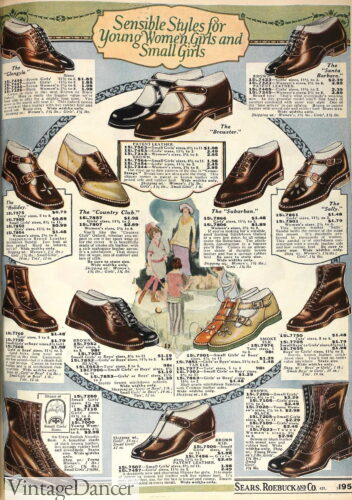
1923 girls shoes
Girls shoes varied a little by age but generally matched those of women’s shoes without heels. Lace up oxfords were ideal for casual outfits. Strappy mary jane or T bar shows were prettiest with dresses. Lace up boots were worn in winter. Canvas sneakers, like Keds, were worn for gym class. More about 1920s shoes.
View the slideshow. Use the left and right arrows to see all the images.
1920-1923 girls clothes
Early 1920s girls clothing was still in the style of WW1 era (1914 +). Dresses were wide and loose- very doll like whereas post 1924 is when the drop waist went mainstream. For girls the drop waist happened before women’s fashion followed the girly look trend.
The second half of the 1920s saw girls dresses match those of women’s fashion. Girls dresses were still loose but narrow and straight fitting on the body.
1924-1929 girls clothes
Boys Clothing: 1920s-1923
Young boys in the early 1920s wore a mix of playclothes, work clothes and short pants suits. Once they turned into teenagers they graduated to long pants.
What did little boys wear in the 1920s?
Play clothes were rompers and reefers for the youngest boys. Older boys wore overalls and coveralls or knicker pants and a shirt (called a blouse.)
- 1926 little boys
- 1927 boys all ages
Older boys in the Roaring Twenties favored suits made from sturdy fabrics like tweed or wool. The style was typically classic with trousers that had cuffs at the ankles paired with long-sleeved jackets featuring wide lapels and buttons down the front.
Younger boys also wore suits with short pants called knickers and tall socks. It wasn’t until a boy was around age 12 that he graduated into long pants.
Boys of all ages wore knitwear, that is sweaters and cardigan jackets. They were brightly colored with bold patterns. Overcoat jackets were a more formal winter coat but very warm. The short Mackinaw jacket was the best for active boys while older boys wore overcoats like their fathers.
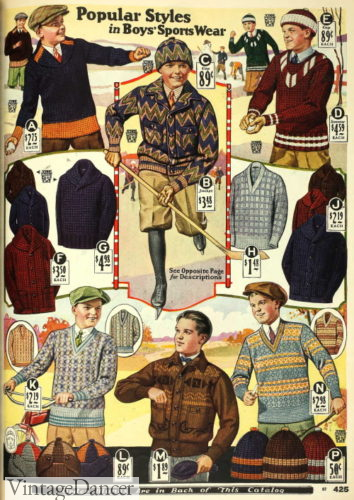
1927 boys knitwear
Many boys around age 10 started to work instead of attending school. They wore sturdy denim overalls, wool pants, heavy flannel shirts and lace up work boots. Flat caps were worn by all boys year round.
Common accessories included suspenders (worn under jackets) and felt hats (fedora) that matched their suits perfectly.
To complete their outfits, boys wore lace up leather oxford shoes and boots. Sportswear called for canvas sneakers similar to Converse classic shoes.
Boys wore knitted union suits (long johns) underneath their trousers; these were usually made from pure wool to keep them warm during cold weather months! Sleeveless and short leg union suits made of cotton or linen were cooler in the summer.
In summer, boys swimwear looked like a wresting onesis and were made of wool.
View the slideshow. Use the left and right arrows to see all the images.
Children’s clothing in the 1920s underwent a major shift towards practicality and comfort while maintaining sleek style elements too – something we can all still appreciate today!
Hopefully this article has given you some insight into what children wore during this iconic era. Please feel free to ask any question you have about 1920s children’s clothing.
#1920skidsclothing #1920sgirldresses #1920sboyssuits #1920sgirlsunderwear #1920sboysshoes
Debbie Sessions has been teaching fashion history and helping people dress for vintage themed events since 2009. She has turned a hobby into VintageDancer.com with hundreds of well researched articles and hand picked links to vintage inspired clothing online. She aims to make dressing accurately (or not) an affordable option for all. Oh, and she dances too.
